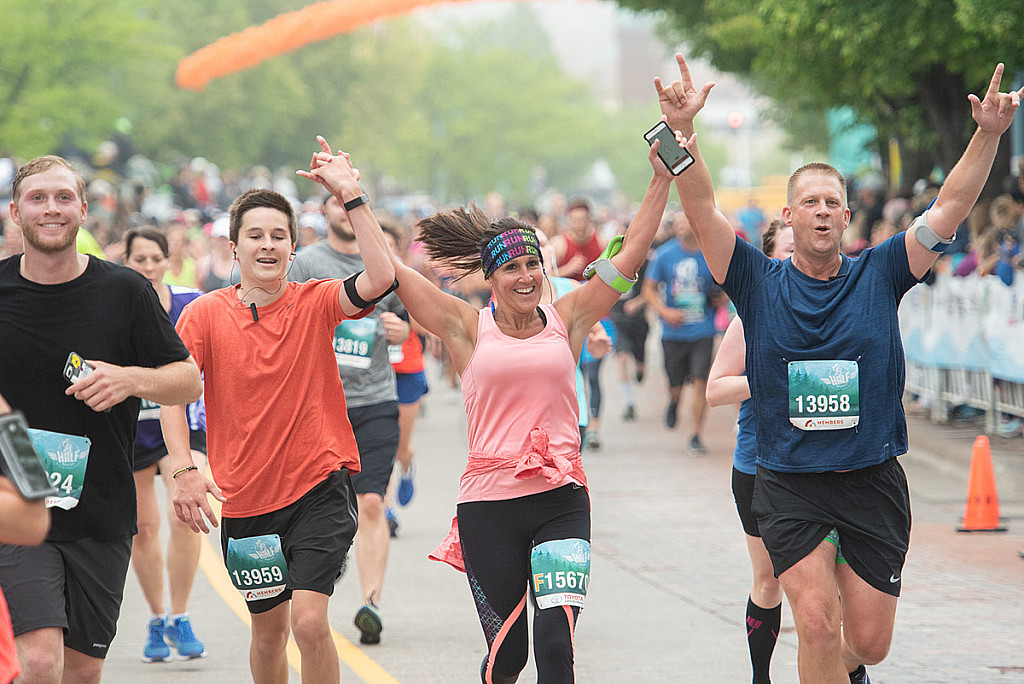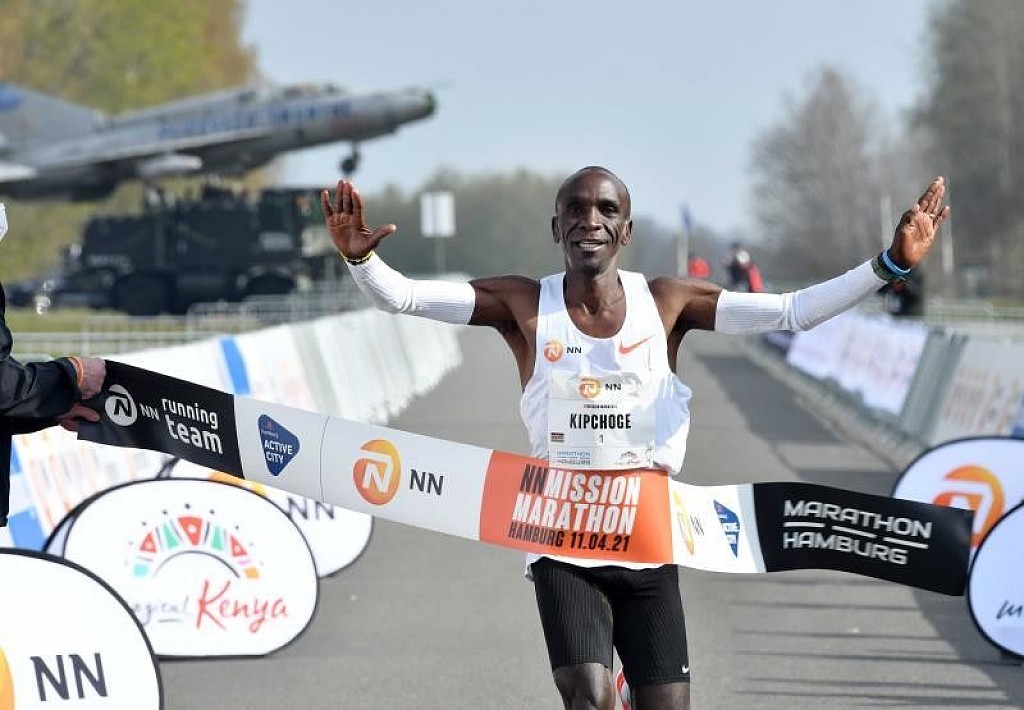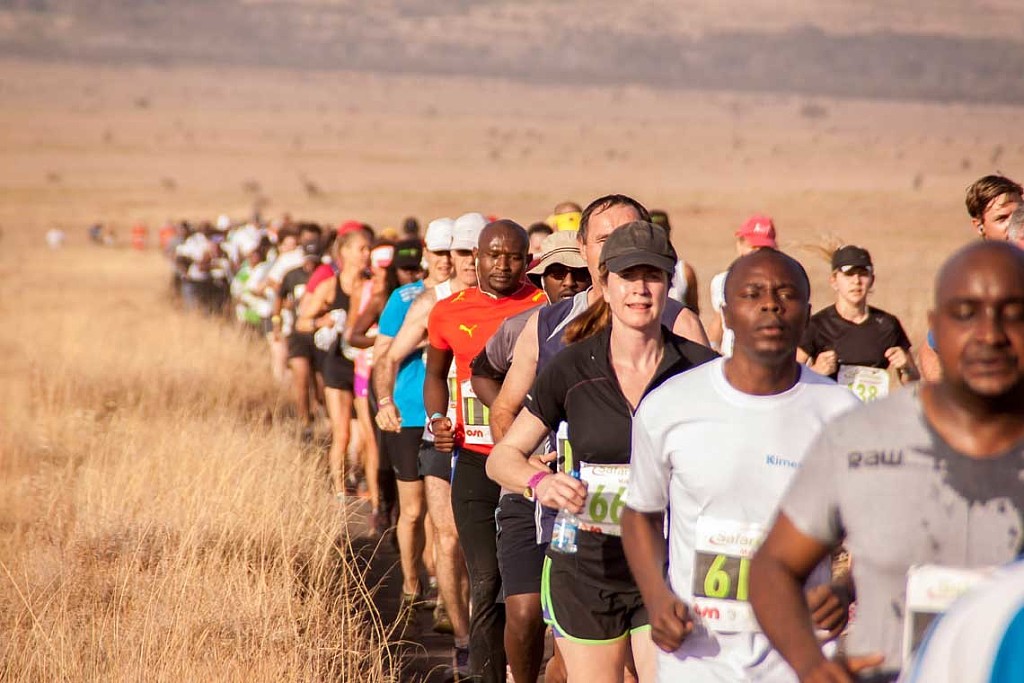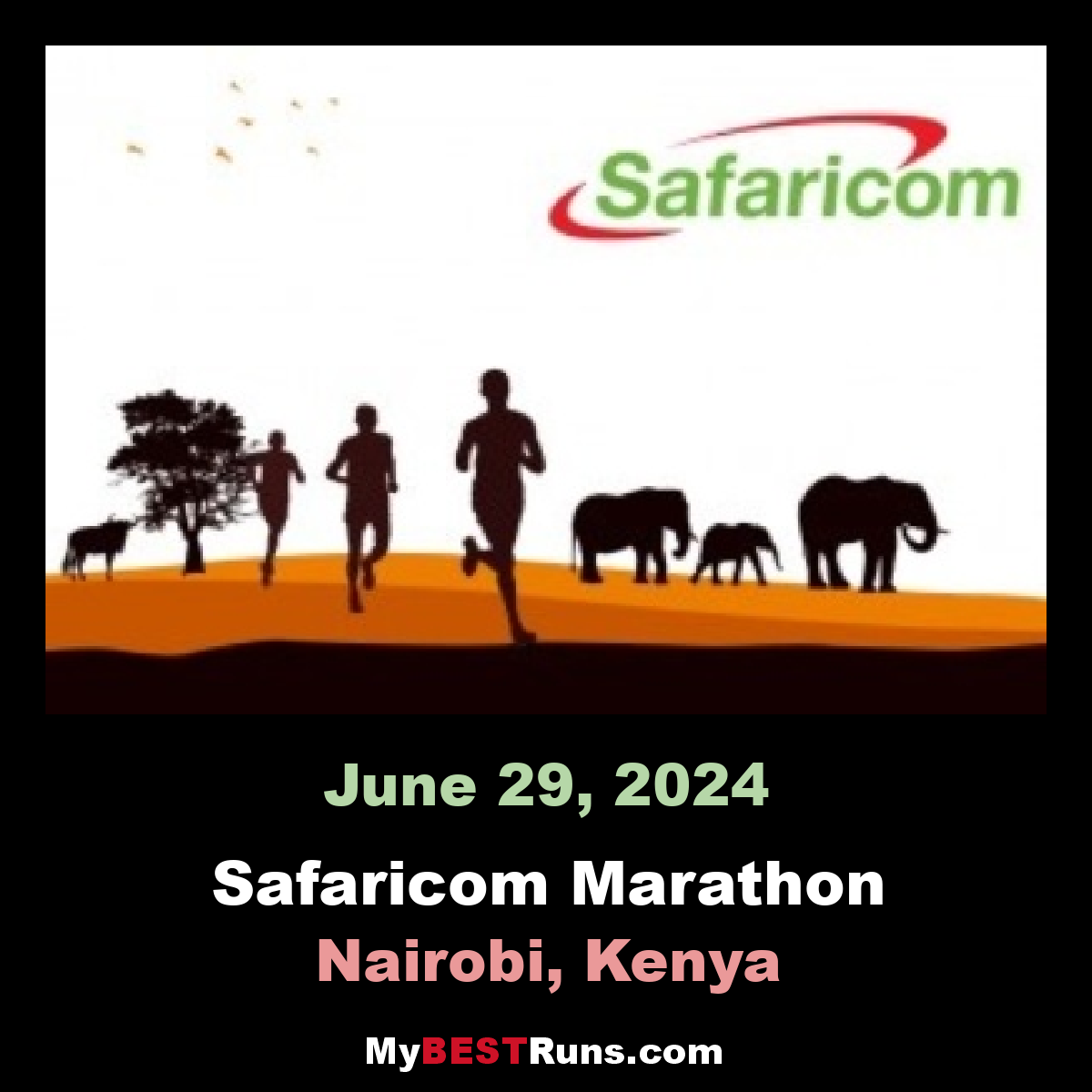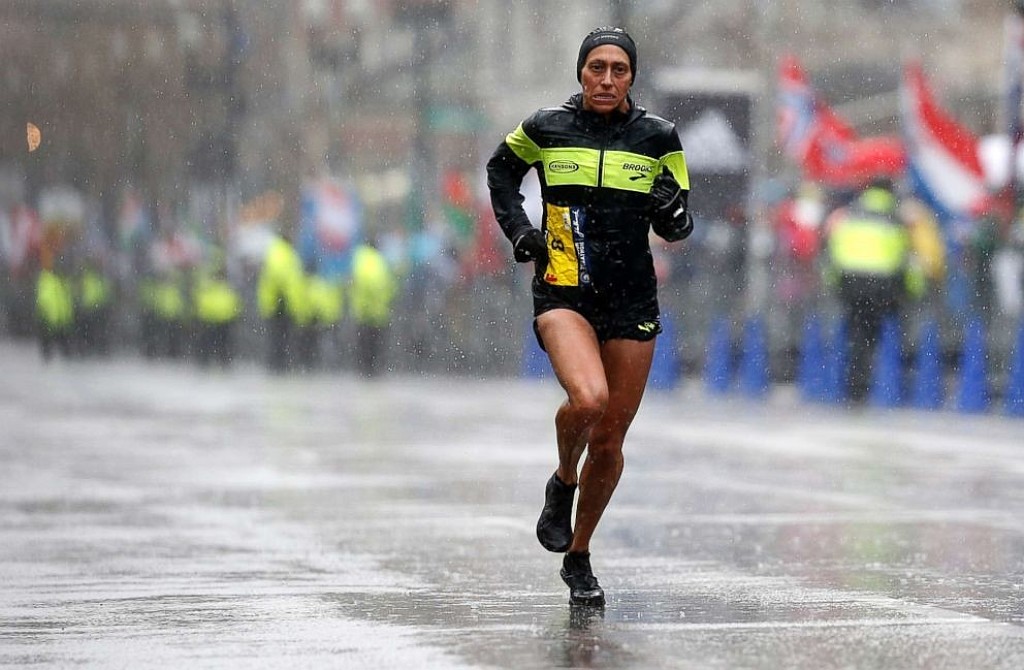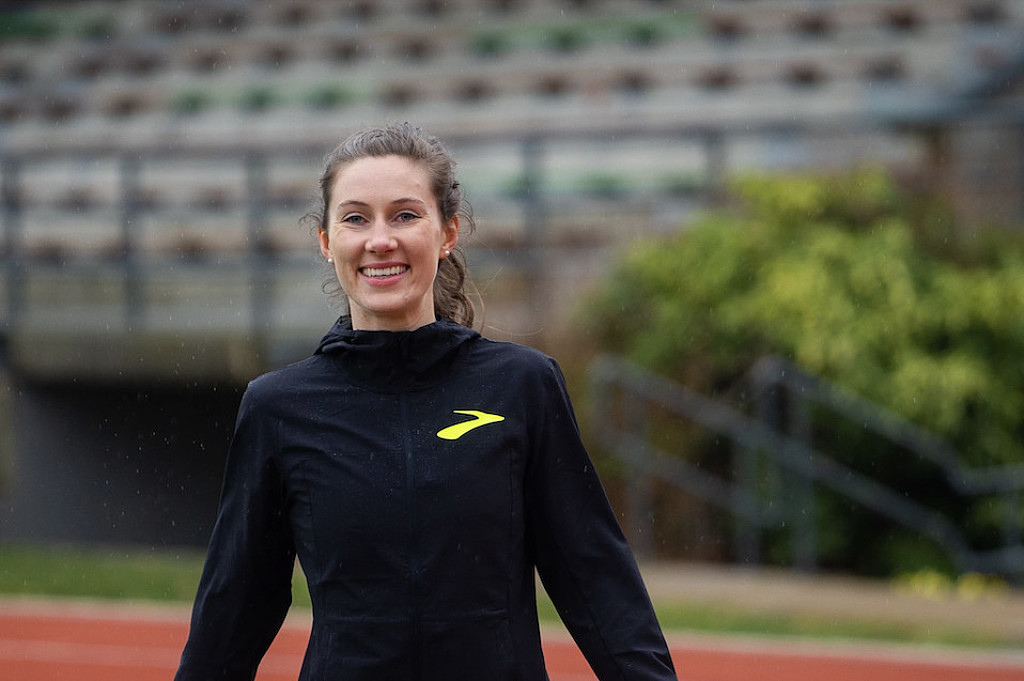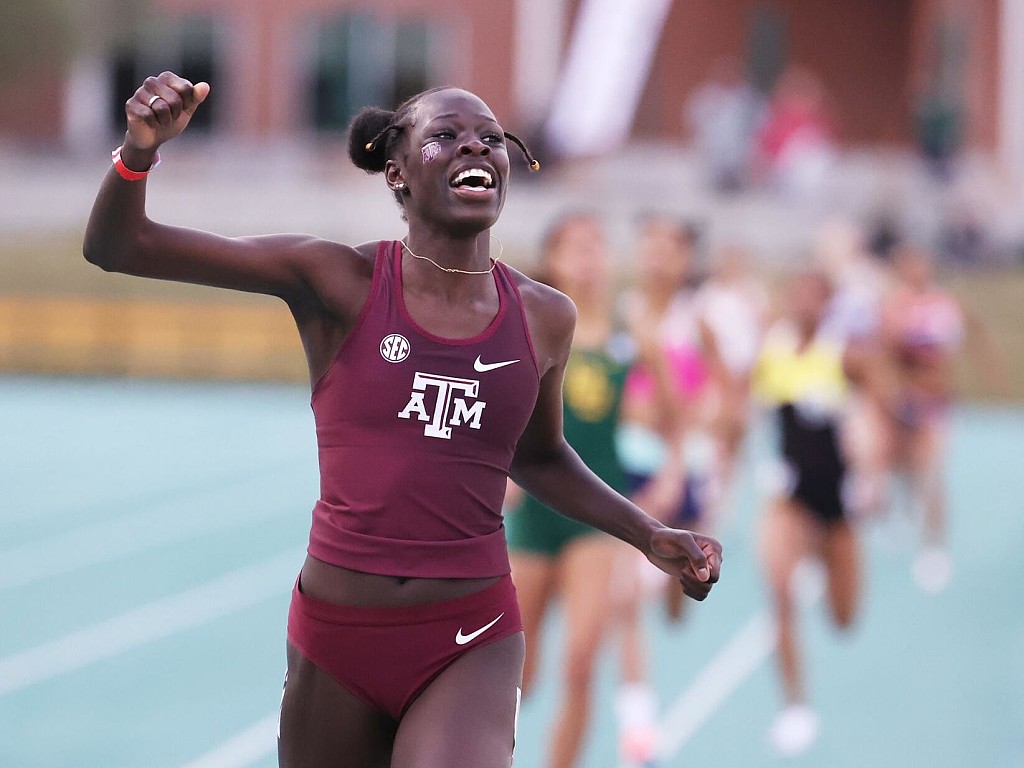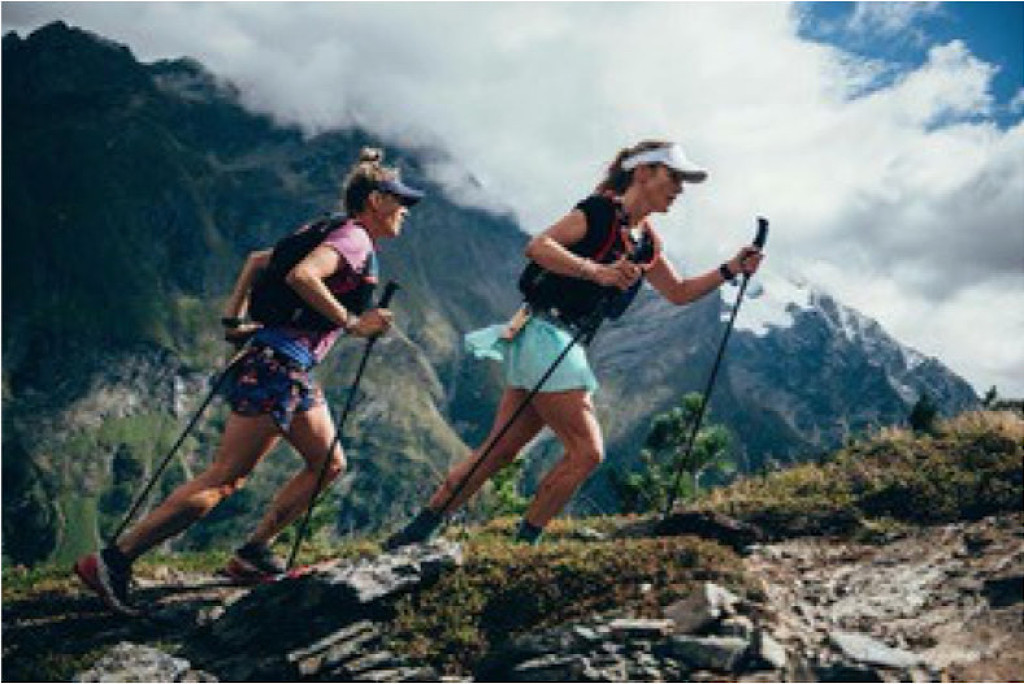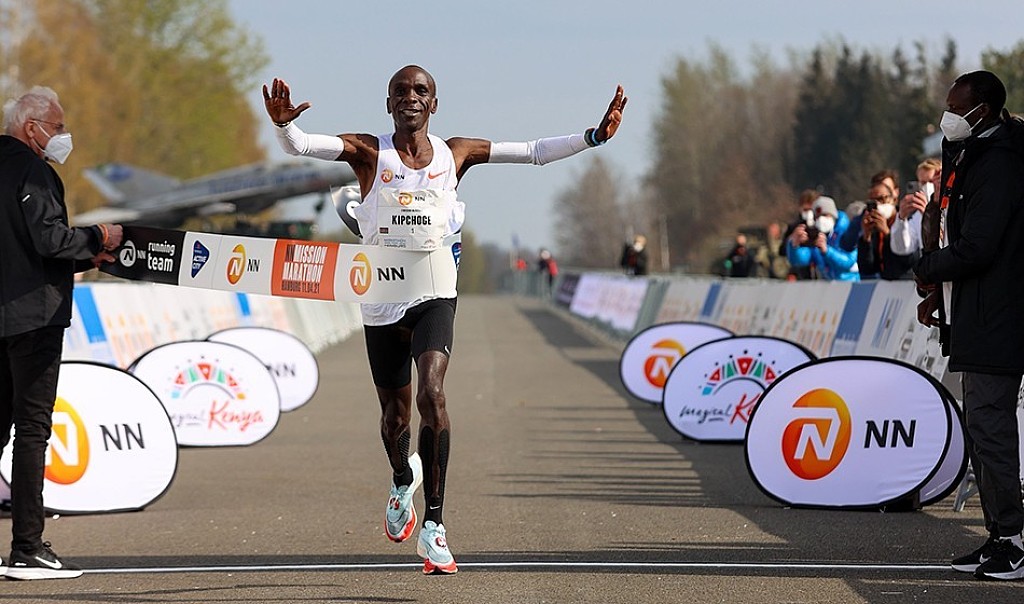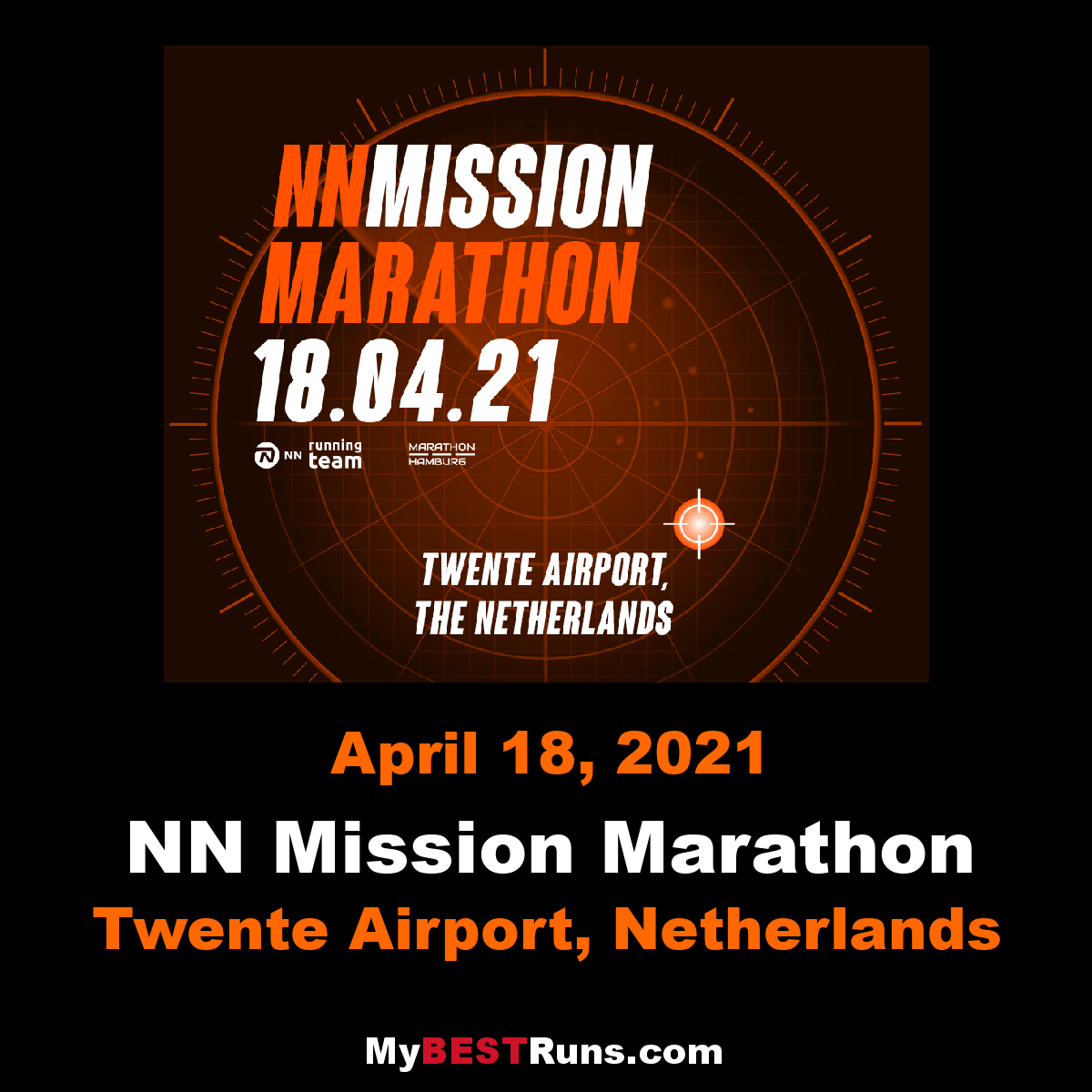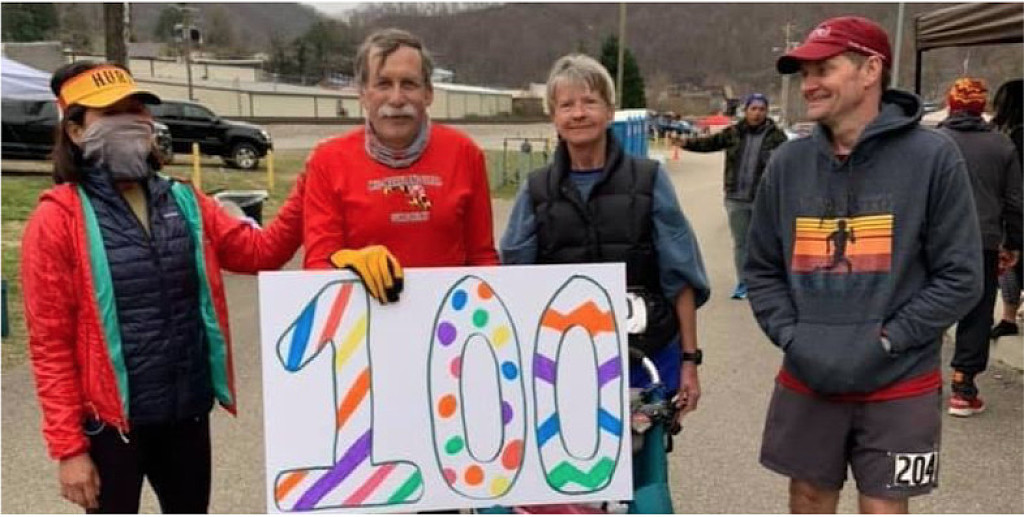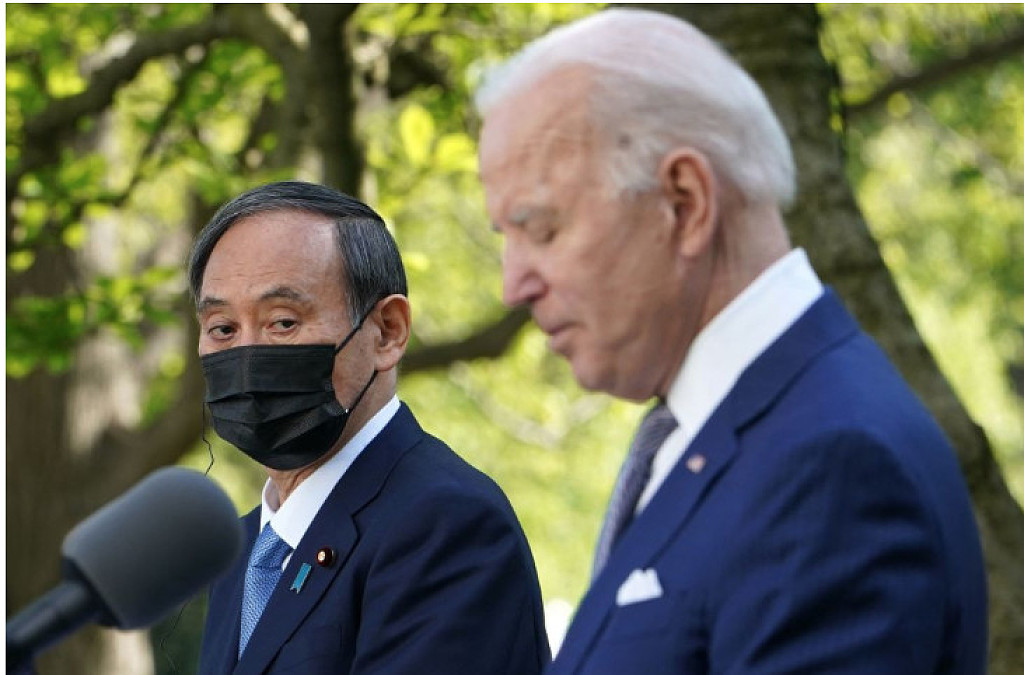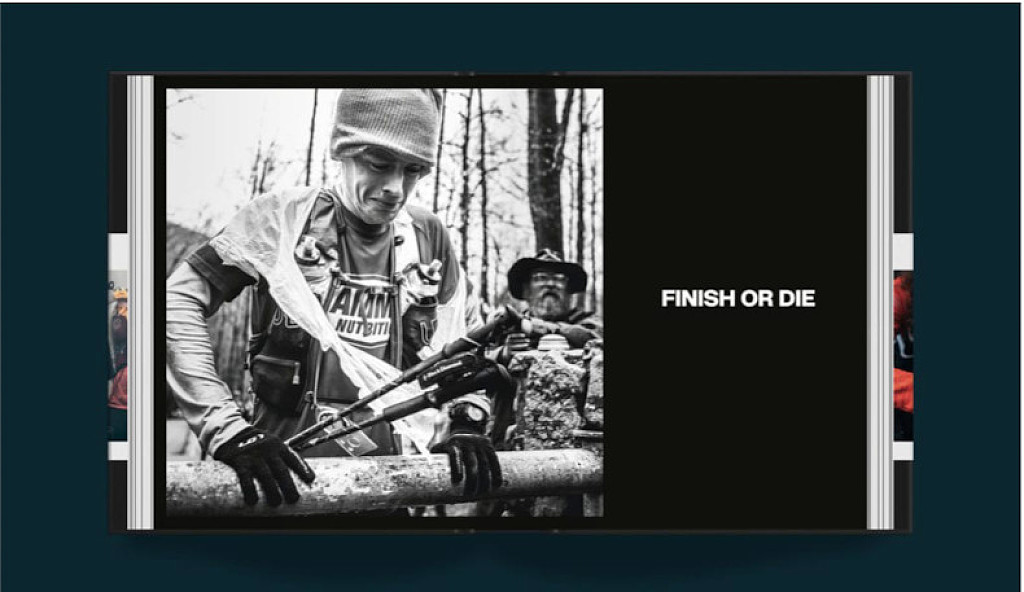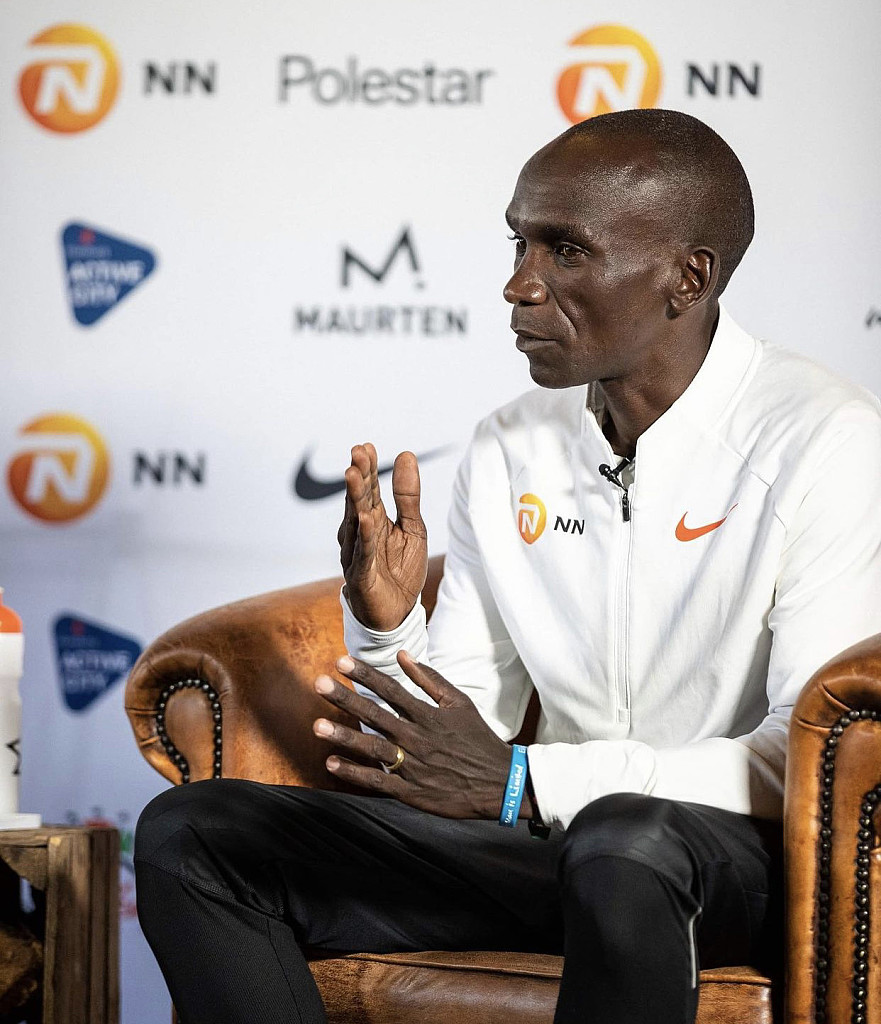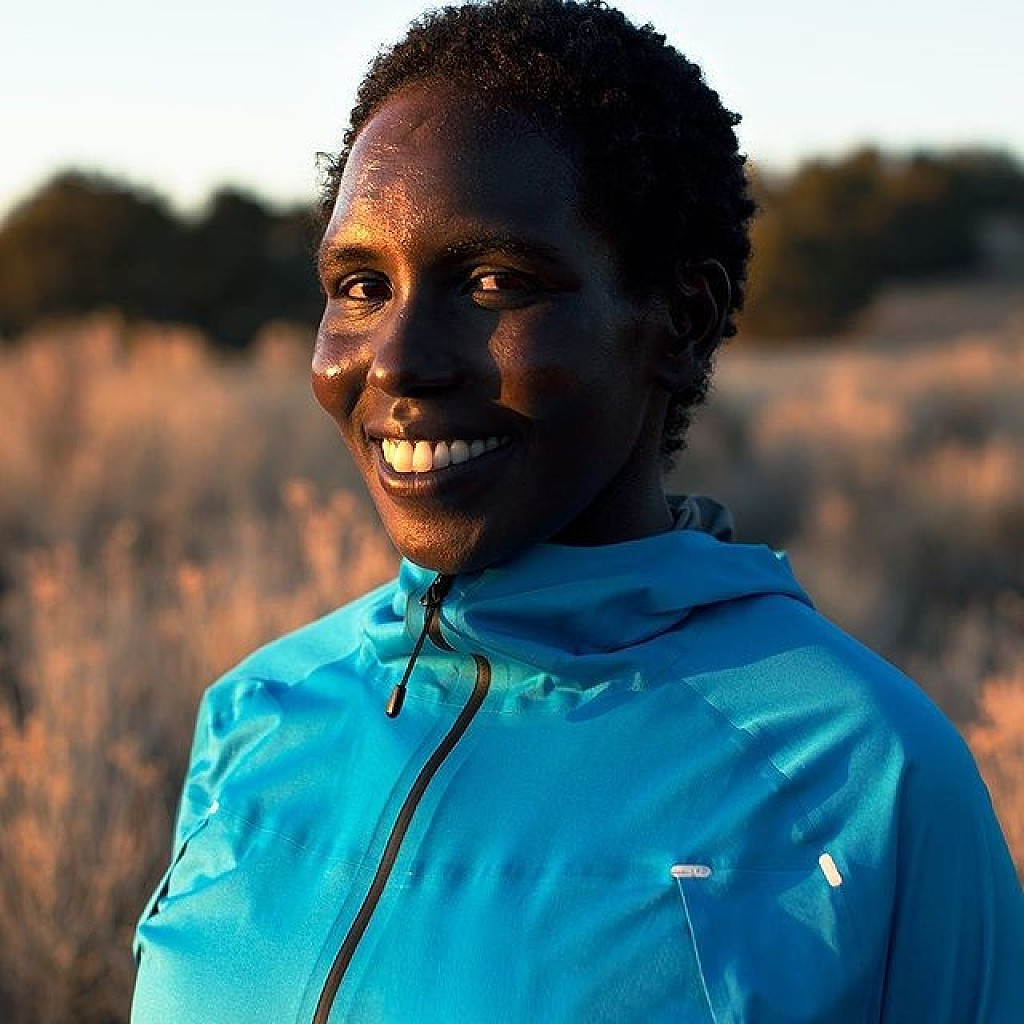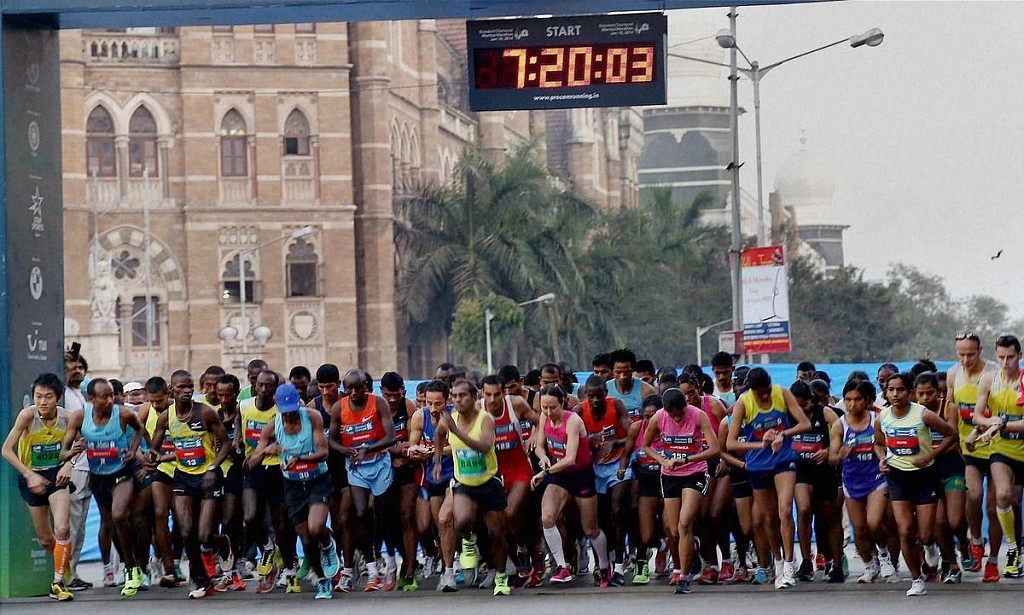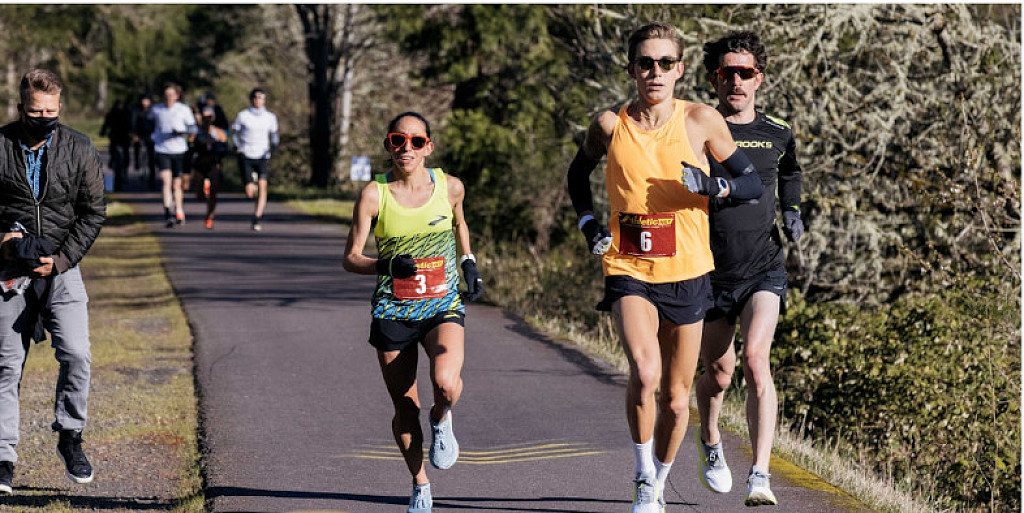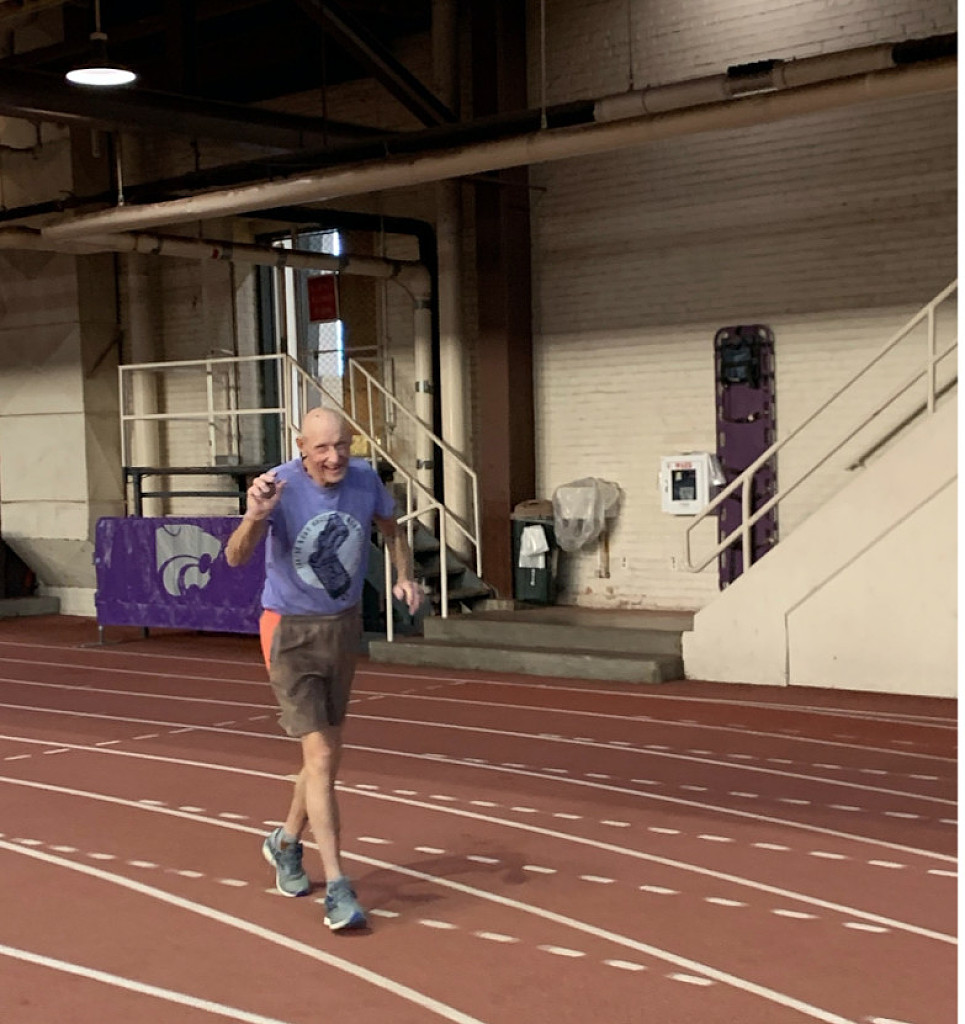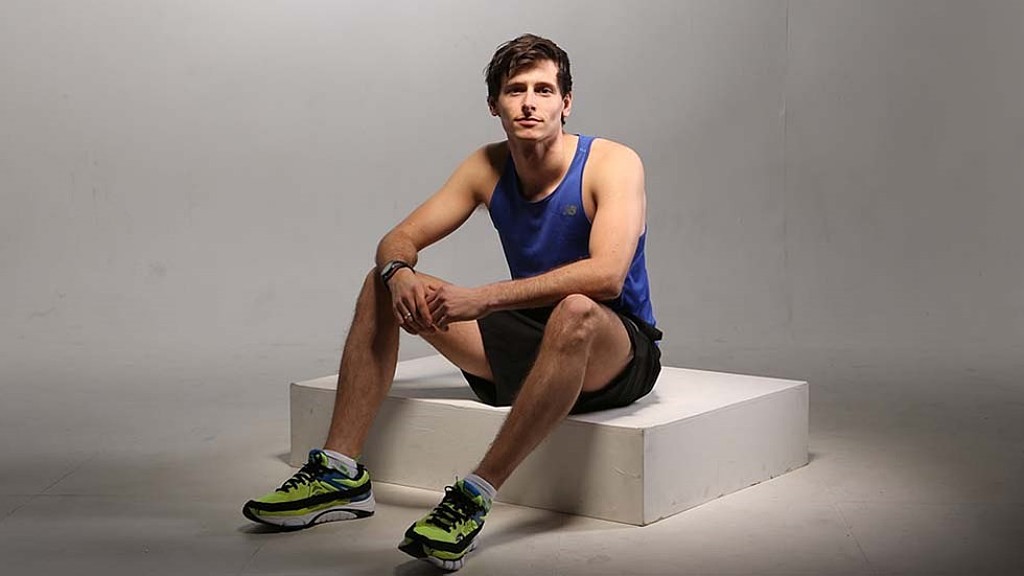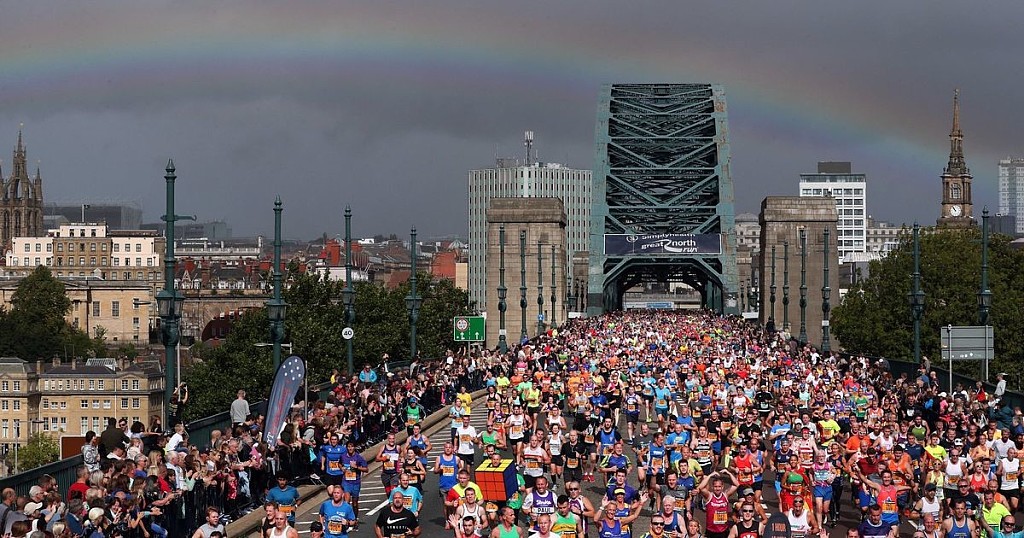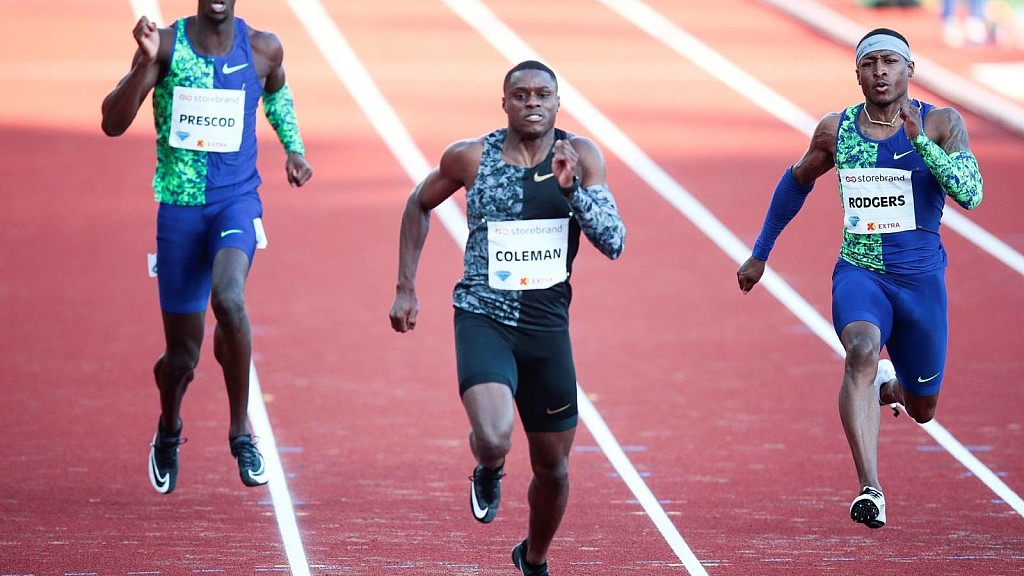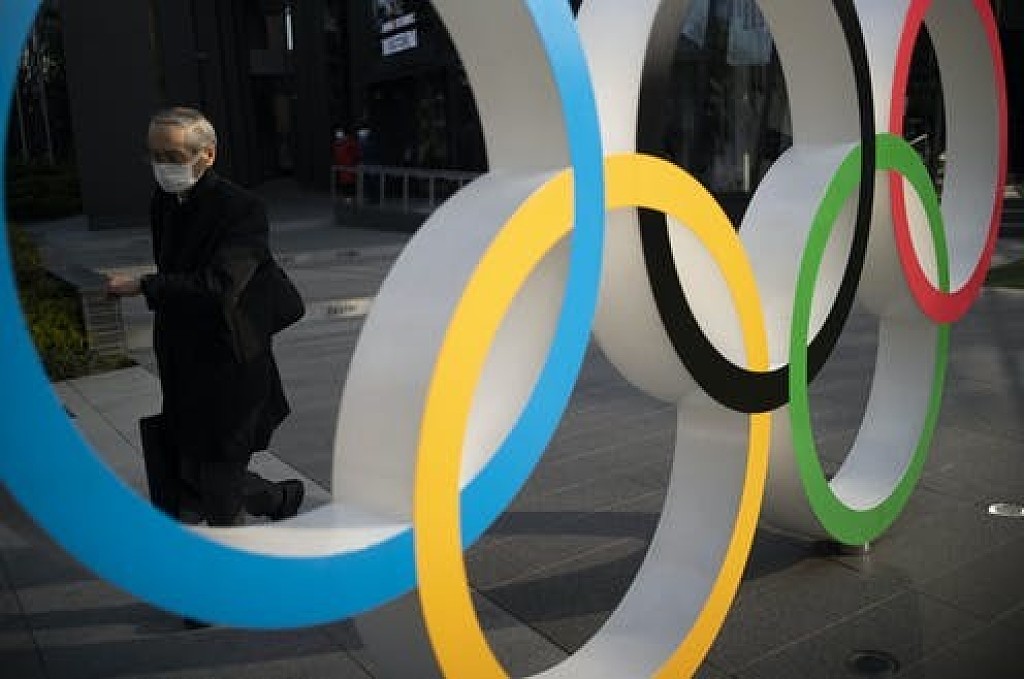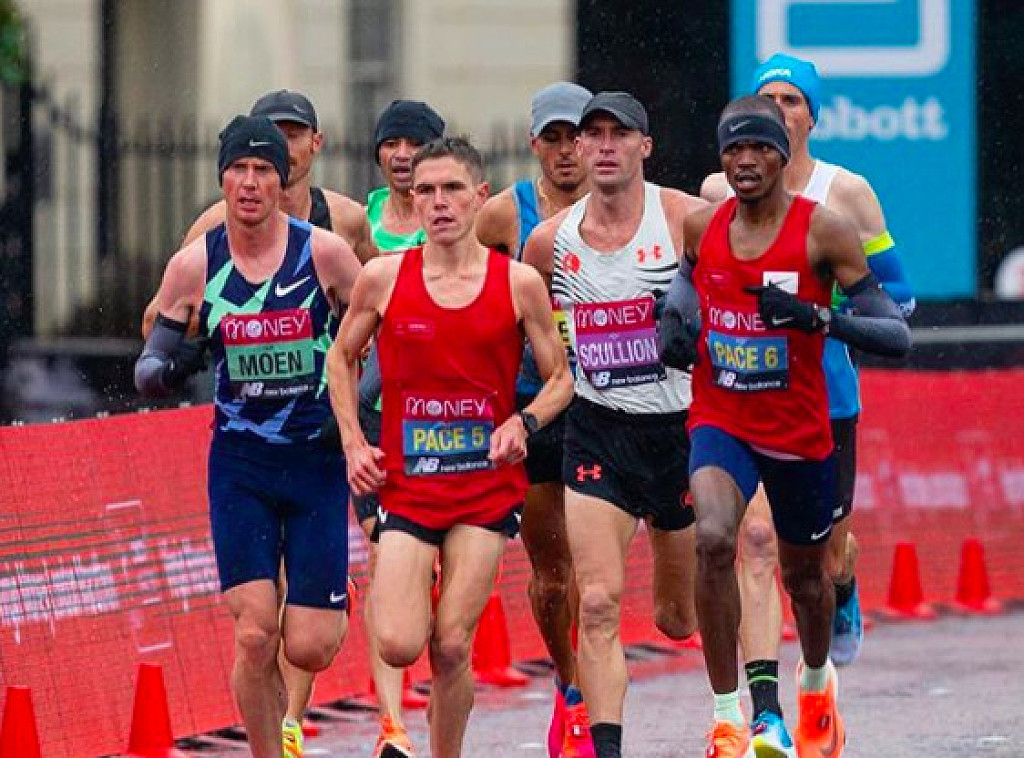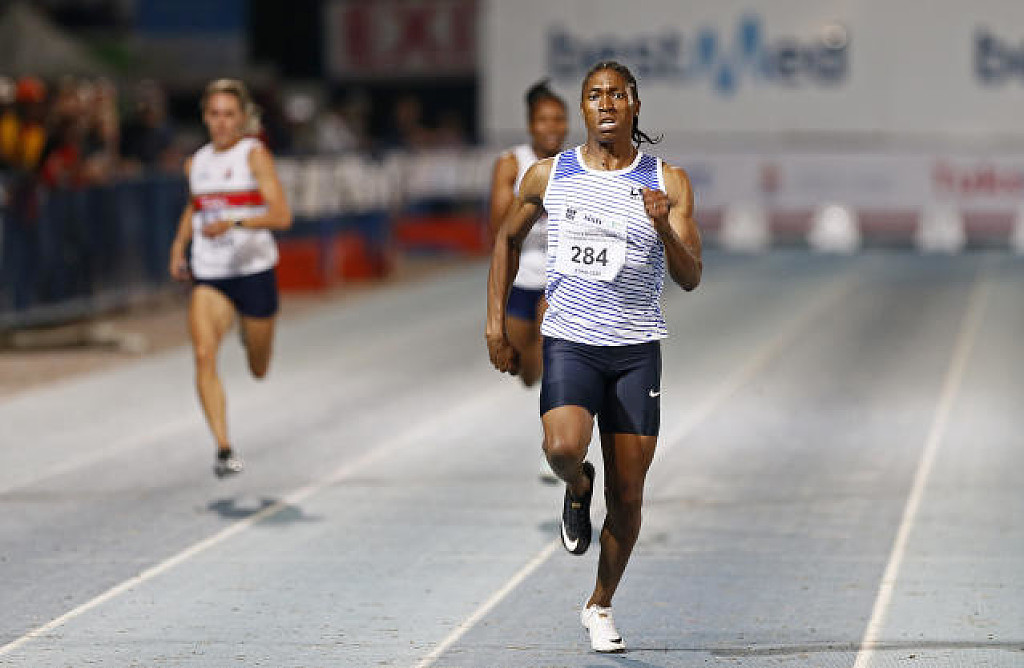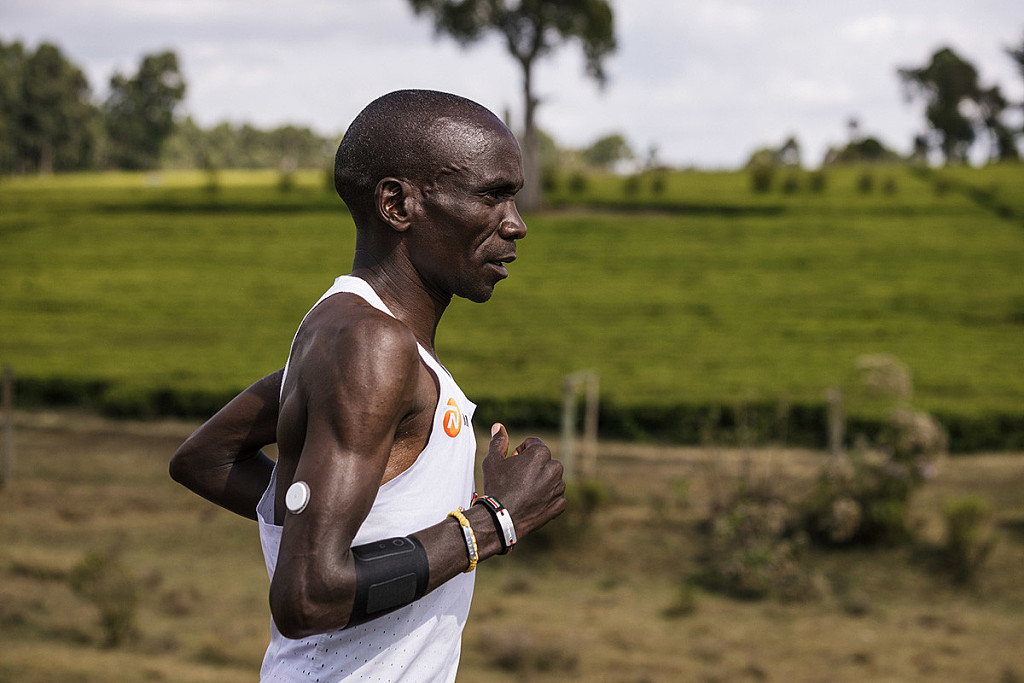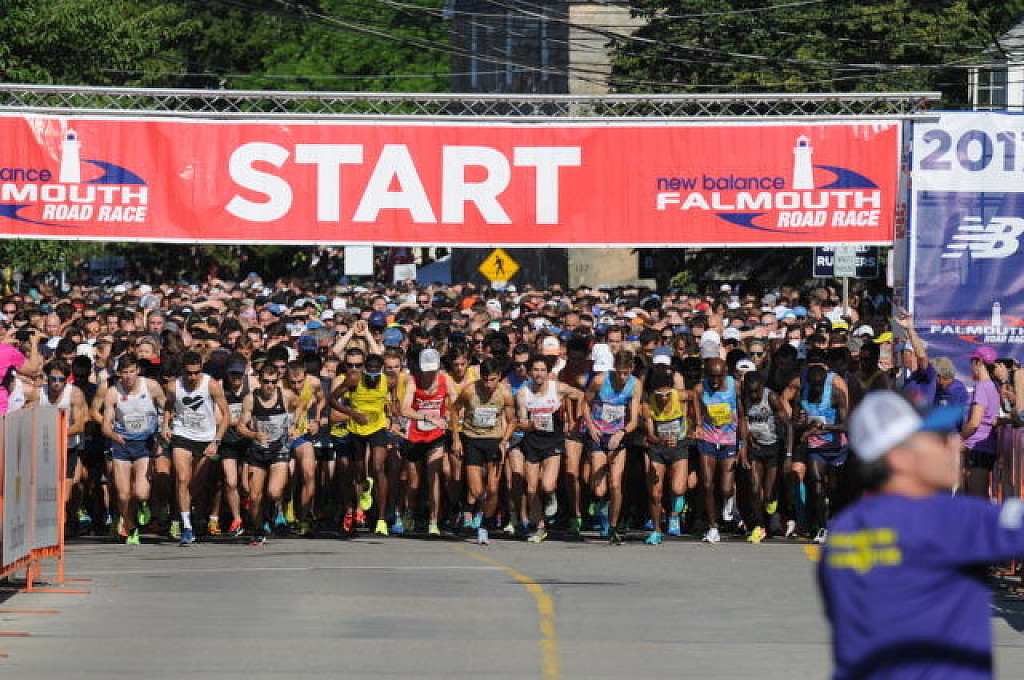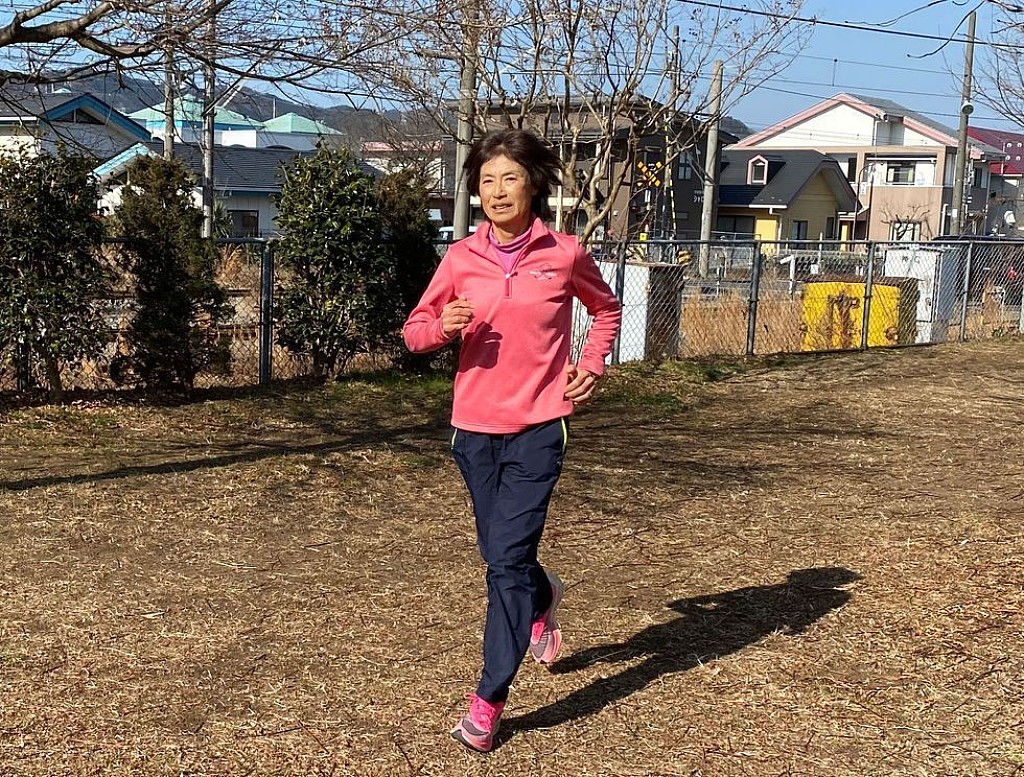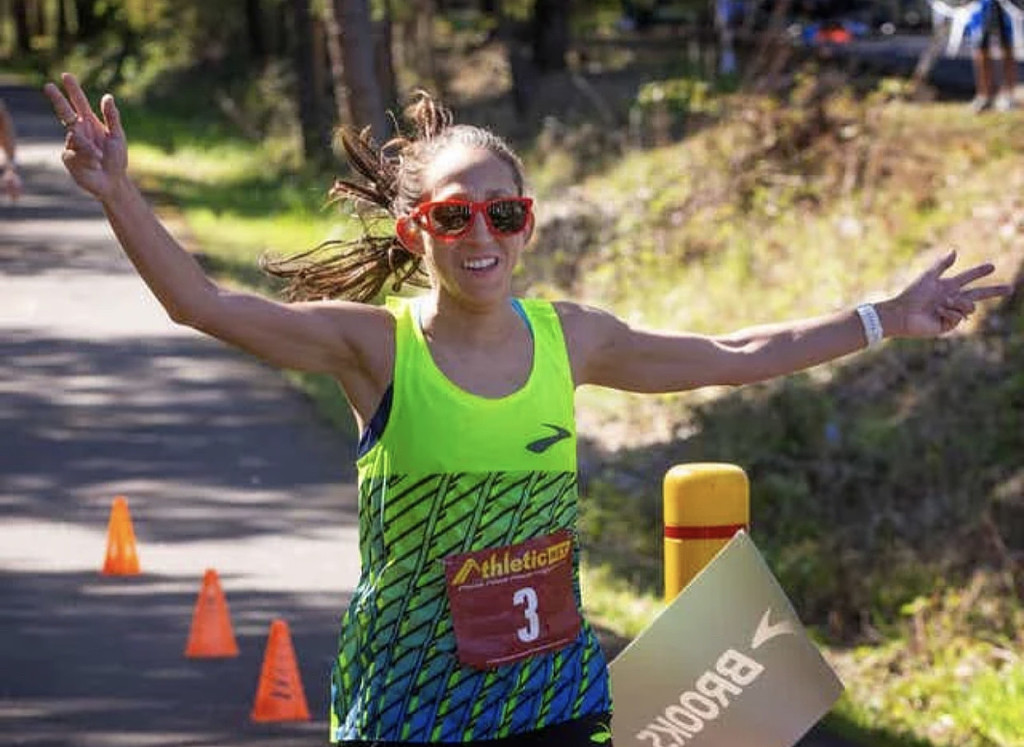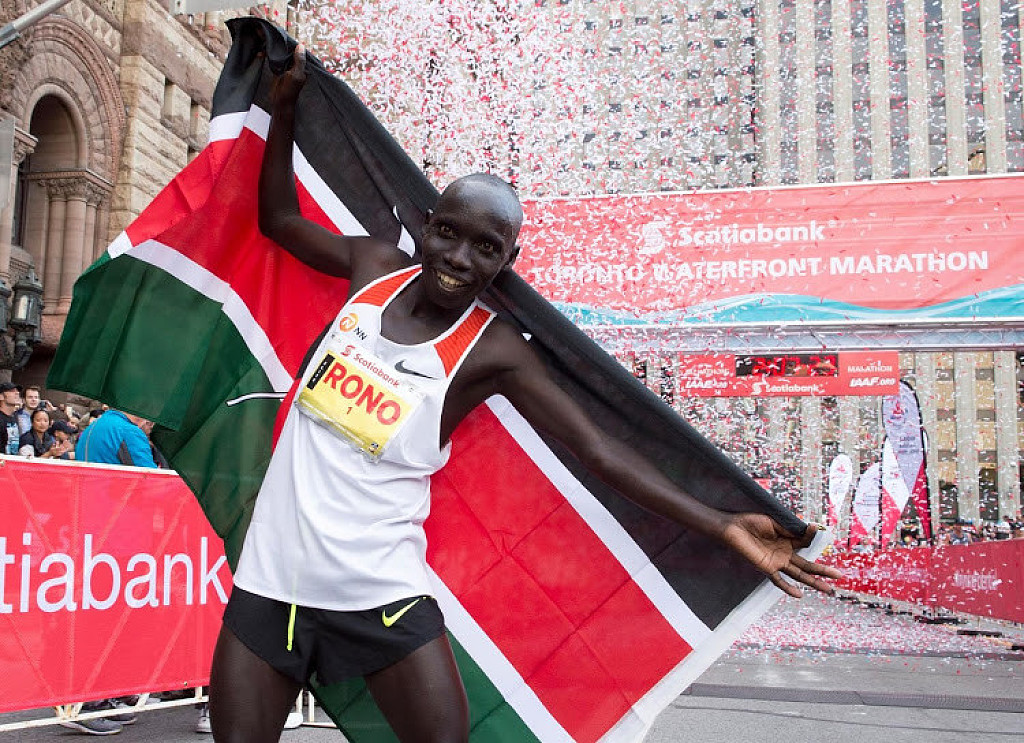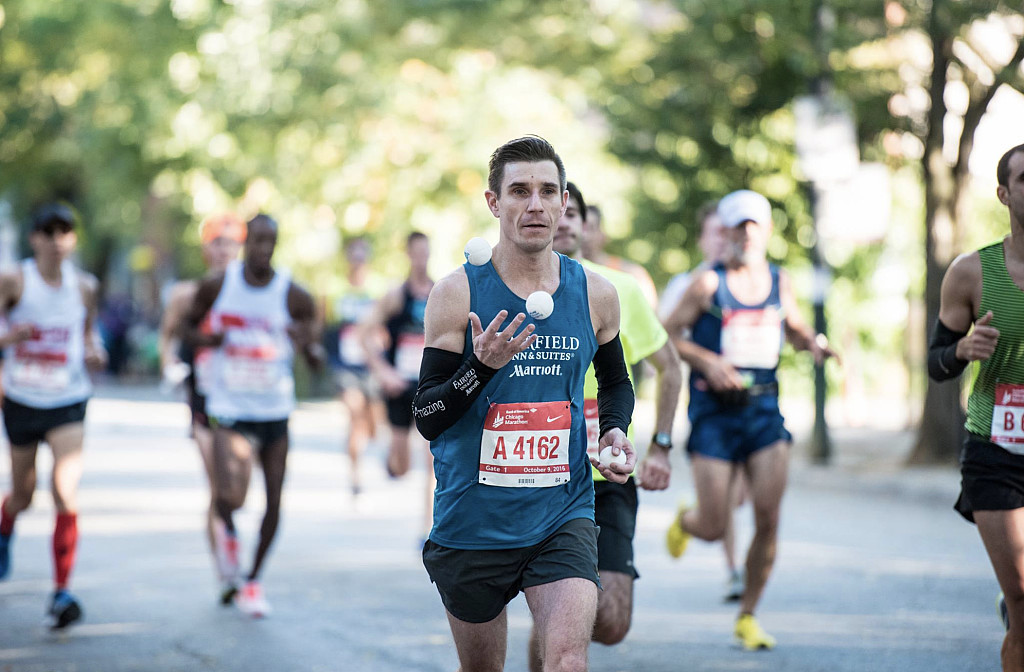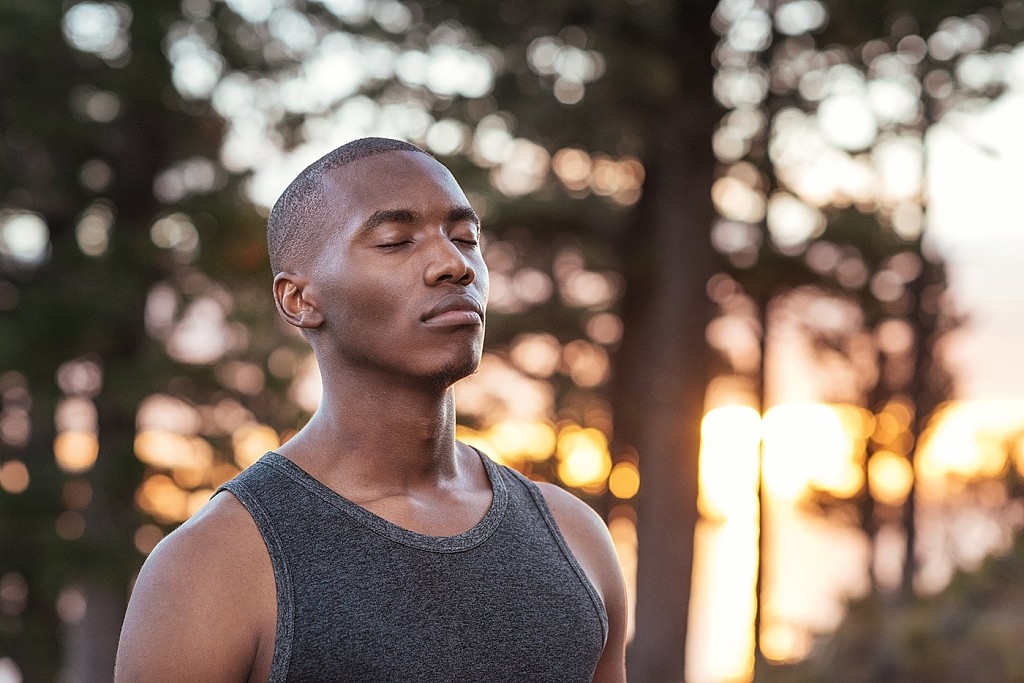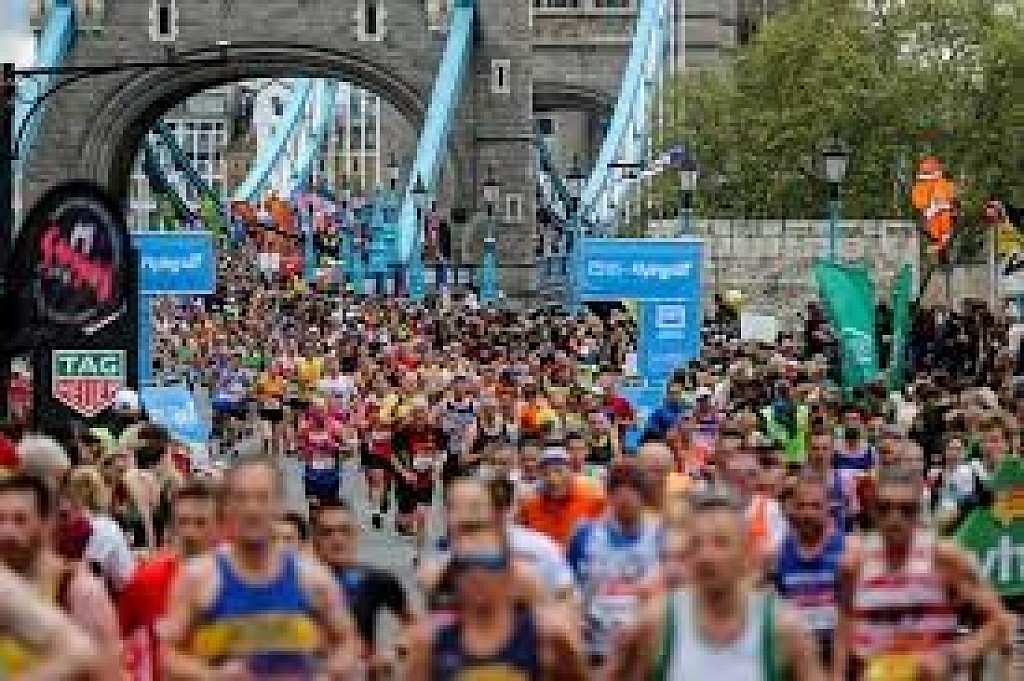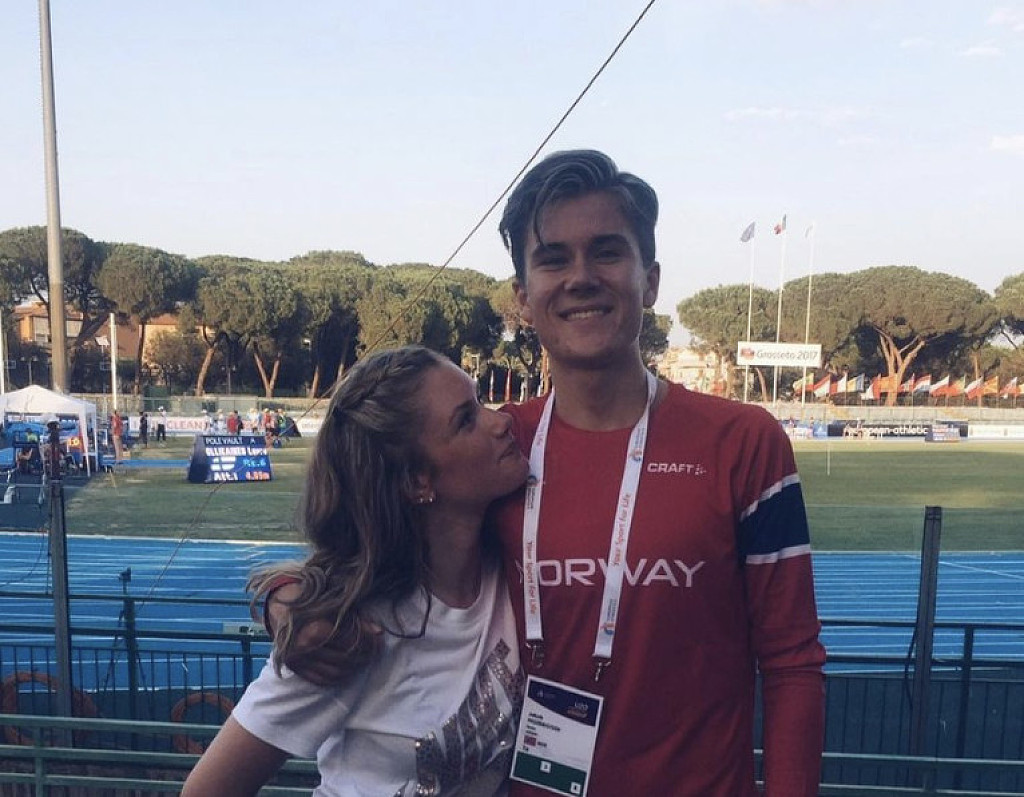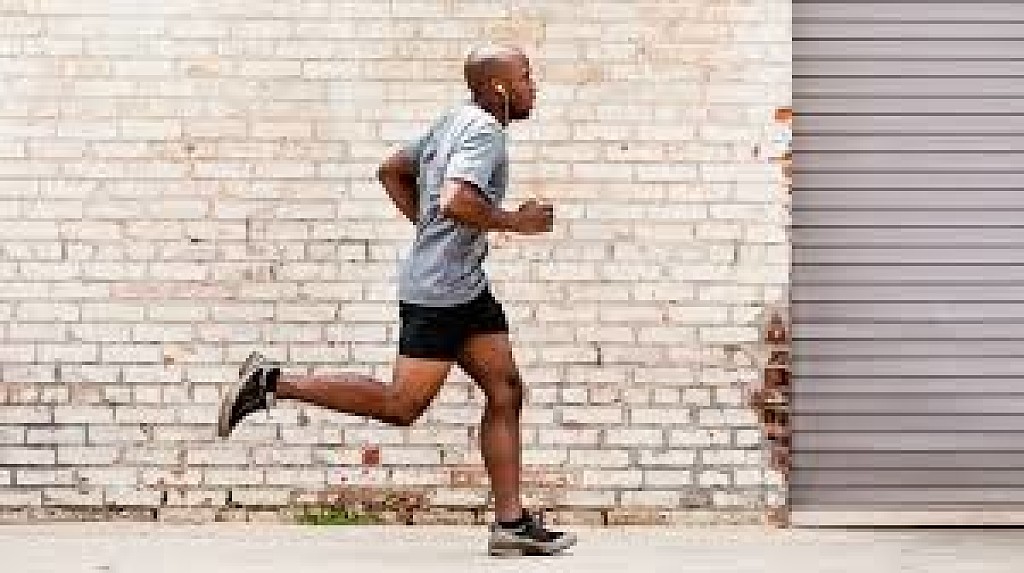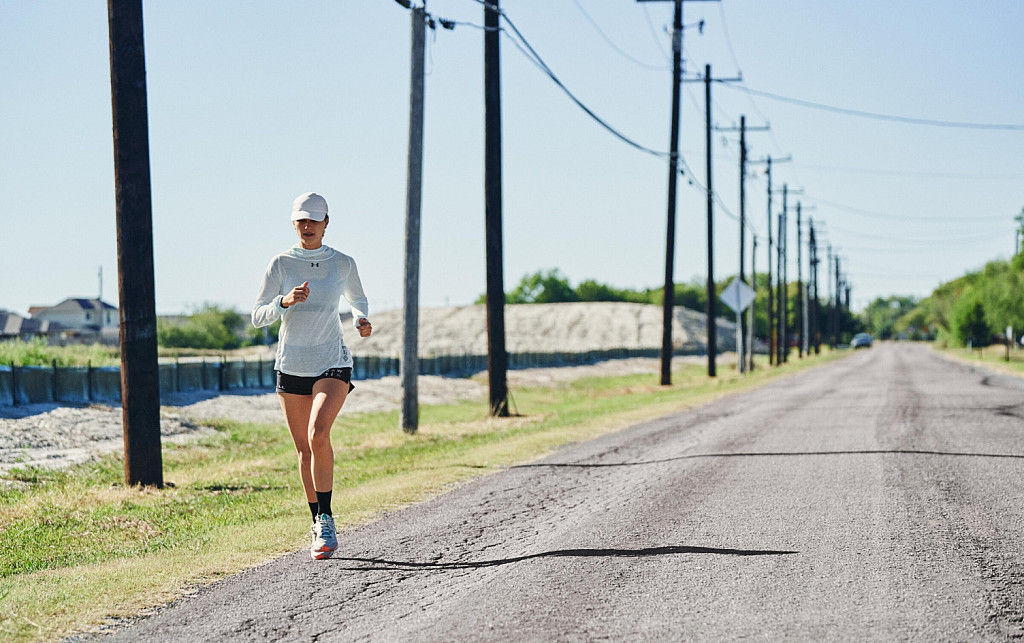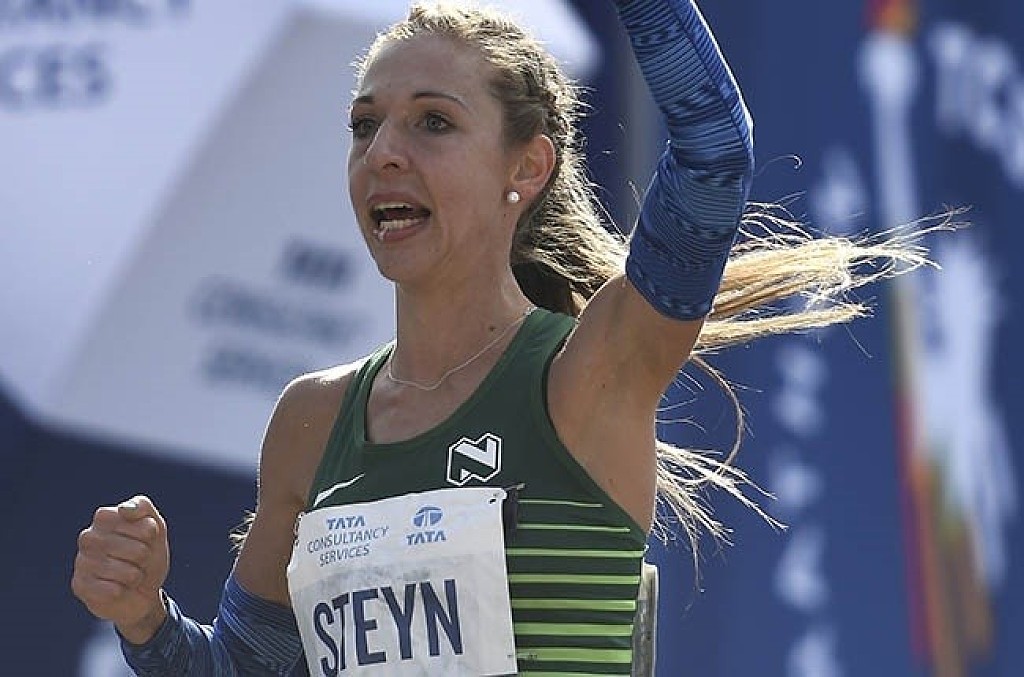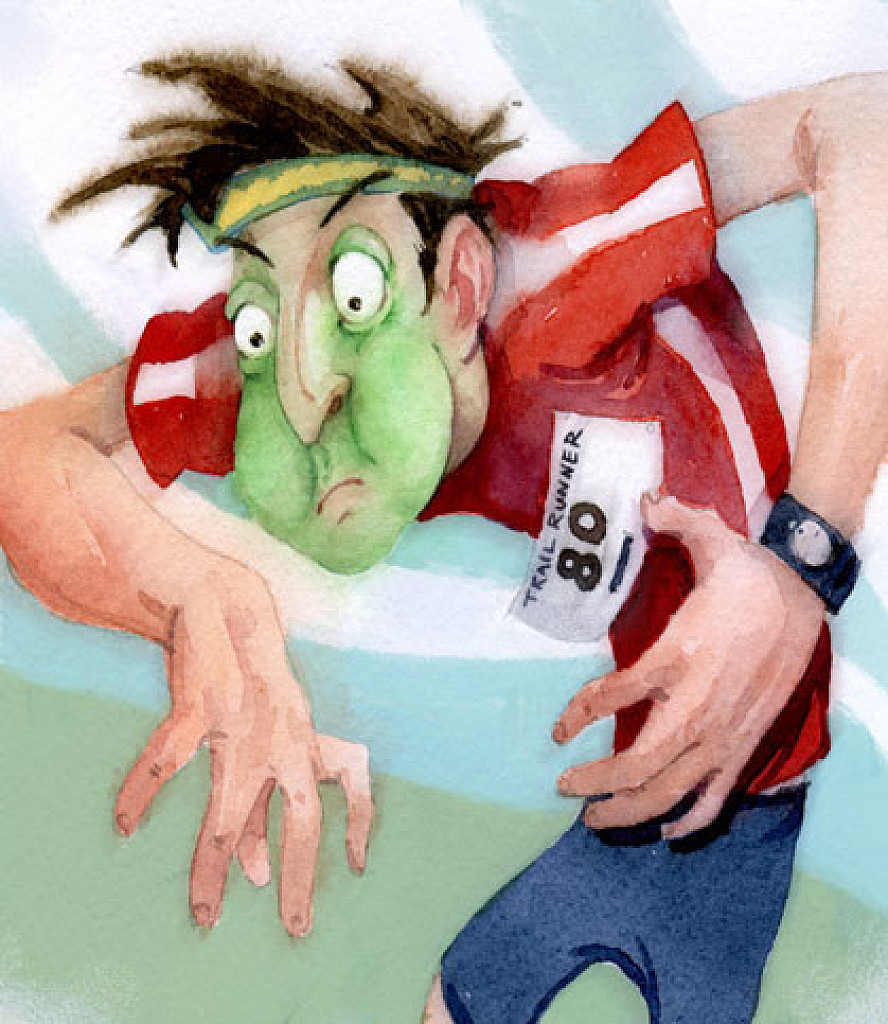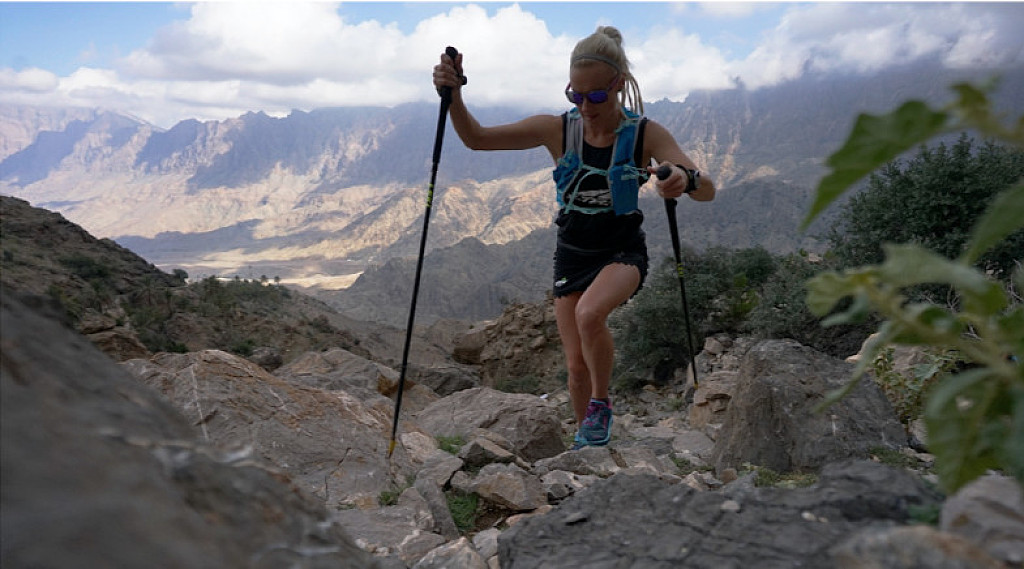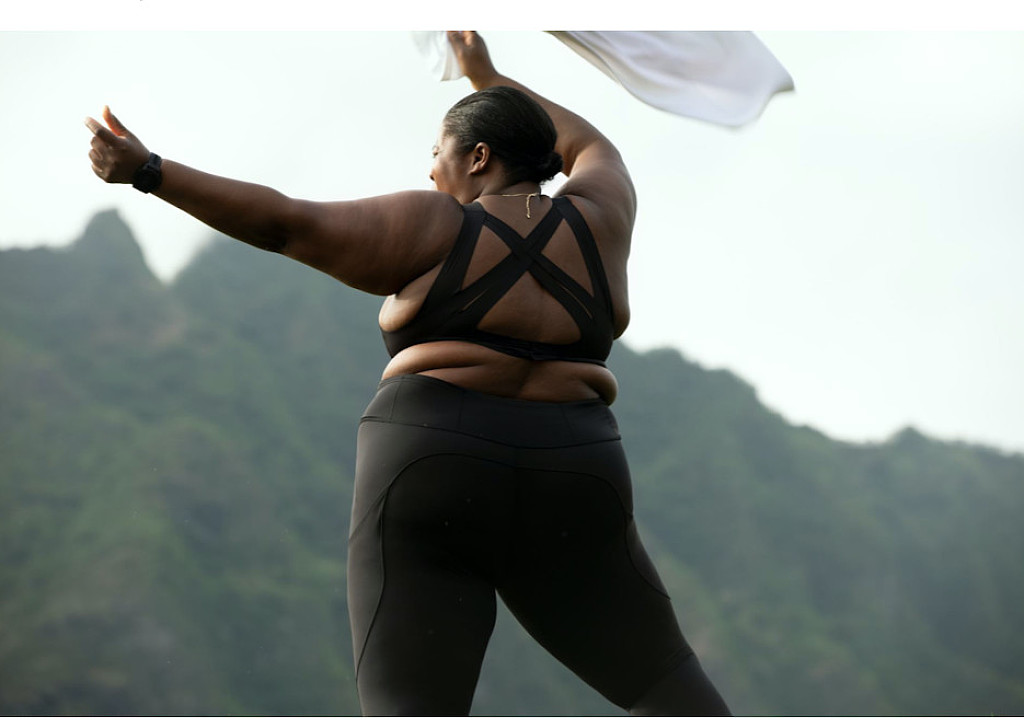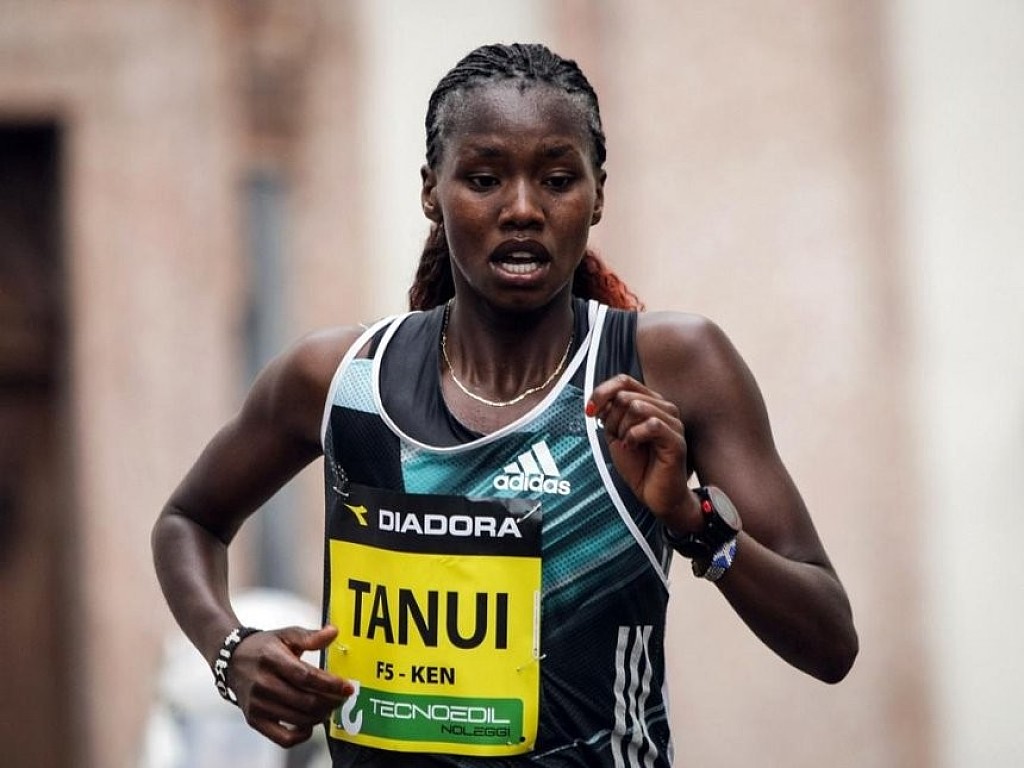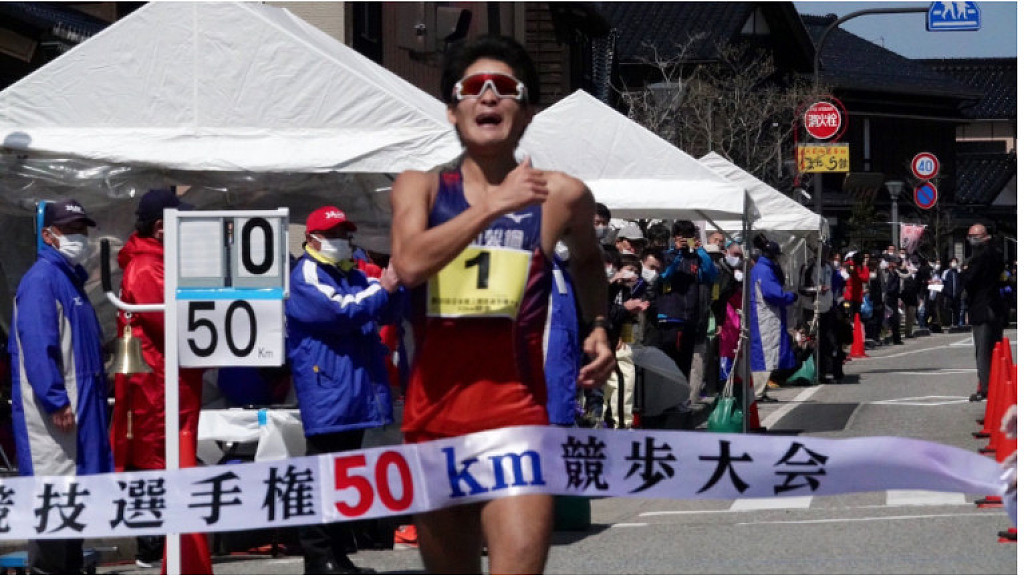Running News Daily
Running News Daily is edited by Bob Anderson in Mountain View, California USA and team in Thika Kenya, La Piedad Mexico, Bend Oregon, Chandler Arizona and Monforte da Beira Portugal. Send your news items to bob@mybestruns.com Advertising opportunities available. Over one million readers and growing. Train the Kenyan Way at KATA Running Retreat Kenya. (Kenyan Athletics Training Academy) in Thika Kenya. Opening in june 2024 KATA Running retreat Portugal. Learn more about Bob Anderson, MBR publisher and KATA director/owner, take a look at A Long Run the movie covering Bob's 50 race challenge.
Index to Daily Posts · Sign Up For Updates · Run The World Feed
Grandma's Marathon announces changes to the 2021 race weekend
Rolling start, elimination of viewing areas among the alterations for half-capacity event.
Grandma’s Marathon officials announced Tuesday several changes to the 2021 race weekend, including discouraging large crowd gatherings and the cancellation of the post-race celebration.

The 45th annual marathon, the Garry Bjorklund Half Marathon and the William A. Irvin 5K races already had been limited to 50% capacity in compliance with Minnesota Department of Health COVID-19 protocols.
Additional operational changes such as a rolling start, social distancing and health screenings are planned as are alterations in pre-race activities.

“We basically had to redesign every aspect of Grandma’s Marathon weekend,” Executive Director Shane Bauer said in a news release. “There’s lots of work still left to get this thing across the finish line, and we couldn’t be more thankful for our municipal and community partners. We know what it felt like to not have the race, and that wasn’t fun. The amount of time, effort, and cooperation that’s gone into planning this 2021 race is phenomenal. It will be a great achievement for the entire area if and when we pull it off.”
Race organizers are continuing discussions with state and local authorities but say final approval for the June 17-19 event still has not been given.
“We’re announcing this now not because we’ve been given the green light, but because we’re a little more than two months out and we believe our current registrants and the community deserve to know where we stand on some of the bigger planning items,” Marketing & Public Relations Director Zach Schneider said in the release.
Operating at half capacity of a traditional year, organizers plan to use a modified transportation schedule and rolling start process to help create adequate space between participants on the race course.
“The runner experience from start to finish is going to be a bit different this year,” Race Director Greg Haapala said in a statement. “Participants might board the bus at a different location or time, and there won’t be the usual mass start, but our crowd science models show those are the things that will reduce density throughout the day and promotes social distancing. So much of this depends on personal responsibility, and we’re confident everyone involved can and will act appropriately.”
Masks or face coverings will be required throughout the weekend event, except while actively participating in a race. That includes the weekend’s ancillary events such as the Fitness Expo and spaghetti dinner, which will be held in a modified fashion.
“We had to rethink the entire layout of those events, using more and different space on the DECC campus so we can accommodate everything,” Registration & Expo Director Laura Bergen said in the release. “From reduced capacities to one-way traffic patterns, every change we’ve made is in the interest of continuing to provide a great experience while keeping our participants and the community as safe as possible.”
Per current Department of Health guidelines, spectators are discouraged from any large gatherings on race weekend. Most traditional viewing spots in downtown Duluth and Canal Park will be unavailable this year, according to the release.
The traditional “Rock the Big Top” celebration in Canal Park also is cancelled.
“Those things hurt because the people are such a big piece of the atmosphere that makes Grandma’s Marathon special,” Schneider said in the release. “To ask supporters to stay home is not what we want, but it is what’s necessary so we can have the race and be good stewards of our community at the same time.”
(04/21/2021) ⚡AMPGrandmas Marathon
Grandma's Marathon began in 1977 when a group of local runners planned a scenic road race from Two Harbors to Duluth, Minnesota. There were just 150 participants that year, but organizers knew they had discovered something special. The marathon received its name from the Duluth-based group of famous Grandma's restaurants, its first major sponsor. The level of sponsorship with the...
more...14-year-old Sadie Engelhardt wins girls’ mile race with sub-5-minute run
For all the impressive elite performances over the weekend, another equally stellar result was produced, not by a collegiate runner or even a high school athlete, but by an eighth-grader. Sadie Engelhardt, 14, won the middle school girls’ 1,600m at the Chandler Rotary Classic in Arizona on Saturday in 4:47.90, clocking the third-fastest time recorded by a middle school athlete since the turn of the century.
Perhaps even more impressive, Engelhardt beat the second- and third-place runners by more than eight seconds, and her time would have won in the varsity (high school) field as well. Her competitors still ran impressive races, and both second and third place crossed the line in under five minutes (4:56.51 and 4:59.79, respectively).
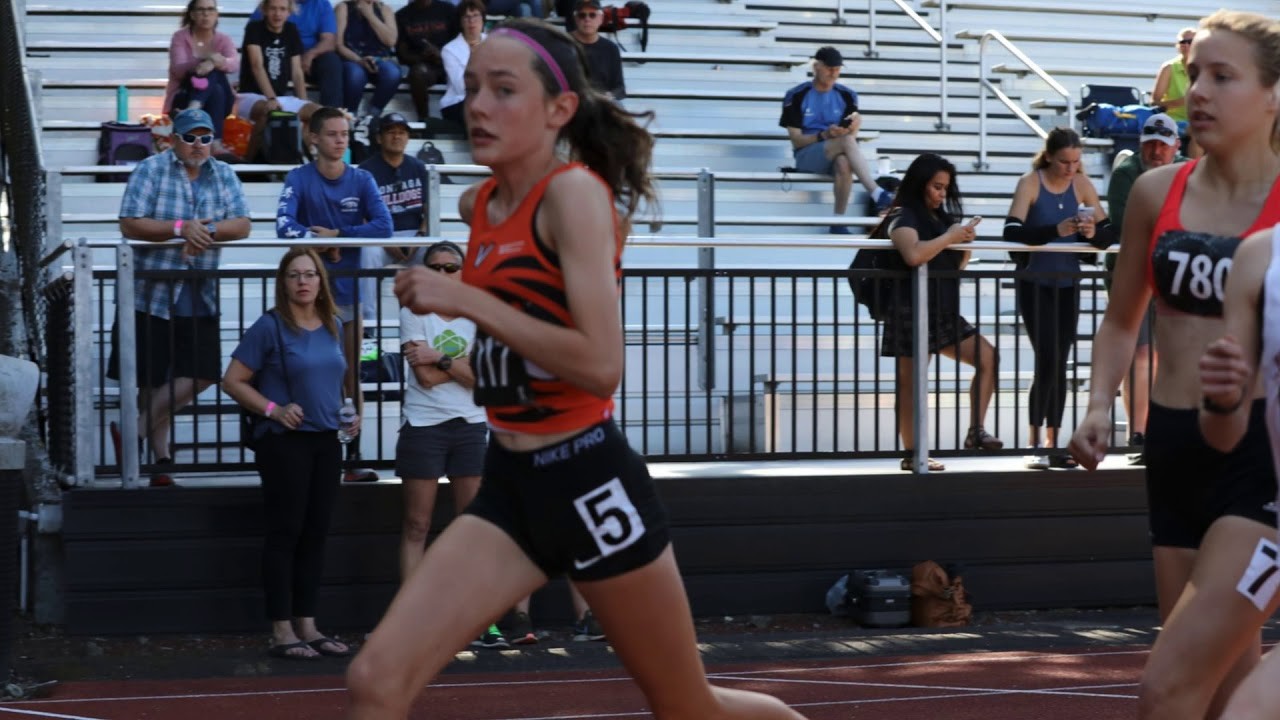
This race comes after an incredible few weeks for the young runner from Ventura, Calif., who has raced four times this year and has improved every time. She has now logged times of 4:54.08, 4:53.01, 4:48.73 and 4:47.90. In a post-race interview with MileSplit after running the indoor mile at the Adidas Indoor Nationals on February 28, where she ran 4:51 for the girl’s full mile, she said her improvements are telling her that she can work harder and train harder.
“I’m not even in high school yet so I’m really proud of where I’m at right now and I’m really excited to see where high school training takes me,” she said.

Engelhardt’s time puts her behind only two other athletes: Lexy Halliday, who ran 4:46.47 in 2016, and Taylor Roe, who ran a 4:47.6 hand time in 2015. Halliday went on to compete for the NCAA championship-winning cross country team Brigham Young University and Roe now competes for Oklahoma State, where she placed second overall at the NCAA Division I cross-country championships this year.
At only 14 years old, Engelhardt’s running career is just getting started, and with the results she has been posting, the running world will be watching to see what she does when she enters the high school circuit.
(04/20/2021) ⚡AMPby Brittany Hambleton
With no Boston Marathon on Patriots' Day 2021, there was a different feel
For the second year in a row, businesses in Boston had a much different experience on Patriots' Day without the Boston Marathon being run.
Last October, the Boston Athletic Association made the decision to postpone the 2021 Boston Marathon from April 19 to the fall. In January, the BAA announced the race would be scheduled for Oct. 11.
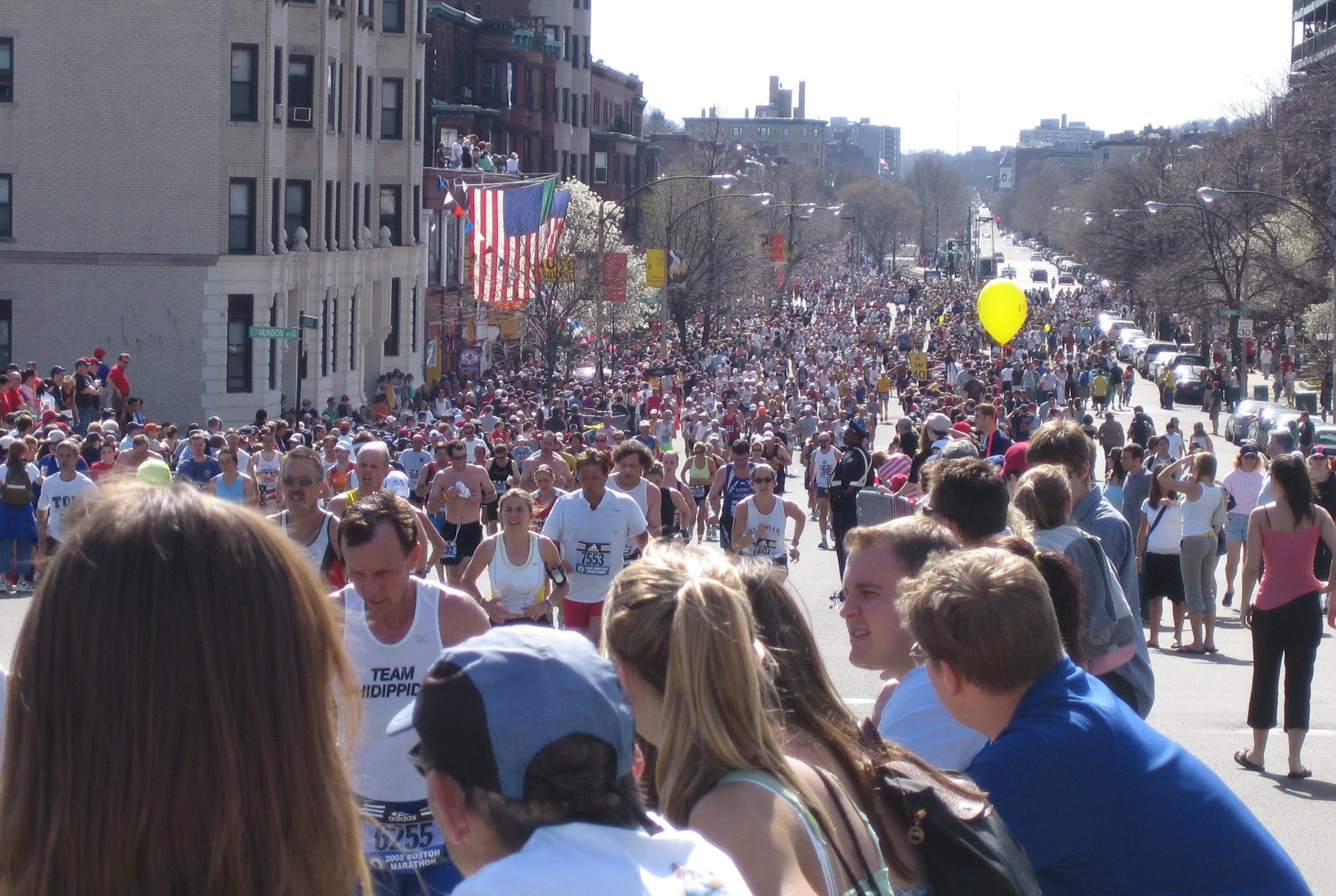
On a typical Marathon Monday, Marathon Sports marketing director Dan Darcy says the streets are packed with people and the company's Boylston Street store would have a line out the door.
"Marathon weekend around here is always the best weekend of the year," Darcy said.

Restaurants like Rochambeau, which is just a block from the finish line on Boylston, would normally be swamped.
"You have lines, you turn people away, you have waiting lists and callbacks," said Chef Nick Calias, culinary director for the Lyons Group, which runs Rochambeau. "It was, obviously, an incredible time for an incredible time for our restaurants and for all restaurants in the industry itself."
Overall, the Boston Marathon pumps in about $200 million into the local economy, according to Martha Sheridan, president and chief executive officer of the Greater Boston Convention and Visitors Bureau.
"People fly into the airport. They use transportation to get into the city, whether that's taxi cabs or Ubers. They stay in hotels. They eat at restaurants. They shop," Sheridan said.
For many businesses in other communities along the race route, the economic boost from the marathon isn't necessarily as strong.
"You don't get a lot of customers coming in. You get window shoppers," said Demian Wendrow, head of the Wellesley Square Merchants Association and owner of two Wellesley businesses. "It's great to be here during that day to help support all the runners, which is wonderful, but business, generally, is nonexistent."
Business owners who spoke with NewsCenter 5 on Monday say they are optimistic that business is picking up in Boston and across the state, and that they are planning ahead for the scaled-down 2021 Boston Marathon in October.
(04/20/2021) ⚡AMPby Mary Saladna
Boston Marathon
Among the nation’s oldest athletic clubs, the B.A.A. was established in 1887, and, in 1896, more than half of the U.S. Olympic Team at the first modern games was composed of B.A.A. club members. The Olympic Games provided the inspiration for the first Boston Marathon, which culminated the B.A.A. Games on April 19, 1897. John J. McDermott emerged from a...
more...Kipchoge now focuses on Olympics after comeback win in Twente
World men's marathon record holder, Eliud Kipchoge has set his sights on a second Olympic gold medal at the Tokyo Olympics after a win at the NN Mission Marathon in Enschede in the Netherlands.
Kipchoge was competing for the first time after a disappointing eighth-place finish at the London Marathon in October last year.

"This was a real test and quite the preparation ahead of Tokyo. The focus is now on the Olympics. I will consult with the coach and technical team to see what next in preparing for Tokyo," Kipchoge said.
The Olympics marathon champion clocked 2:04:30 to finish first ahead of training partner, Jonathan Korir, who timed second in 2:06:40 with Eritrean Goitom Kifle , third in 2:08:00.
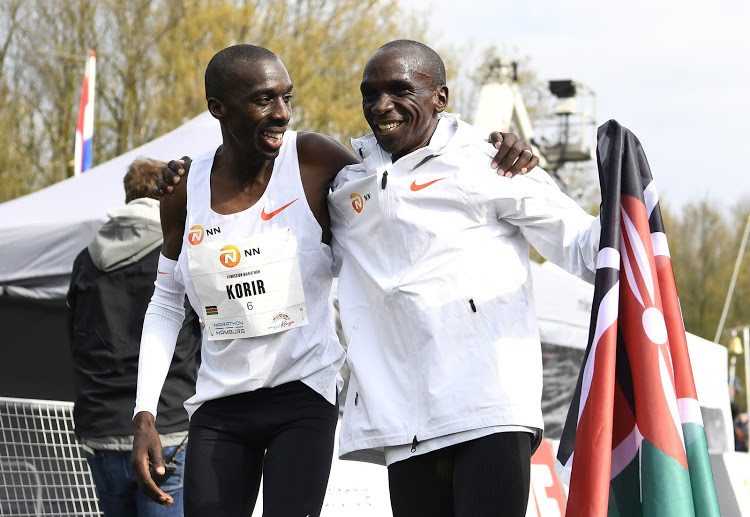
Kipchoge said he is feeling confident and relieved following the win after ear problems and a hamstring complication denied him a third London Marathon at last year's event in which Ethiopia Shura Kitata clinched first place.
"Yes indeed, it is mission accomplished. For the organisers to hold this event successfully under the current circumstances, it is a great achievement and I thank them for that. The conditions were good although it was a bit windy. However, there were other athletes who ran under the same condition and so I can't complain too much about that. I do not always want to complain," he said.
Kipchoge is part of the four-man team named by Athletics Kenya to lead the country's charge for a podium finish at the Olympics.
Other members of the team include Boston Marathon champion Lawrence Cherono, Vincent Kipchumba and world marathon bronze medalist Amos Kipruto.
(04/20/2021) ⚡AMPby Omondi Onyatta
Tokyo 2020 Olympic Games
Fifty-six years after having organized the Olympic Games, the Japanese capital will be hosting a Summer edition for the second time, originally scheduled from July 24 to August 9, 2020, the games were postponed due to coronavirus outbreak, the postponed Tokyo Olympics will be held from July 23 to August 8 in 2021, according to the International Olympic Committee decision. ...
more...Virtual Lewa Safari Marathon Is Back
Dubbed one of the top 10 marathons on the planet by Runner’s World, and supported by the likes of HRH The Duke of Cambridge, Deborah Meaden and Eliud Kipchoge, the Lewa Safari Marathon is one of Kenya’s major sporting events.
The annual race usually takes place in the Lewa Wildlife Conservancy, which means participants get the opportunity to run through one of Africa’s most spectacular protected areas, sharing the trails with several with some of Kenya’s most iconic and critically endangered wildlife: Grevy’s Zebra, Lions, Elephants and Giraffes. This year, however, it’s going virtual…
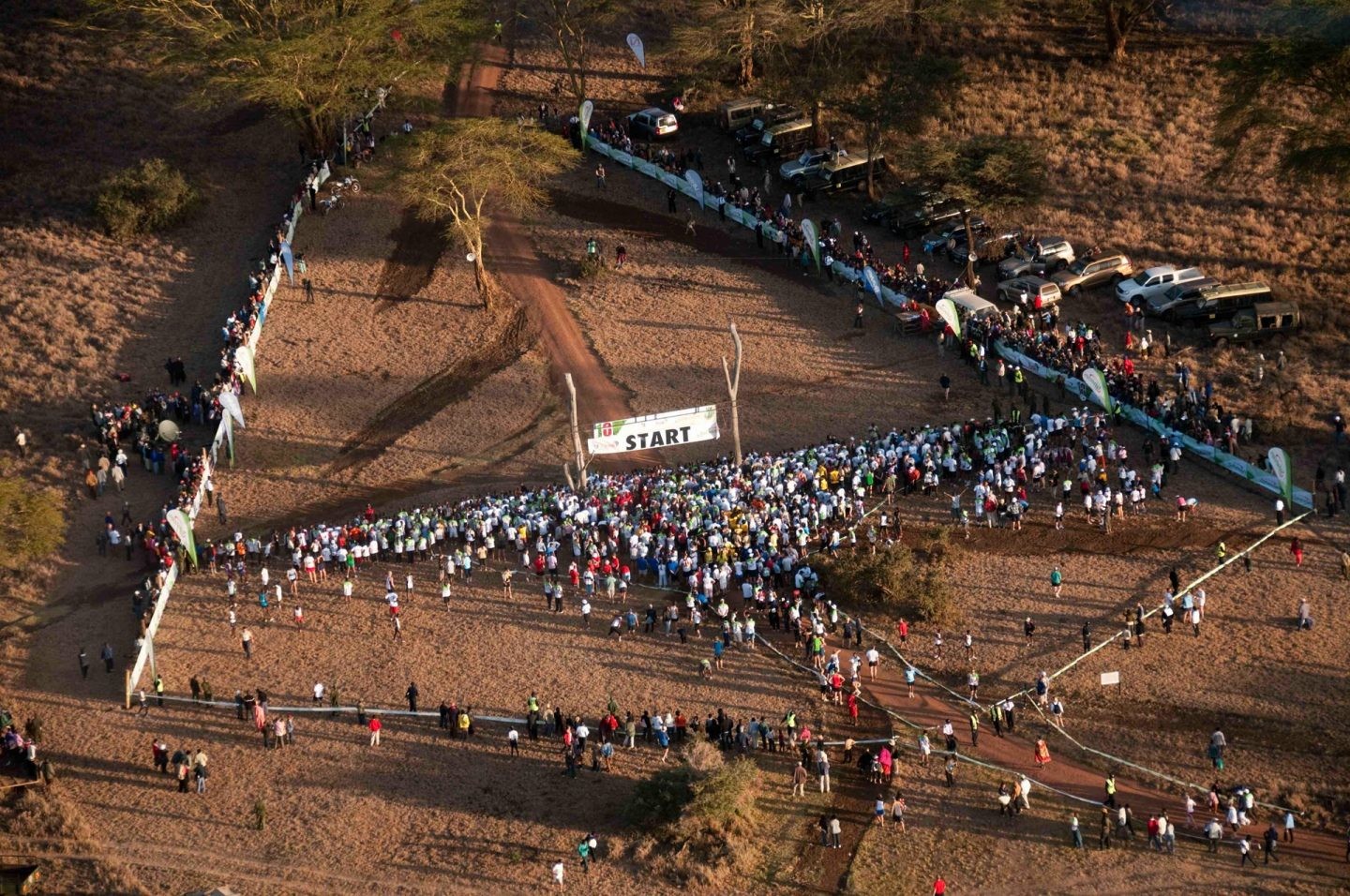
Held in partnership with Lewa Wildlife Conservancy and Wildlife Conservation charity, Tusk, the unique marathon has raised millions of dollars to fund wildlife conservation and community development in Kenya over the last 21 years.

From recovering Kenya’s black rhino population from the brink of extinction, protecting the world’s critically endangered Grevy’s zebra, and providing healthcare, water and improved infrastructure for communities, to supporting Lewa education programmes, the funds this marathon raises are invaluable to thousands across the country.
However, these projects now face perhaps their greatest challenge to date: mounting a recovery plan in the face of a social and economic crises, which could last for many years to come.
So, in an attempt to help rebuild Kenya’s most vulnerable communities and wildlife, this year’s Lewa Safari Marathon is going virtual on the 26th of June. Lewa and their co-organisers are encouraging runners everywhere to lace up their shoes and join the challenge. Whether it’s 5km, 10km, 21km or even 42km, each stride is a step in the right direction. Entry is free, but all runners are encouraged to donate whatever they can.
“The Lewa Safari Marathon is no longer just an event in people’s dairy, it’s an event in their hearts. It has become part of our culture,” says John Kinoti, Lewa Wildlife Conservancy’s Community Development Manager. “Even though this year we are separated physically, we are still connected emotionally. The Virtual Lewa Safari Marathon is about continuing to transmit this culture of togetherness and inclusion, and help to transform lives.”
Last year, HRH Duke of Cambridge – Tusk’s Royal Patron – took on the virtual challenge. He said: “This is not a race. There is no stopwatch. This is our way of showing Africa’s conservation community that we’re all in this together.”
Marathon world record holder, Eliud Kipchoge EGH, is also a great advocate of the Lewa Safari Marathon and will once again be running this year: “To me, a running world is a happy world,” says Eliud. “Last year, you joined me in a global running movement to support the guardians of wildlife and our natural heritage. This year, we have another opportunity to rally around my Kenyan brothers and sisters as they continue to feel the negative effects of the pandemic. Please join me on the 26th of June, wherever you are in the world, to run The Virtual Lewa Safari Marathon.“
(04/20/2021) ⚡AMPby Andy Devaney
Safaricom Lewa Marathon
The first and most distinctive is that it is run on a wildlife conservancy, which is also a UNESCO world heritage site. The Lewa Wildlife Conservancy is home to a number of endangered and threatened species- and also a catalyst for community development for its neighboring communities. For the past 17 years, funds raised from the marathon have gone...
more...Des Linden will race the Boston Marathon on Oct. 11, becoming the first elite runner to sign up.
Des Linden will race Boston Marathon in October.
Linden, who in 2018 became the first U.S. female runner to win the world’s oldest annual marathon since 1985, made the announcement while in Boston on Patriots’ Day, which would normally be the date of the 26.2-mile race.

It was announced on Jan. 26 that the 125th Boston Marathon was pushed back to Oct. 11 this year due to the coronavirus pandemic.
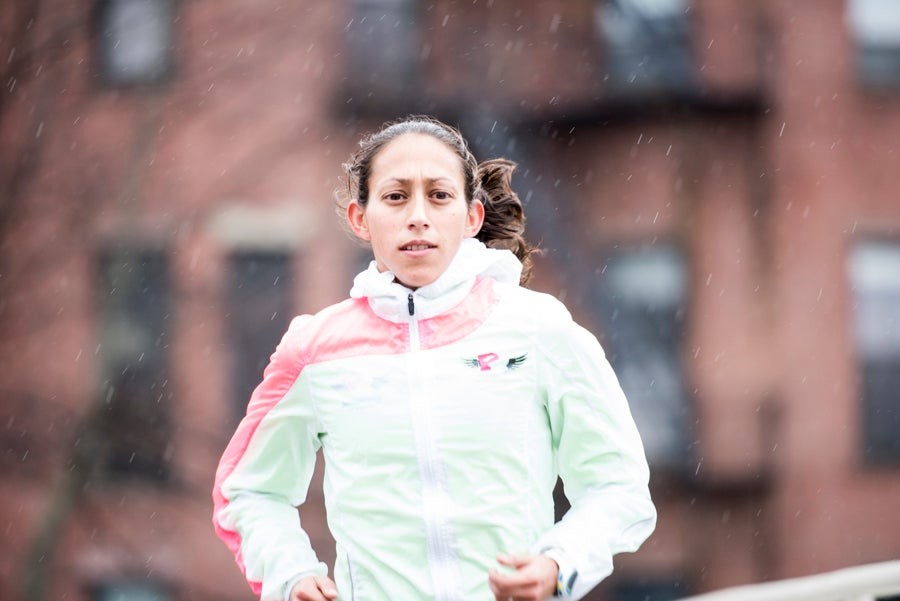
Linden, a 2012 and 2016 Olympian, was fourth at the 2020 U.S. Olympic Trials. The 37-year-old finished fifth in the last Boston Marathon in 2019. This will be her eighth Boston Marathon.
Last week, Linden became the first woman to break three hours for 50km, which is five miles longer than a marathon.
(04/19/2021) ⚡AMPby OlympicTalk
Boston Marathon
Among the nation’s oldest athletic clubs, the B.A.A. was established in 1887, and, in 1896, more than half of the U.S. Olympic Team at the first modern games was composed of B.A.A. club members. The Olympic Games provided the inspiration for the first Boston Marathon, which culminated the B.A.A. Games on April 19, 1897. John J. McDermott emerged from a...
more...Canada’s Natalia Hawthorn is now running as a Brooks-sponsored athlete as she attempts to qualify for the Tokyo Olympics
Canadian 1,500m and 5,000m runner Natalia Hawthorn has signed on to compete with Brooks Running as she works to qualify for this summer’s Tokyo Games. Hawthorn has a long history with Brooks, and it only made sense to join the company’s elite team as she continues to progress toward her Olympic dreams.
As a sixth-grader in her hometown of Bracebridge, Ont., Hawthorn began training with the Newmarket Huskies, a club more than an hour away. The Huskies happened to be affiliated with Brooks, giving Hawthorn her first encounter with the brand. Working with the Huskies, Hawthorn continued to improve as a runner, and she eventually moved to Vancouver, where she ran at UBC.
After graduating from UBC, Hawthorn stayed out west, and she found a job at Brooks in 2018. This job brought her back into the world of Brooks, although unlike her time wearing the brand with the Huskies, Hawthorn now saw the company’s inner workings.

As Hawthorn said on Instagram, the job at Brooks gave her the opportunity to “learn more about their technology, inclusivity, initiatives to minimize their environmental impact, effort to create positive social impact, transparency and most of all their mutual goal to inspire everyone to run and be active.” In her time at Brooks, Hawthorn came to truly appreciate and respect the brand, which played a big role in her eventual decision to sign with the company as an elite athlete.
Hawthorn worked at Brooks for less than a year, but the job had a lasting impact on her. She left the job in 2019 after deciding that she wanted to focus more time on running and pursuing her dream of competing in the Olympics. “I loved my job, but I was spreading myself too thin trying to give it 100 per cent in both my work as a [Brooks employee] and as an athlete,” she says.

Since leaving the job, Hawthorn has run PBs in the 1,500m (4:07.28) and 5,000m (15:31.27), both of which she hopes to lower in the coming months to meet the Olympic standards of 4:04.20 and 15:10.00. Her new partnership with Brooks is added support in that Olympic standard chase, and she says she’s thrilled to be a part of the brand’s team.
“It felt surreal to have received a call about becoming an elite athlete for Brooks Running,” she says. “To have the brand I worked for in the past, who I genuinely love and believe in, come back in my life at this point to support me in my pursuit of running is a dream come true. I feel so fortunate and appreciative to have Brooks support me in my journey and to be part of their family once again.”
(04/19/2021) ⚡AMPby Ben Snider-McGrath
Tokyo 2020 Olympic Games
Fifty-six years after having organized the Olympic Games, the Japanese capital will be hosting a Summer edition for the second time, originally scheduled from July 24 to August 9, 2020, the games were postponed due to coronavirus outbreak, the postponed Tokyo Olympics will be held from July 23 to August 8 in 2021, according to the International Olympic Committee decision. ...
more...Athing Mu ran 1:57.73 to Crush NCAA 800m Record
Athing Mu’s incredible 2021 season got even better as the Texas A&M freshman ran 1:57.73 at the Michael Johnson Invitational at Baylor University to destroy the NCAA record and set a 2021 world outdoor leader. The previous NCAA outdoor record was 1:59.10 by Raevyn Rogers of Oregon from 2017, while Mu had run 1:58.40 indoors this year.
Not that Mu’s run needed an exclamation mark, but making it even more impressive is that she ran a negative split. She was unofficially 60.0 at 400 which means she split 57.7 the 2nd 400.
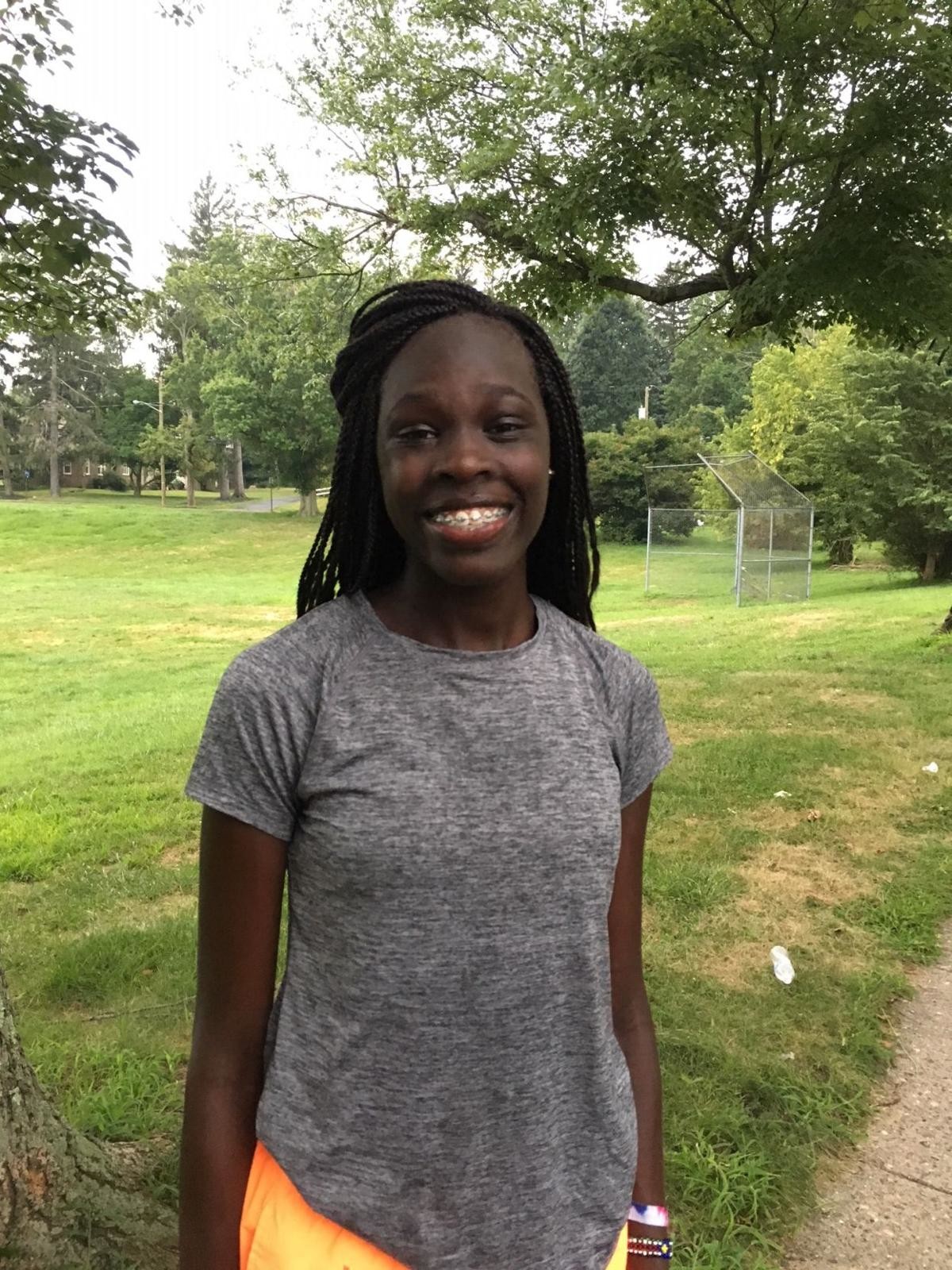
Mu has been tearing up the NCAA record books this year:
Indoor 600m - 1:25.80
Indoor 800m - 1:58.40
Indoor 4x400m - 3:26.27

Outdoor 800m - 1:57.73
At the last World Championships, Raevyn Rogers and Ajee Wilson of the US got the silver and bronze. The women’s 800m at the Olympic Trials should be absolutely amazing in June.
And the woman who was a distance second to Mu today? That was Aaliyah Miller of Baylor who set the NCAA indoor meet record at 800 this year. Mu absolutely destroyed Miller today.
(04/19/2021) ⚡AMPby LetsRun
Adidas and Boston athletic asocciation extend official sponsorship through 2030
The Boston Athletic Association (B.A.A.) announced today that the organization has extended its longstanding official sponsorship with adidas through 2030. The Patriots’ Day announcement marks more than 40 years of partnership between the athletic organizations.
“adidas has been an official sponsor of the Boston Marathon for more than three decades, and we are delighted to extend our partnership, furthering our dedication to community initiatives as well as athletic performance,” said Tom Grilk, President and C.E.O of the B.A.A. “adidas has supported all aspects of our organization, from mass participatory events to the B.A.A.’s running club and High Performance team. Our collective missions align in the promotion of health and fitness, and this extension solidifies our combined commitment to the sport and running in the community.”
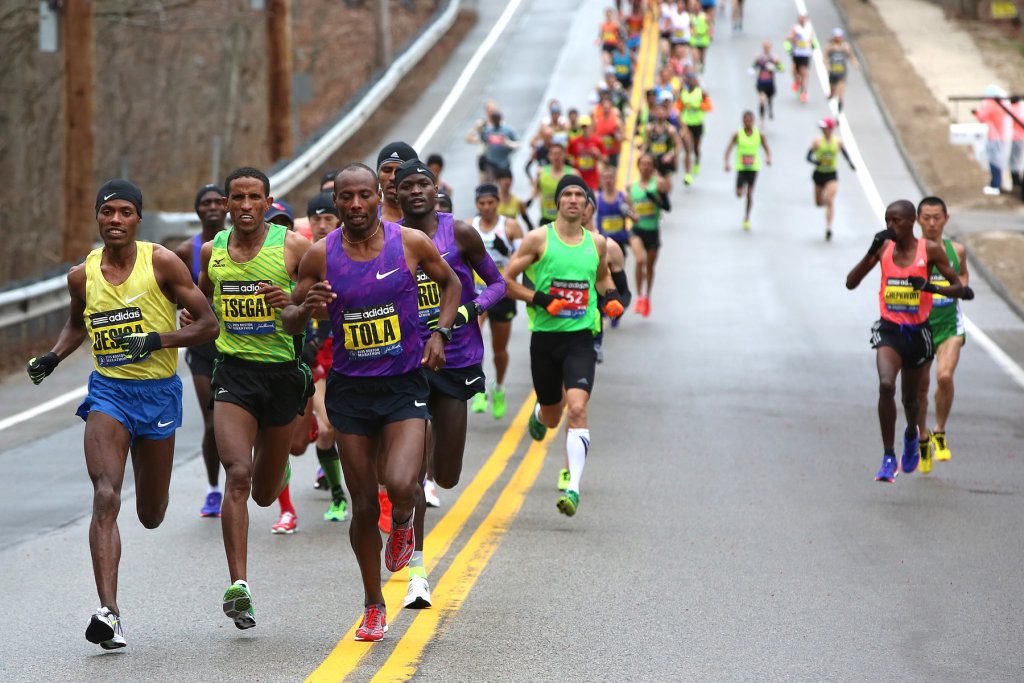
adidas has been a sponsor of the Boston Marathon since 1989, increased its support to include the B.A.A. Running Club in 1991, and since 1994 has sponsored all B.A.A. running events, clinics and youth programming, and initiatives including the B.A.A. 5K, the B.A.A. 10K, and the B.A.A. Half Marathon. Together, the B.A.A. and adidas have developed year-round programming designed to promote health and fitness among Boston-area youth, which has yielded participation from more than 35,000 students.

“Adi Dassler founded adidas inspired from the passion for running and for supporting and enhancing athletic performance. Our partnership with the B.A.A. allows us to bring to life our belief, that through sport we have the power to change lives,” said Alberto Uncini Manganelli, General Manager of adidas Running, Global.
In addition to being the official athletic footwear, apparel, and accessory sponsor of the Boston Marathon, adidas will continue to support all of the B.A.A.’s road races, the organization’s running club and High Performance Team, and many youth events. The B.A.A. and adidas are committed to developing new community initiatives, programs, and events that provide opportunities for athletes and runners of all abilities.
“The B.A.A. and Boston Marathon are synonymous with athletic excellence for the athletes, and a role model for touching people in their journey of physical and mental betterment, and driving a positive impact to communities. In this journey we are extremely proud to support the B.A.A. and athletes from across the globe with their pursuit of athletic achievement and we look forward to advancing our commitment to and celebration of the running community,” said Uncini Manganelli.
The B.A.A. and adidas announced the sponsorship extension on Patriots’ Day, the traditional date of the Boston Marathon and America’s most historic running day. In honor of Patriots’ Day, the B.A.A. and adidas have unveiled the 2021 adidas Boston Marathon Celebration Jacket, which is a badge of honor for runners worldwide. The smooth woven construction includes a breathable mesh lining and reflective details shine bright through low-light conditions. The product is made with Primeblue, a high-performance recycled material made in part with Parley Ocean Plastic. For the 125th anniversary, the jacket’s design focuses on the traditional Boston Marathon colors of blue and yellow. Special elements, including a special edition 125th Boston Marathon logo, are highlighted in a gold metallic embroidery to celebrate the anniversary year. The 125th Boston Marathon Celebration Jackets will be available for purchase beginning on Friday, May 7.
adidas is a global leader in the sporting goods industry. Headquartered in Herzogenaurach/Germany, the company employees more than 62,000 people across the globe and generated sales of €19.8 billion in 2020.
Registration for the 125th Boston Marathon opens Tuesday, April 20 at 10:00AM ET, through the B.A.A.’s online platform Athletes’ Village. Registration for qualified athletes will remain open through 5:00PM ET on April 23. The selection process will remain consistent with prior years: applications and qualifying times submitted between April 20 and April 23 will be verified and ranked by the B.A.A. based on the amount of time an athlete has run under their respective qualifying standard. Applicants will be notified of acceptance or non-acceptance once the B.A.A. has verified all applications in early May.
(04/19/2021) ⚡AMPBoston Marathon
Among the nation’s oldest athletic clubs, the B.A.A. was established in 1887, and, in 1896, more than half of the U.S. Olympic Team at the first modern games was composed of B.A.A. club members. The Olympic Games provided the inspiration for the first Boston Marathon, which culminated the B.A.A. Games on April 19, 1897. John J. McDermott emerged from a...
more...Training Guidelines After COVID-19 Vaccine Doses
Back in December, we reviewed the COVID-19 vaccines and considerations for athletes. The big conclusion: it's such an exciting time in the world with novel technology being harnessed to mobilize our immune systems with minimal risk.
Since that article, millions of people have been vaccinated, including many athletes we coach. Based on the clinical trials and lack of universal guidelines for every athlete, we advise athletes we coach to err on the side of caution with training-resting the day after each vaccine dose, even if they feel fine, before easing back into training (full guidelines at the bottom of the article and discussed in our podcast). Most importantly, listen to any directions from your doctor or personal coach.

Systemic Responses
Let's start with the great news. In the clinical trials, side effects were minimal and fleeting. For example, the New England Journal of Medicine published Phase 2 and Phase 3 trial results for the Pfizer/BioNTech vaccine that demonstrated its ground-breaking effectiveness. Reactogenicity is a kick-ass Scrabble word used to describe normal physical responses to a vaccine injection. Systemic reactogenicity was reported more often by younger participants, likely related to enhanced immune-system responses, with increased reactions after the second dose.
In determining post-vaccine training guidelines, these systemic responses are the most important. If you feel like crap, don't run. Always listen to your body. But what if you don't feel bad? The answer to that question is the crux of this article.
For the Pfizer vaccine, just over 50% of younger participants reported fatigue and headache after the second dose of the vaccine, compared to 23% of those that received a placebo. Fever was reported by 16% of younger participants after the second dose (11% of older participants), with smaller percentages reporting fever after the first dose. In these participants, fever and chills were observed in the first two days after injection, then resolved shortly thereafter. Severe fatigue was reported in 4% of those that received the vaccine, which resolved on short time scales. Anecdotally, after the first Pfizer shot, co-author David needed a lollipop and a hug.
The clinical trial data for the Moderna vaccine published in The Lancet showed similar patterns. The single-dose Johnson and Johnson vaccine uses a different DNA-based approach to cause the immune response, but shows similar rates of systemic reactogenicity, as published in the New England Journal of Medicine in January. Lollipops and/or hugs optional, but encouraged.
In determining post-vaccine training guidelines, these systemic responses are the most important. If you feel like crap, don't run. Always listen to your body. But what if you don't feel bad? The answer to that question is the crux of this article.
Immune System Responses
A Nature article published in March reviewed the modes of immune system activation from the COVID vaccines. To summarize it greatly, the vaccines encode messages to help produce the spike protein on the surface of the COVID virus, creating an immune system "memory" to prevent viral entry into the cells. The process of going from vaccine injection to immune system protection involves the creation of neutralizing antibodies and virus-specific T-cell responses (tailoring the body's immune response to the specific pathogen). The key thing for athletes to remember is that for the immune system response to work as intended, it involves the activation of multiple inflammatory mediators (cytokines, Type I interferon). In other words, inflammation is connected to immunity.
Inflammation is normal and in cases like this can actually be a key component in health and adaptation to stress. But even short of systemic reactions like fevers and fatigue, cellular-level inflammation could impact training in individually-variable ways via performance, adaptation, and injury. A February article in The Lancet highlighted the uncertainty for athletes, indicating there shouldn't be any cause for concern but also that it may "be appropriate to consider a temporary reduction in training load in the first 48-72 h post vaccine injection, particularly after the second dose."
Inflammation is normal and in cases like this can actually be a key component in health and adaptation to stress. But even short of systemic reactions like fevers and fatigue, cellular-level inflammation could impact training in individually-variable ways via performance, adaptation, and injury.
Our big concern as coaches is that athletes are so used to training through some discomfort that they may not even notice vaccine-related signals to take a bit more downtime. As athletes, we have a lot of experience with sore muscles, but not as much experience with immune responses to novel vaccines. And given individual variability, we suggest being extra cautious in the few days after each injection. It's not a question of whether you can train hard (you probably can!), but a question of whether it's necessary to train hard for a day or two.
Anecdotally, we have seen almost no performance decreases after a few days of vaccine administration. For example, Katie Asmuth won the Bandera 100K less than a week after receiving her second dose of the Pfizer vaccine. However, we have also seen unexpected fatigue and a few soft tissue injuries at relatively low training volume within a week after vaccine doses. Is that random, unconnected noise? Probably. But it underscores the importance of thinking long-term with athletic growth, since a few relaxed days will likely only help performance.
Training Guidelines
No matter what, a little bit of bonus rest can go a long way toward supporting long-term growth, independent of vaccine status. With that in mind, here are the cautious guidelines we advise for our athletes after receiving the COVID vaccine.
We also try to avoid having athletes do very hard workouts or long runs just before receiving the vaccine. And assuming no severe reactogenicity, we still try to avoid very hard workouts or races in the three full days after the first dose, and four full days after the second dose. A couple more important notes:
However, none of these rules are set in stone, even for our athletes. Always listen to your doctor and your coach. If you have already received the vaccine and applied different rules, that is wonderful and it shouldn't be a worry.
For our team, we are treating each shot almost as its own workout. And like all workouts big or small, the vaccine is a major reason for celebration.
(04/19/2021) ⚡AMPby Trail Runner Magazine
How elephants changed one ultrarunner’s life
Rene Unser’s first race was a five-day stage race in Thailand in 2005. By the second day, she was already exhausted and had begun to think that this style of racing was not for her. Her husband encouraged her to continue, and on Stage 3, they had an incredible run-in with a couple of elephants while out on the course. She realized in that moment that had she given up the day before, she never would have had her “elephant moment,” and that memory continues to serve as a reminder that suffering is temporary, but giving up lasts forever.
Fast-forward to 2012, when Unser was on Stage 6 of the Transalpine Run in Italy. She “woke up at 4 a.m. with knees that felt like they had been hit with a baseball bat and were the size of softballs.” Thinking she wouldn’t be able to start the stage, she went down to breakfast in her guesthouse in her pyjamas. It took a five-minute pep talk from her husband Trent to convince her “to get my butt upstairs and at least start the stage. He reminded me of my ‘elephant moment’ and I promptly went back up to my room and frantically started counting gels, filling my hydration bladder.”

After a frenzied drive to the start line, a forgotten bib mishap and subsequent late start, the Kelowna, B.C., native was out on the course, knees wrapped in about 18 layers of KT Tape and 10 minutes behind the rest of the runners. Sweeps had already started clearing the course, so locals had to point her in the right direction. Despite the rough start, Unser managed to work her way up through the runners, passing the third-place female team (it was both a team and solo event) with only 5K left to go.
Unser is an athlete with a lot of drive and passion, but her athletic career started much the same as anyone else’s — she was an active kid who played lots of sports during her school years, and while she showed some talent in running, she preferred to remain a generalist rather than focus on one sport. She didn’t start to run more regularly until her mid-20s, and her first trail run was in 2003 when she went on her first date with the man who would later become her husband. She was immediately hooked, and with her job as a fitness instructor at the time, she wanted to figure out how to get others into trail running.
Since then, Unser has turned her passion into a career. In 2003, she got her coaching certification and 10 years later founded P.A.C.E., a coaching business that offers trail running clinics and running camps and organizes a trail running series. Since 2011, Unser has competed in the Transalpine race eight times, and in 2020 she raced to a second-place finish in the master’s women’s category. In her most recent race, the Scorched Sole Ultra in B.C., she placed third overall.
Between her race directing, community work and coaching, Unser caught the attention of Salomon and Hammer Nutrition, and both companies now sponsor her and provide her with different opportunities, such as being the media liaison for the Transalpine race. With so much going on, she has less time to enter races herself, and she now limits herself to just a couple of more challenging stage races per year.
When asked about how she’s dealt with the challenges of COVID-19, she points to her company name, which stands for “positive attitude changes everything.”
“It’s cheesy, but I believe in it,” Unser says. “COVID created an opportunity for me to be there for my community in a new way. I wasn’t sure what would happen for my race series, camps or clinic format, but my community continued to stand behind me. I am so grateful, and I learned more about myself and the kind of coach I wanted to be.”
Unser has become a pillar in her local trail-running community, has inspired and encouraged countless others to get out and enjoy the trails, and has enjoyed a long and successful trail-running career herself — all because she met a few elephants on a trail in Thailand.
(04/19/2021) ⚡AMP
by Running Magazine
Kipchoge clocks world-leading 2:04:30 in Enschede
Eliud Kipchoge waited until the final 30 minutes of the NN Mission Marathon to make his winning move as the Kenyan great kicked on to win the World Athletics Label road race in 2:04:30 at Twente Airport in Enschede on Sunday (18).
The Olympic champion had little to prove; his place on Kenya’s team for Tokyo had already been confirmed, as has his status as one of the all-time greats. But following a rare defeat at the London Marathon last year, the world record-holder was keen to produce a confidence-boosting performance ahead of the Olympic Games.

He did exactly that on Sunday, despite having to contend with some late changes to the race plans as the event had originally been set for 11 April in Hamburg.
Unlike many of Kipchoge’s previous marathon races, today’s event was never intended as an opportunity to chase record times. Nevertheless, the pace was swift as a lead group of four reached 15km in 43:46, just outside 2:03 pace.
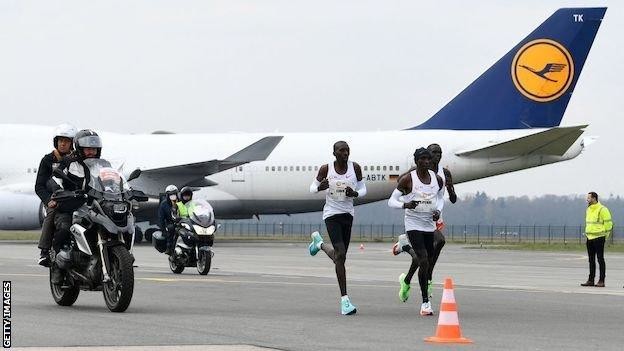
After going through half way in 1:01:43, with Kipchoge running alongside pacemakers Philemon Kacheran and Jonathan Korir, the pace settled in the second half with each five-kilometre segment being covered in just outside 14:50.
By the time Kipchoge and the pacing duo reached 30km in 1:28:10, the chase pack was more than two minutes adrift but still on course for Olympic qualifying times. Shortly after, with 1:35 on the clock, Kipchoge left his pacemakers behind.
His tempo didn’t actually increase in the closing stages, but he maintained his sub-three-minute kilometre pace, which brought him to the finish line in a world-leading 2:04:30.
Korir held on for second place in 2:06:40 with Eritrea’s Goitom Kifle coming through to take third in 2:08:07. A little further behind, Uganda’s 2012 Olympic champion Stephen Kiprotich placed fifth in 2:09:04.
“Mission accomplished,” said Kipchoge. “The conditions were really good, a bit windy, but I had no complaints. The race was perfect. This was the real test towards Tokyo. It’s good to have a marathon a few months before the Olympics to test my fitness.”
The leading contenders in the women’s race were paced by a small group of men, reaching 10km in 34:39 and half way in 1:12:58. Kenya’s Gladys Chesir, Sweden’s Hanna Lindholm and German duo Laura Hottenrott and Katharina Steinruck were all still in contention at this point, but Lindholm started to fade as they embarked on the second half.
Chesir was next to drop back, doing so after about 90 minutes of running, leaving Steinruck and Hottenrott as the lead duo. Steinruck (nee Heinig) began to edge ahead of her domestic rival in the final seven kilometres and the race was finally decided.
Steinruck reached the finish line in 2:25:59, elevating her to sixth on the German all-time list, just three places and 84 seconds adrift of her mother, Katrin Dorre-Heinig, the 1988 Olympic bronze medallist.
Portugal’s Sara Moreira finished strongly to take second place in 2:26:42 with Germany’s Rabea Schoneborn placing third in 2:27:03.
(04/18/2021) ⚡AMPNN Mission Marathon
Eliud Kipchoge will bid to resume winning ways in his last race before the Tokyo games with around 70 runners looking to make the Olympic qualification standard on April 18th in Twente.After suffering a rare marathon defeat in London last October, reigning Olympic champion Eliud Kipchoge makes his return at the NN Mission Marathon in 2021. It is set to...
more...At 70, Tom Green Hits Fifth Decade of Life Completing a 100 Miler
As Tom Green, 70, crossed the Conquer the Wall Endurance Challenge finish line on March 12 in Williamson, West Virginia, he reached a rare milestone in ultrarunning that only a few people have: completing a 100 miler in a fifth decade of life.
This adds to Green’s storied career in ultrarunning that includes being the first person to run the Grand Slam of Ultrarunning (Old Dominion 100, Western States, Leadville, and Wasatch Front 100) in 1986 and being dubbed the “grandfather of ultrarunning.” Since then, he’s been to the top of the sport, and as he got older, faded to the back of the pack where he finds people are having the same, if not more, fun.

“One thing that hasn’t changed my whole running life is the fact that I can still do the best I can do,” Green told Runner’s World. “I’ve evolved. When I first did 100s, I did it more for competition against other runners. Now, as I’ve gotten older, it’s usually just me competing against my own limitations.”
Even with his evolution, Green has embraced the various reasons to keep going.
“I’ve noticed many runners, particularly the good runners when they are no longer able to compete at a competitive level, they just stop running,” Green told Runner’s World. “For me, I’ve always had different reasons to keep running and be part of this camaraderie, and that’s what keeps me going.”
→ Sign up for RW+ All Access for the latest running news, health tips, and gear reviews! ðŸƒâ™€ï¸ðŸƒâ™‚ï¸
It’s hard to bet against Green completing an ultra, but this latest milestone was almost taken away from him in April 2015.
While trimming a tree at his home in Maryland, a branch swung down and struck Green in the head, fracturing multiple parts of his skill and causing a stroke among other injuries. As a result, the part of his brain that controls his balance was no longer functional.
It took six weeks before he could take 10 unaided steps. It took many more months with a walker to recover, but his balance never returned. Green had the strength in his legs, but balance was the only thing keeping him from doing the one thing he wanted to do: finish one more 100 miler.
“Since the accident, have lost so much as a result of the brain injury and stroke, the one thing I wanted to try to hang onto was running,” Green said. “It just feels so good to be able to get out and do these runs with friends as opposed to sitting on the couch.”
To do this, Green had to find something to keep his balance for him while running so he wouldn’t be swerving. Surprisingly, a jogging stroller was the answer.
It took an adjustment period, but once he found his groove, Green was ready. He lined up for his first 100 since the accident in September 2017 (the Yeti 100)—one with a flat surface for his stroller.
Green thought that would be it for him, hanging up his buckle-chasing days and doing shorter ultras and races. Then a friend mentioned if he ran a 100 miler after turning 70, he’d have run a 100 in a fifth decade of his life.
“It got me motivated,” Green said.
He was planning to visit a friend on March 12 in West Virginia near the Conquer the Wall race. That friend convinced Green to sign up three weeks before. When race day came, Green was running with his stroller going after the milestone.
With 47 hours to complete the run, Green wasn’t terribly worried. These days, his brain doesn’t do well without rest after about 12 hours. With breaks and some walking, Green was able to hit the 100-mile mark around 45 hours.
“For me, it’s not so much the story of making five decades but being fortunate enough to come back after the accident to finish a 100 at all,” he said. “That’s what I feel the best about. The rest is just gravy.”
Green isn’t sure how much longer he can go, but he plans to run as long as he can. He’s signed up for the Pine Creek Challenge in Wellsboro, Pennsylvania, and the Yeti 100 in Abingdon, Virginia. Both are in September, and he’s after a lofty goal.
“My goal this fall is to try to run a get into the top 60 or 70 for the fastest times by a U.S. runner over the age of 70,” Green said. “I don’t know how many more all-night pushes I can do in order to go under 30 hours like I want to to reach this goal, but I think I’ve got one more left in me. But i’ll keep doing these runs as long as I can finish, I’ll continue to do them.”
(04/18/2021) ⚡AMPby Runner’s World
Biden backs Japan's bid to hold "safe and secure" Games at Tokyo 2020
United States President Joe Biden declared his support for Japan staging the postponed Tokyo 2020 Olympic and Paralympic Games during a meeting with Japanese counterpart Yoshihide Suga.
Suga, the first head of state to visit the White House under the Biden administration, said his country was doing its "upmost" to prepare for the Games amid speculation that the event might not go ahead because of a rise in COVID-19 cases across the world.

"They are doing everything possible to contain infection and to realise safe and secure Games from scientific and objective perspectives," Suga told a joint news conference.
"I expressed my determination to realise the Tokyo Olympic and Paralympic Games as a symbol of global unity this summer, and President Biden once again expressed his support."
Biden "supports Prime Minister Suga's efforts to hold a safe and secure Olympic and Paralympic Games this summer", a joint statement after the meeting read.
"Both leaders expressed their pride in the US and Japanese athletes who have trained for these Games and will be competing in the best traditions of the Olympic spirit," the statement added.
It remains unclear whether Biden himself will attend the Tokyo 2020 Olympics as the White House has refused to confirm the US President's plans for the Games.
International spectators have been banned while the number of guests is set to be severely limited as part of COVID-19 countermeasures set to be in place at the event.
Suga and Tokyo 2020 organisers were forced to reiterate their commitment to the Games taking place in their rearranged slot after a senior member of the Japanese Government admitted cancellation remains an option if the COVID-19 situation in the country worsens.
"If infections spread because of the Olympics, I don't know what the Olympics is for," Toshihiro Nikai, second-ranked member of Japan’s ruling Liberal Democratic Party said, before later attempting to backtrack on his comments.
Cases have been rising in Tokyo and across Japan following the lifting of the state of emergency.
Ten Japanese prefectures, including the Olympic and Paralympic host city, have been placed under stricter measures to curb the spike in infections.
The rise in cases also comes amid a slow rollout of COVID-19 vaccines in Japan to date, with latest estimates suggesting only one per cent of the population has received a jab.
The Tokyo 2020 Olympics are scheduled for July 23 to August 8, with the Paralympics due to follow between August 24 and September 5.
(04/18/2021) ⚡AMPBarkley Marathons book documents race’s 15 finishers
If you follow trail running or ultrarunning, odds are you know about the Barkley Marathons. You might not know much about the race, but you’ll at least know it’s incredibly difficult. So difficult, in fact, that only 15 runners have ever completed the roughly 100-mile run through Tennessee’s Frozen Head State Park in its 35-year history. A new book titled The Finishers has been published in French (with an English edition on its way), which tells the stories of those 15 Barkley Marathons finishers, as well as the tale of the event itself, through photography and runners’ stories from one of the world’s toughest races.
The race
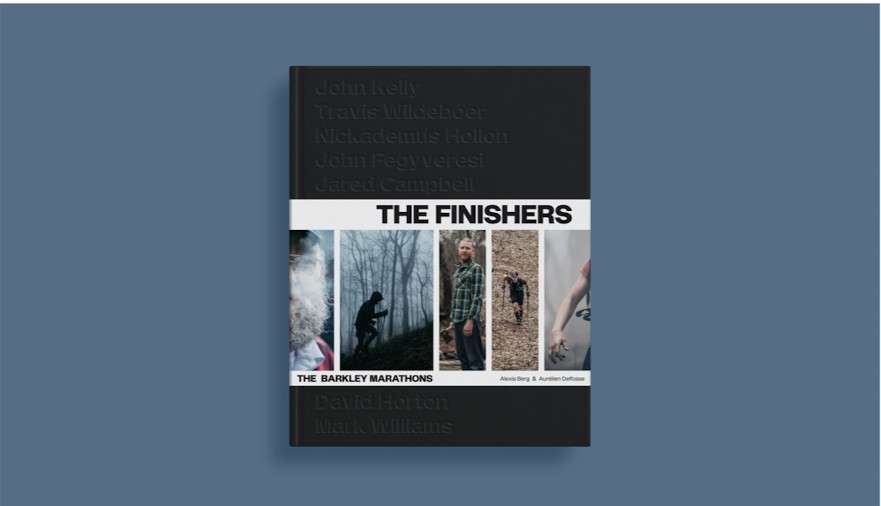

Laz Lake is well known in the world of ultrarunning. He has created several races, all of which are long, gruelling affairs, but his most famous event is the Barkley. The first running of the event was in 1986, and it didn’t see a finisher until nine years later, when Mark Williams completed the full route in 1995.
Since then, 14 more runners have joined Williams on the short list of finishers, and a couple of men have recorded multiple finishes (Brett Maune finished in 2011 and 2012 and Jared Campbell finished in 2012, 2014 and 2016). The most recent finish belongs to John Kelly, who was the only person to complete the race in 2017. (Gary Robbins of Chilliwack, B.C., has raced the Barkley three times, and came close to finishing in 2017.)
Around 40 runners get to race the Barkley Marathons every year, and the run through the woods and mountains of Tennessee starts when Lake lights a cigarette – one hour after the conch blows. Participants (and that’s what most will be — participants, not finishers) have 60 hours to navigate the five-loop course, which is not marked, and GPS devices are not allowed. In addition to running and navigating, runners must find books hidden around the course, tearing out the page corresponding to their bib number (which is different for each loop) – turning the ultramarathon into a brutal scavenger hunt.
If a runner can find each of the books (the number varies from year to year) and make it through all five laps, they will have covered about 100 miles and climbed around twice the height of Mount Everest in 60 hours or less. Finishing the first three loops in under 40 hours counts as a “Fun Run,” and is required to be allowed to attempt a fourth loop.
The Finishers
French photographer Alexis Berg and friend Aurélien Delfosse (a writer for the French sports newspaper L’Équipe) teamed up to put together The Finishers. As Berg says, he “had the crazy idea to make a very long trip through the U.S.,” and after pitching it to Delfosse, they set off on their journey, travelling around the country to talk to the 15 Barkley Marathons finishers.
Some of these athletes were easy enough to find and interview, while others had never spoken to the media, despite their monumental accomplishments in Frozen Head State Park. “If this book has any lasting meaning, it is in the depiction of these shadowy figures, seemingly ordinary yet extraordinary,” Berg says. “Each meeting at their home was, for Aurélien and me, a moment of grace, heart and intelligence. We will remember these moments all our lives.”
Berg and Delfosse endeavoured to share these meetings with the world through photography and text, and The Finishers is their final product. The book even includes a preface from Lake himself. Berg notes that this is far more than “just a sports book,” though, as it looks at the Barkley as a whole, from its inaugural running to its most recent, and uses the race to “explore our bodies, minds and the real or invented barriers that every day we decide to push back.”
The Finishers is available to purchase in French, and the English version is set to be released in March 2022 (although it can be pre-ordered now, and orders will be shipped by the end of 2021).
To learn more about The Finishers, click here, and to keep up to date on the 2021 edition of the Barkley Marathons (which we have reason to believe may be starting very soon), be sure to check in on the Canadian Running website and social channels.
(04/18/2021) ⚡AMPby Running Magazine
Eliud Kipchoge looks forward to ‘beautiful race’ at NN Mission Marathon
Twente Airport in the Netherlands on Sunday will see the Kenyan stretch his legs over 26.2 miles ahead of the defence of his Olympic title in Tokyo
Over the years the Twente Airport near the city of Enschede in the eastern Netherlands has been used by famous airplanes such as the Hawker Hunter and Gloster Meteor. But on Sunday (April 18) the world marathon record-holder Eliud Kipchoge will take to the runway in the NN Mission Marathon.

The airport course was chosen after the original venue of Hamburg was ruled out due to the pandemic. It will be Kipchoge’s first race since he finished a disappointing eighth in the London Marathon in October and he is looking forward to getting back to winning ways.
“Sunday, personally, I will be running a very beautiful race,” he said in a pre-race press conference. “I call it beautiful because we are in need and tough times during the pandemic.
“I want to run a beautiful race to show the world that actually we are on a huge, huge transition towards a great future.”

Kipchoge, 36, will tackle an eight-lap, spectator-free course and his rivals include 2012 Olympic marathon champion Stephen Kiprotich of Uganda, who has a PB of 2:06:33.
Laban Korir of Kenya is also in the field and has a best of 2:05:54, while Filex Chemonges holds the Ugandan record with 2:05:12.
In addition, Augustine Choge, the 2006 Commonwealth 5000m champion, is hoping to complete his first marathon after DNF’ing in Chicago in 2018.
In total around 50 athletes from 20 different countries will be attempting to gain the Olympic qualifying standards of 2:11:30 for men and 2:29:30 for women in an event organisers have dubbed ‘the fastest way to Tokyo’.
In the women’s race, former New York Marathon podium finisher Sara Moreira of Portugal takes on Kenyan Gladys Chesir. Moreira’s PB of 2:24:49 is slightly quicker than Chesir’s, although the fastest woman in the race is Mexican Madai Perez, who has a best of 2:22:59 but is now aged 41.
The race begins 8.30am (local time) and is due to be shown on the BBC website for fans in UK and Ireland.
So, can Kipchoge return to his best form? Was his defeat in London part of a decline or merely a blip? His sub-two-hour marathon in Vienna unfolded in autumn 2019 but in London five months ago he finished eighth in 2:06:49 in a race won by Shura Kitata. Later he blamed an ear blockage for his under-par run.
(04/17/2021) ⚡AMPby Jason Henderson (Athletics Weekly)
NN Mission Marathon
Eliud Kipchoge will bid to resume winning ways in his last race before the Tokyo games with around 70 runners looking to make the Olympic qualification standard on April 18th in Twente.After suffering a rare marathon defeat in London last October, reigning Olympic champion Eliud Kipchoge makes his return at the NN Mission Marathon in 2021. It is set to...
more...Aliphine Tuliamuk has signed with Gatorade
Ten-time USA Track and Field national champion and winner of the U.S. Olympic Marathon trials, Aliphine Tuliamuk, announced Friday that she has signed with Gatorade as she heads toward the Tokyo Olympics. She will join other notable athletes on the company’s endurance roster, including multiple American record holder Molly Huddle and Canadian triathlete Lionel Sanders.
Tuliamuk has had a whirlwind of a year, starting with her win at the U.S. Olympic Marathon trials on Feb. 29, 2020. Just under a year later, on January 13, 2021, she and her partner welcomed their first child. Now, the NAZ Elite runner is preparing to compete in the Olympic Marathon, a mere six months after giving birth.

“I’m so excited to announce that I’m a new member of the Gatorade Endurance family!” says Tuliamuk. “Over the past 12 years Gatorade is a brand I’ve trusted to fuel my body, and when I started running long distance, I fell in love with the Gatorade Endurance products. I look forward to sharing how the gels and chews are helping me perform at my best by providing critical fluids and nutrients while training for the summer games.”
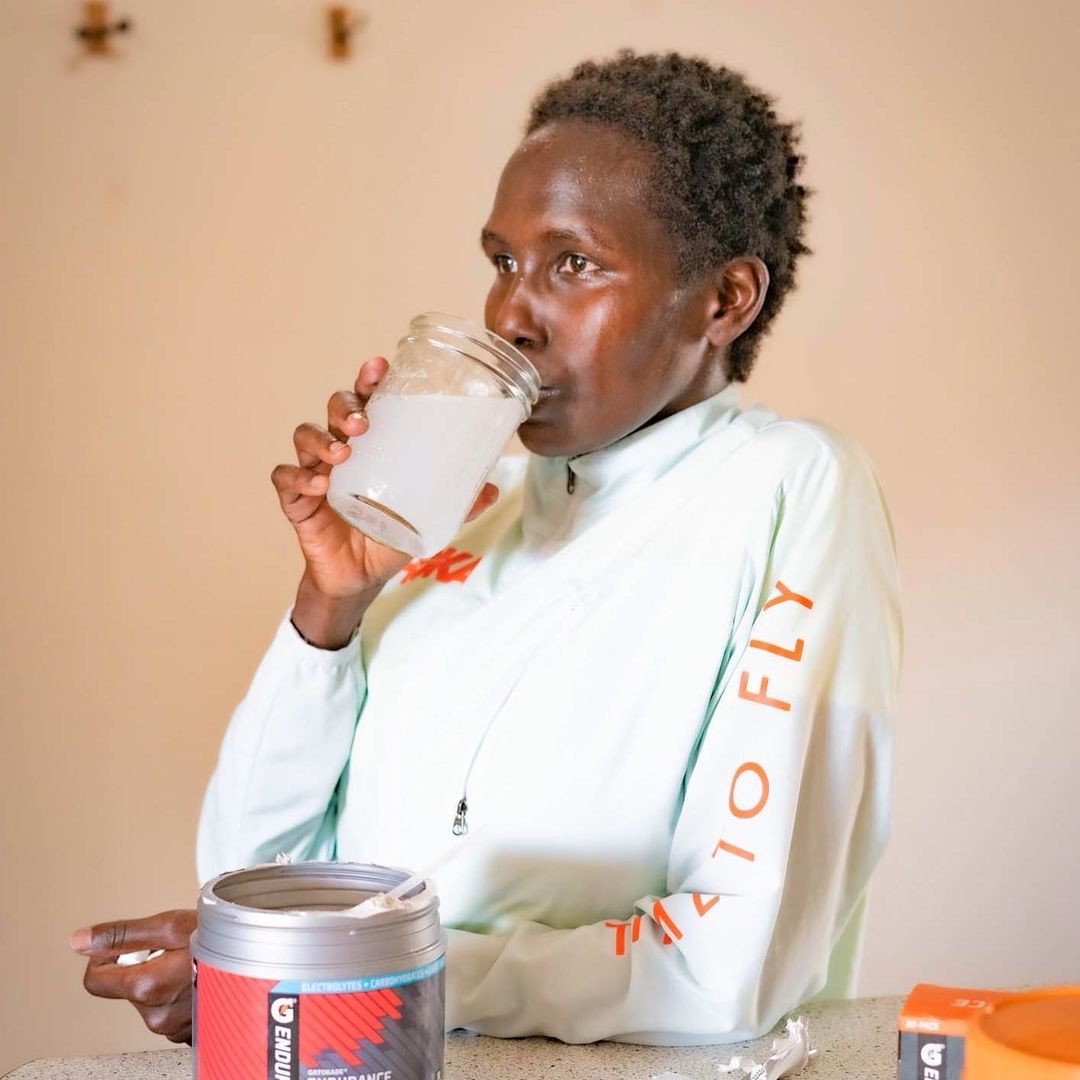
Jeff Kearny, the company’s head of global sports marketing, calls Tuliamuk a “perfect partner” as a national champion and a mother, and describes her as an inspiration, particularly for women. Since she has already been using Gatorade’s endurance products for years, she also has an authentic tie to the brand.
As the Olympics draw near, running fans everywhere will be eagerly awaiting to see how Tuliamuk fares on race day, and will no doubt be cheering her on.
(04/17/2021) ⚡AMPby Brittany Hambleton
Tokyo 2020 Olympic Games
Fifty-six years after having organized the Olympic Games, the Japanese capital will be hosting a Summer edition for the second time, originally scheduled from July 24 to August 9, 2020, the games were postponed due to coronavirus outbreak, the postponed Tokyo Olympics will be held from July 23 to August 8 in 2021, according to the International Olympic Committee decision. ...
more...2021 Mumbai Marathon is being rescheduled again due to the pandemic new date will be announced
The 17th edition of the Tata Mumbai Marathon will not be held on May 30 as it has been rescheduled owing to the COVID-19 pandemic.
“The new date will be announced in due course after consultations with the Government of Maharashtra and relevant athletic bodies,” a media release stated.
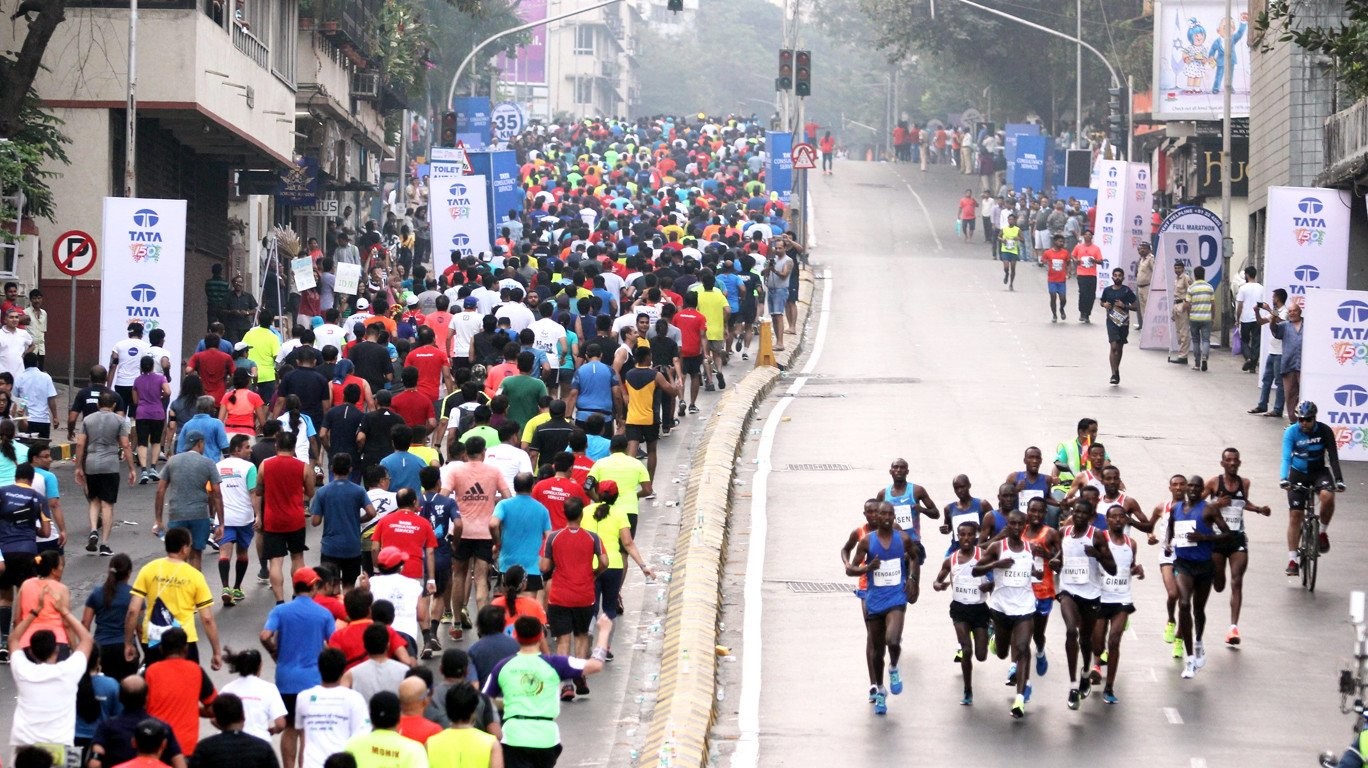
“As we navigate these challenging times, we want you to know that we are leaving no stone unturned to make the marathon possible this year. The Government of Maharashtra and our partners have been extremely supportive to ensure that we have the best possible option, keeping in mind the safety and security for all involved,” Procam International's Vivek Singh was quoted as saying in the release.

While the pandemic has not left any place untouched, Maharashtra is one of the worst affected States.
“By shifting our focus to a new date, we will continue to work closely with the State, national and international athletic bodies to identify a suitable date for the event, which is conducive to the safe conduct of the event for all stakeholders,” he added.
The marathon is always held in January but due to the pandemic it was shifted to May 30.
Mumbai has reported 8,839 new cases on Friday, pushing the total to 5.6 lakh, of which 85,226 are active cases, as per the BMC.
(04/17/2021) ⚡AMPTata Mumbai Marathon
Distance running epitomizes the power of one’s dreams and the awareness of one’s abilities to realize those dreams. Unlike other competitive sports, it is an intensely personal experience. The Tata Mumbai Marathon is One of the World's Leading Marathons. The event boasts of fundraising platform which is managed by United Way Mumbai, the official philanthropy partner of the event. Over...
more...New Hampshire track coach fired after penning anti-mask letter
Brad Keyes, a high school track and field coach in New Hampshire, has been fired after refusing to tell his athletes to wear a mask for outdoor races. The New Hampshire Interscholastic Athletic Association (NHIAA) recently released its guidelines for the spring track and field season, and officials recommended that all student-athletes wear masks during competition. Keyes, who was the head coach at Pembroke Academy for three years, sent an email to the school athletic director explaining that he disagreed with the NHIAA’s recommendation, adding that he would not enforce it. He received notice of his termination just a few days later.
In the subject line of his email, Keyes reportedly wrote “Fire me if you must,” before going into his reasons for refusing to support mask-wearing during races. While the NHIAA recommended this for its athletes, it was not mandatory, and officials left it up to individual school boards and athletic directors. To the chagrin of Keyes, Pembroke Academy athletic director Fred Vezina opted to take the NHIAA’s advice.

“I’ll come straight to the point,” Keyes wrote in his letter to Vezina. “I will not put kids on the track and tell them to run any races while wearing masks.” He continued, writing that he thought the decisions made by the NHIAA, Vezina and other boards that followed this recommendation were not backed up by science.
“This is not about protecting the athletes, or even their families, it’s all about covering bureaucratic asses,” he wrote. “I will not stand up in front of the kids and lie to them and tell them that these masks are doing anything worthwhile out in an open field with wind blowing and the sun shining.”
Keyes told the Concord Monitor, a local paper in New Hampshire, that he believes masks are necessary and that the pandemic is serious, but he added that he thinks forcing student-athletes to race in masks is “poorly thought out.”
The Concord spoke with Stan Lyford, another local track coach, who said he stands by Keyes in this matter. “Brad Keyes is not alone on the mask issue,” Lyford said. “Everyone I talk to thinks that wearing masks while running is a bad idea. It is not like soccer or other sports where you run a little and ease off. Track is full speed ahead at all times.” Despite disagreeing with the NHIAA, however, Lyford noted that he “will go along unhappily with the state’s rules.”
Since his termination, Keyes has made several appearances on various podcasts and TV shows to discuss the issue of wearing masks while racing.
(04/17/2021) ⚡AMPby Running Magazine
Indigenous community calls for Boston Marathon date change
Native Americans in Massachusetts are calling on the organizers of the Boston Marathon to move the already rescheduled date for the storied race because it now conflicts with a day meant to commemorate the contributions of Indigenous people.
The Boston Athletic Association announced in January that the 125th edition of the marathon would be pushed back from its traditional April running to Oct. 11, assuming road races are allowed to take place under Massachusetts’ COVID-19 restrictions by then.

But the Indigenous Peoples Day Committee in the Boston suburb of Newton complained the new day undercuts a day reserved for recognizing the contributions of Native Americans, past and present. The group said its first planned celebration of the Oct. 11 holiday has to be canceled because of the marathon’s new date.
“Unfortunately, the Boston Athletic Association has decided that Indigenous Peoples Day is a ‘side’ holiday that can be usurped," the committee said in a recently launched online petition. "By doing this, they are perpetuating the myth that Indigenous peoples are part of the past and irrelevant.”
The BAA didn't directly address the complaints, but said Thursday that the new date was selected in close coordination with the eight cities and towns along the marathon route. Those communities include Newton as well as Hopkinton, Ashland, Framingham, Natick, Wellesley, Newton, Brookline and Boston.
“During the date selection process, the Boston Athletic Association regularly met with representatives from the eight cities and towns for feedback and guidance on potential dates and collaboratively selected Monday, October 11,” the organization said in a statement. "We will continue working with city and town officials, as well as with organizations planning events during the October 9–11 weekend.”
Newton Mayor Ruthanne Fuller and members of the city council didn’t respond to emails seeking comment Thursday.

The Native American organization said marathon organizers should reschedule the race to give Indigenous communities the space they deserve.
“Indigenous Peoples Day is a time for everyone to learn more about the history of America as it relates to Indigenous Peoples — because we are all on Indigenous Land," the organization said in its petition. “The BAA has the chance to acknowledge the importance of keeping the spotlight on Indigenous Peoples Day rather than steal the spotlight for the Marathon.”
The BAA has said this year's race will have space for 20,000 entrants — a smaller field than prior years to allow for social distancing. There will also be a virtual race from Oct. 8-10 that will allow up to 70,000 more entrants.
First run in 1897, the Boston Marathon was canceled last year for the first time in its history. Instead, almost 16,000 people ran in a virtual race, completing the 26.2-mile distance on their own over a 10-day period.
(04/17/2021) ⚡AMPBoston Marathon
Among the nation’s oldest athletic clubs, the B.A.A. was established in 1887, and, in 1896, more than half of the U.S. Olympic Team at the first modern games was composed of B.A.A. club members. The Olympic Games provided the inspiration for the first Boston Marathon, which culminated the B.A.A. Games on April 19, 1897. John J. McDermott emerged from a...
more...What’s It Like to Run Ahead of Des Linden for 50K? Her Pacer Can Tell You
Charlie Lawrence had the task of keeping the marathoner hitting her splits for 31 miles.
Des Linden is a master of marathon pacing—that’s no secret at this point in her career.

But for her first 50K—on a deserted bike path alongside Dorena Lake outside of Eugene, Oregon—the scene was different. She had no competitors, no screaming fans, and she was running almost 5 miles longer than the distance she usually races. Plus, she was making a world record attempt.
For that, she brought in a pacer.
Who was the guy? His name is Charlie Lawrence, he’s 26, and he lives in Boulder, Colorado. Lawrence, who ran at the University of Minnesota, made his marathon debut in 2018 at Cal International, where he ran 2:16:13 and qualified for the 2020 Olympic Marathon Trials. He got to know Linden when he was running for Hansons-Brooks Distance Project, Linden’s former team, in Michigan. 

In Boulder, Lawrence works part time for a Minneapolis-based app development consulting company and is training for the U.S. 50K road championships in June. (A win there would give him an automatic berth on the U.S. team for the world 50K championships in October in Chinese Taipei.) So when Josh Cox, Linden’s agent, called Lawrence in March and asked if he would be interested in pacing her, Lawrence was excited to be a part of it, and get a solid training run in at the same time.

By now, the results are well known. Linden, 37, ran 2:59:54 and lowered the world best for 50K by more than 7 minutes. She also broke the three-hour barrier.
“Charlie is a such a great guy,” Linden told Runner’s World after the race. “I’m not a big fan of pacers but I knew he’d be great at the job and absorb a lot from the experience. Plus, I knew I could hang out with him for three hours and not get irritated.”
Linden added that they didn’t chat much but they worked well together. “Having him as a bit of a moving target late in the race was definitely what got me under 3.”
Lawrence answered a few questions from Runner’s World about what it was like to be there every step of the way.
Runner’s World: How did this come about?
Charlie Lawrence: It was January 2021. Des and I were just texting about what’s on the calendar this year, with so many things gone because of Covid. She said, off the record, “I think I want to go for the 50K world record.”
The biggest thing on my calendar was I wanted to try to make the U.S. team for the world 50K champs. I told Des that if I can help in any way, I’d love to help. She said, “Absolutely, we’ll follow up.”
About a month ago, I was down in Scottsdale, Arizona, for a race, and Des was there. We were talking about it and she said it was going to be mid-April. The next week Josh texted me and let me know that if I wanted to do it, I’ve got first dibs.
I went to Cory Leslie, my coach. He said it makes sense—it’s eight weeks out from the U.S. 50K road champs. I could get an awesome long run in, and learn from Des and practice bottles and fluids. It was a perfect storm to help a friend and mentor break a world record.
I have run with Des a handful of times in the past few years, but to be honest, we have probably had more coffee and beer together.
How did you work out where you would be running?
It was myself and Ryan [Linden, her husband] helping pace her. I was off her shoulder. It was very calm at the start. She said, “Run at the side, it feels easier and more natural.” That’s what we did the whole way out to the first turnaround. At 15 or 16 miles, the wind picked up a bit. It was swirling. There was a cross wind, so I went to either side of her, depending on which side the wind was coming from. When it was a headwind, I’d get in front of her.
I was getting the splits on my watch and I’d say, “5:45—right on the money,” just talking to her. There was a mile early on that was 5:38. I was like, “All right, we’ll dial it back. We just need to be running 5:45, 5:50.” She goes, “Yup, sounds good.”
Were you nervous at all heading in?
It was more like nervous excitement. Let’s do this thing. It was a cool opportunity for Des. My strong suit is I’ve been able to string together some awesome long runs, some 25-milers, sub-5:40 pace, at altitude. That’s the reason why I’m going for 50K. And this was a chance to get an awesome workout in and help Des achieve a goal of hers. I knew I could handle it. The pressure was just on me to do everything I possibly could to help Des break the record.
We had a pace goal going into the race, so the goal was to be as even as possible and just click off splits as close to that goal. Coach Drenth [Walt Drenth, Linden’s coach] gave Des splits he thought she could run. Josh talked us though some pacing as well. [Linden ended up averaging 5:47 pace.]
Did she hit any rough patches?
She was definitely feeling it a little bit the last 5K. I felt kind of bad, in the last two miles, I was out in front of her, and I got a few too many steps in front of her. Instead of 5 feet it was about 5 yards. So I said, “Let’s go, Des, finish this, finish this.” She kept it all together just like a pro. She hung together. When we were at about 2:59, she’s was like, “Awesome, let me take it.” I said, “ Finish it off, champ,” and I pulled off. You can see me in some of the photos in the background with my finger pointing, throwing up a one. To be able to play a small role in helping her, it’s one of the biggest highlights in my running career thus far.
Did Des pay you for this?
No, but they covered everything for the trip. After the race was over, we went to The Allison in wine country and stayed up there. They took awesome care of me. I tried paying for stuff and got harassed.
So it was an all-expenses-paid trip to Eugene and wine country and all you had to do was run 50K?
Exactly. Don’t screw up. Let’s get Des a world record.
How did you feel physically after?
The legs feel awesome. I woke up the next day, got an easy hour run in, got some core in. Legs feel like I’m coming off a hard long run in Boulder. My body responds well to it. It’s business as usual. I’m back to training.
Would you have any advice for middle-of-the-pack runners who are pressed into pacing duties?
My best advice to anyone who might pace friends is to absolutely do it. This sport is so great because of the people. What better way to spend time with someone than very high-quality miles, either pacing or just on everyday runs?
(04/17/2021) ⚡AMPby Runner’s World
This 90-Year-Old From Kansas Ran 90 Laps Around a Track to Celebrate His Birthday
Marvin Hachmeister arrived at Kansas State University’s Ahearn Field House at 6:30 a.m., when the track was still empty, on March 9. It was his 90th birthday, and he was setting out to run 90 laps of the indoor track.
If this sounds unusual to you, it’s not for Hachmeister; in fact, this is far from the first time that Hachmeister has spent several hours running on his birthday. In 1981, when he turned 50, a crew of track and cross-country kids at the school he taught at bet Hachmeister that he couldn’t run 50 laps around a 200-meter track. He did it that year and has continued running his age in laps on his birthday every year since.

“I just keeping adding a lap very year,” Hachmeister told Runner’s World. “That‘s what I’ve been up to these days.”
Hacheister started running in high school in 1946. He picked up longer distances starting in 1979; a blood test revealed his blood was low on oxygen, and exercise was suggested. Now, Hacheister runs six days a week, mostly with his Australian cattle dog. Also, he lives on a farm, and still does quite a bit of farm work on top of his running.
After years as a high-school shop and manual labor teacher, he took another job at to Kansas State University, where he became close with the track and cross-country team. The runners occasionally join him for laps on the track.
“I used to be able to talk more when running, but as I get a little older, I use every breath of oxygen up,” Hachmeister said. “I’ve got a few guys who run regularly with me, not this year, but used to. I used to tell them if they wore headphones, I couldn’t talk to them. Now, I don’t care because I need to breathe harder.”
For four decades now, Hachmeister has gathered friends to join him for his annual birthday run. The people he has met through running are the reason he keeps going, which is why his two most recent birthday runs have been difficult.
“I really like going to races and runners, as a whole, are jolly-good people,” Machmeister said. “I really like the social part because of things like I was by myself after my wife passed away in 2012. A person has to be careful. They can sit back and go into depression or something. The social aspect of running helped me a lot.”
In 2020, he was 48 laps into his run when staff cleared out the field house because the school was shutting down due to the pandemic, and he was forced to abandon his run.
This year, Hacmeister, who is fully vaccinated, tackled most of his run alone, though some of the Kansas State cross-country runners joined him for the first few laps as they began practice. Hachmeister ran three miles before stopping for a drink and to switch directions. He finished his 11.85-mile journey in about 2 hours and 15 minutes.
“I’m glad I got it done again this year,” he said. “I would like to make it being able to do a 5K at 95. I’ll just have to see. I’m in pretty good health and don’t have any health problems that I know of. I’m always gonna keep going if I can.”
(04/17/2021) ⚡AMPby Runner’s World
Internet has reacted to Team Canada’s Tokyo 2020 jackets
Eight months ago, the outfits our Canadian Olympic team will be wearing at the closing ceremonies were released. No one seemed to notice until a viral tweet about the jackets on Wednesday set off a social media storm.
Twitter users from Canada and around the world had a lot to say about the graffiti-denim look, which was designed by Hudson’s Bay and Levi’s, and reactions ranged from comical to completely horrified.

The original tweet that started it all came from Twitter user Downtown Brandi Frown (@ItsTheBrandi), who (jokingly) called for a cancellation of the Olympics upon seeing the outfits for the first time.

The user followed the initial tweet with several others, including one that poked fun at the “Canadian tuxedo,” otherwise known as wearing a denim shirt or jacket with blue jeans, saying “Sorry but if Canada isn’t gonna wear jeans with those jackets they should just forget the whole concept.” Other users began chiming in, including Canadian Olympic race walker Evan Dunfee.
Another Twitter user said, “They really are leaning into the Canadian tuxedo, huh?”, while another asked, “Did they forget they had to submit something and get these made at a mall kiosk?” One Twitter went so far as to say the jackets are completely inappropriate — unless, of course, they’re worn with jeans.
Others have compared the Canadian uniforms to the Ralph Lauren-designed outfits the American team will be sporting at the closing ceremony, saying “the U.S. vs Canada Olympic outfits look like the plot of a bad 80s camp film where the freaks/geeks have to overcome the preppies.”
Whether you like them or not, the jean jackets aren’t going anywhere, and one thing is certain — Canadians are certainly going to stand out at this year’s closing ceremonies.
(04/16/2021) ⚡AMPby Brittany Hambleton
Tokyo 2020 Olympic Games
Fifty-six years after having organized the Olympic Games, the Japanese capital will be hosting a Summer edition for the second time, originally scheduled from July 24 to August 9, 2020, the games were postponed due to coronavirus outbreak, the postponed Tokyo Olympics will be held from July 23 to August 8 in 2021, according to the International Olympic Committee decision. ...
more...Endurance athlete from Bristol is hoping to run 200 marathons in 100 days
In 2019, Nick Butter became the first person to complete a marathon in every country of the world.
The gruelling challenge took him from North Korea to El Salvador, across war zones and freezing temperatures. At one point he was bitten by a dog and mugged.

Nick's latest feat is unlikely to take him to such extremes, as he'll be running along the coast of Britain - but he will be attempting to complete two marathons a day.

Starting at the Eden Project on Saturday April 17, Nick will run for 14 hours each day to cover 52.4 miles (a double marathon), every day for 100 days.
He will run 5,240 miles in total, ending up where he began at the Eden Arena on Monday July 26.
I honestly don't know if I can do it but we're going to give it a go. He says.
Nick will be supported by a team of five people across three camper vans.
The first will hold his support team, keeping him safe and fed, the second will be his media crew and the third will be his home on the road. It will be driven by Nick's girlfriend Nikki and their dog Poppy will also join them.
When Nick ran across the world, he did it in aid of Prostate Cancer UK after a fellow ultra runner, Kevin Webber, was diagnosed with the disease.
He has so far raised more than £140,000.
For his 2021 challenge, he has set up The 196 Foundation. Its title comes from the 196 countries across the world and reflects all the needs across the planet.
Each year it will support one cause, voted on by the foundation's donors. It could be anything from buying a wheelchair for a family to building a school.
The 30-year-old hopes to be joined by other runners along the route. "We'd love to have some company and people to come and keep me company for the 100 days," Nick said.
"When I'm running for 11 hours a day, getting through 9,000 calories, I need all the help I can get".
(04/16/2021) ⚡AMPGreat North Run is facing struggle over insurance guarantee
The Great North Run is facing a "struggle" because of issues getting insurance in case it has to be called off due to Covid-19, the founder says.
Sir Brendan Foster said "the key tool" in holding major events was missing and there had been "a huge market failure".
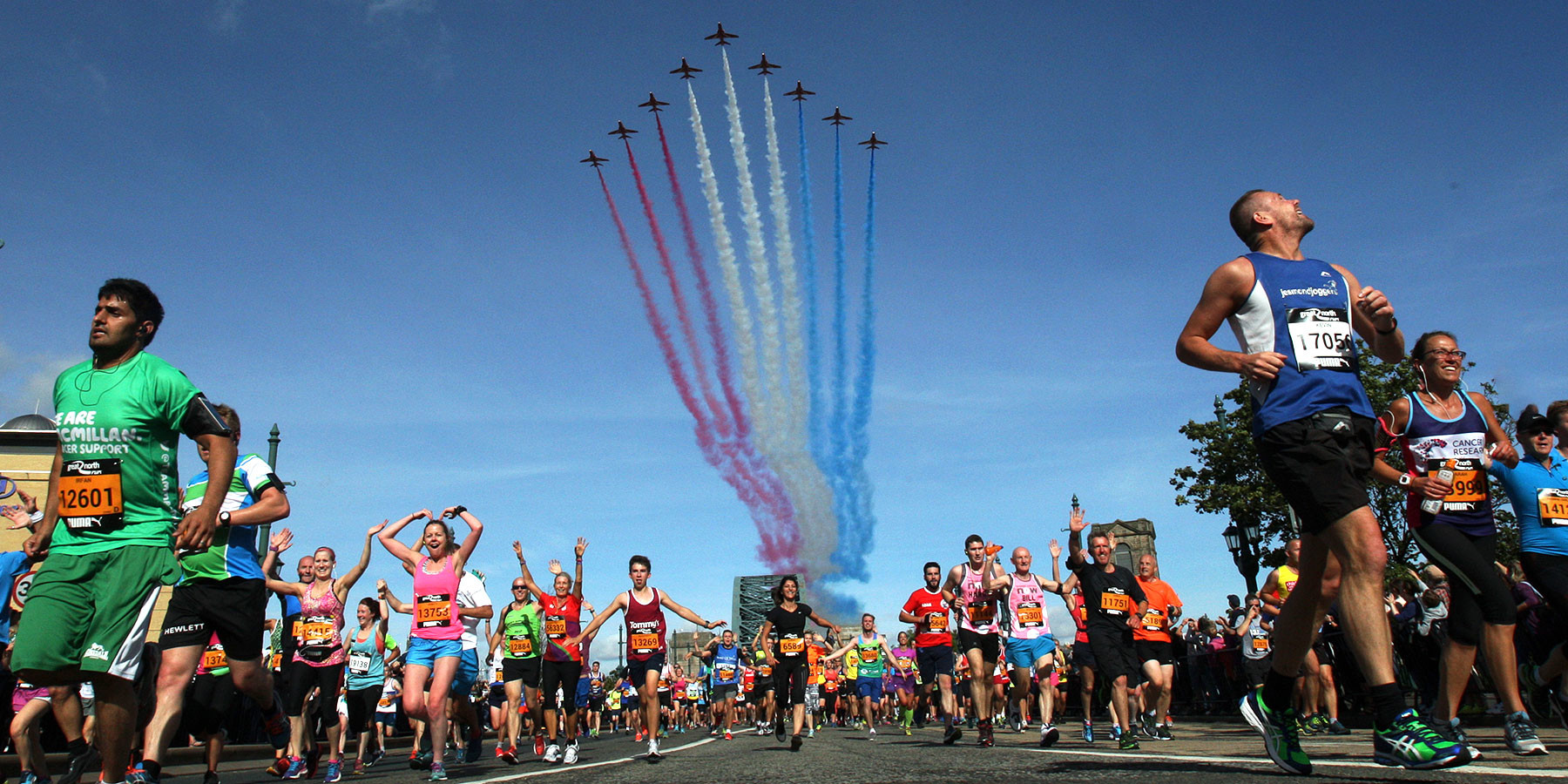
He said organizers faced being liable for costs and called on the government and insurance sector to meet.

The government said it was aware of the "wider concerns" around securing indemnity and was "exploring" support.
The Association of British Insurers (ABI), which represents the sector, said it was "happy to continue to engage with the government".
The Great North Run - the world's largest half marathon - was set to celebrate its 40th anniversary in 2020 but it had to be held virtually because of coronavirus.
This year's event is due to take place on September 12, with about 57,000 adults set to run between Newcastle and South Shields.
Sir Brendan said organizers were "cautiously optimistic" it would take place but they would look to hold an alternative if the event was unable to go ahead as planned.
"We will struggle, we will have to look forward to see how we can do it, we will have to see what shape we can do it," he said.
This is not about the Great North Run, this is about the government seeking to bring it back to normal and seeking to make sure that Britain gets back on its feet by the autumn.
"Unfortunately, to open up these large events and to ease the restriction on these large events, the key tool in doing that is missing at the moment because the insurance industry is not available to offer insurance."
The government said its events research programme would consider how effective various measures were at reducing transmission risk at large events, including using testing.
"The programme will start this weekend with pilot events carried out across a range of settings, venue and activity types," it said.
The ABI said it had made it clear to the government "the very limited risks" the commercial market was able to provide cover for.
"With the Covid-19 public health emergency continuing to present a significant risk of cancellation or disruption, commercial insurers remain unable to offer this type of cover, or only at a cost that is unaffordable for many," a spokesperson said.
"Insurers continue to provide support for a wide range of other risks, and event organizers should discuss their needs with their insurance advisers, who can fully explore all insurance options in the market."
(04/16/2021) ⚡AMPGreat North Run
Great North Run founder Brendan Foster believes Britain is ready to welcome the world with open arms after the launch of the event's most ambitious plan to date. The Great World Run campaign seeks to recruit one runner from every country in the United Nations – 193 in total – to take part in the iconic half marathon in...
more...World 100m champion Christian Coleman has two-year ban reduced by six months
Coleman has had his two-year ban for missing three drug tests reduced by six months following an appeal to the Court of Arbitration for Sport (Cas).
The 25-year-old American will still miss the Tokyo Olympics starting in July as the ban runs until 14 November.
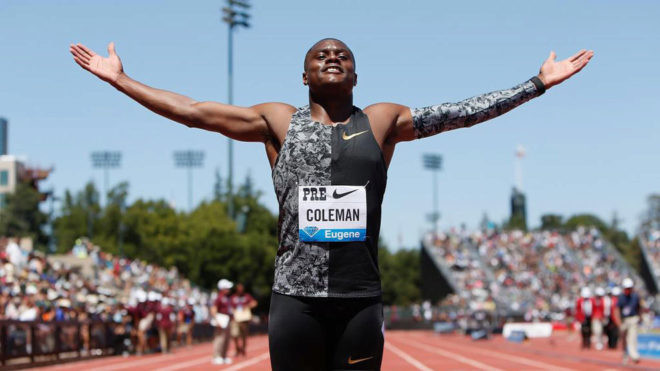
He can, however, defend his world indoor and outdoor titles next year.

Cas "partially upheld" the Athletics Integrity Unit's (AIU) ruling but found his "degree of negligence to be lower".
Coleman, who won 100m gold at the World Championships in Doha in 2019, was first provisionally suspended in June 2020 after missing a third test in December 2019.
The indoor 60m world record holder did not contest his first missed test on 16 January 2019 but disputed his filing failure on 26 April 2019 and whereabouts failure on 9 December.
The AIU investigation into his rule violations said there was no suggestion he had ever taken a banned substance.
However, Coleman's attitude towards his anti-doping obligations was described as "entirely careless, perhaps even reckless" by the AIU in October.
According to the AIU's out-of-competition testing guidelines, athletes are accountable for missed tests if they are not at their specified location for the one-hour period they have stated. The tester must wait for the full 60 minutes before leaving.
Coleman said he was Christmas shopping "five minutes away" from home, and that the tester made no effort to contact him during his third whereabouts failure.
Cas said Coleman "should have been on 'high alert' on that day" considering his previous whereabouts failures, but decided "he would have been able to return" in time to do a test if contacted.
"Although a telephone call during the 60-minute window was not required by the rules, it was nevertheless reasonable for the athlete to expect such a call, as a matter of standard practice among other doping control officers," Cas said in a statement.
(04/16/2021) ⚡AMPby Athletics
Top Japanese official says that Tokyo Olympic Games could be still cancelled amid coronavirus fears
According to a report by Global News, a senior member of the ruling party in Japan has said that if the coronavirus situation becomes too dire, the 2021 Tokyo Olympic Games could still be canceled. This statement comes less than 100 days until the Games are set to begin and in the midst of a rising fourth wave of infections.
Currently, Japan is struggling with a rising number of coronavirus infections after the government ended a state of emergency. The number of infections in Tokyo is trending upward, and Osaka is experiencing a record number of cases. The government is still moving forward with plans for the Games, which includes several restrictions, social distancing measures and no international spectators, but Toshihiro Nikai, secretary-general of the Liberal Democratic Party, says that if they have to pull the plug, they will.

“If it seems impossible to do it anymore, then we have to stop, decisively,” he said. “If the Olympics were to spread infection, then what are the Olympics for?”

Another government official countered Nikai’s comments, saying they will hold the games “in a way that’s feasible.” This, he added, might mean having no spectators at all. Statements from both officials come in the midst of an anti-Olympics social media storm on Thursday, when more than 35,000 Twitter users tweeted about canceling the Games. Since the pandemic began, support for the Olympics has been low in Japan, with recent polls suggesting that at least 40 per cent of the country’s population think they should be cancelled.
No decision has been made yet, but Japanese lawmakers are under mounting pressure as the Games draw near. Olympic organizers, Japan’s National Olympic Committee and the Tokyo government have not yet addressed the comments.
(04/15/2021) ⚡AMPby Brittany Hambleton
Tokyo 2020 Olympic Games
Fifty-six years after having organized the Olympic Games, the Japanese capital will be hosting a Summer edition for the second time, originally scheduled from July 24 to August 9, 2020, the games were postponed due to coronavirus outbreak, the postponed Tokyo Olympics will be held from July 23 to August 8 in 2021, according to the International Olympic Committee decision. ...
more...The governments of Hokkaido, Sapporo to cancel 10 km race on Olympic marathon course
The governments of Hokkaido and its capital Sapporo have decided to cancel a 10-kilometer foot race scheduled for next month on the Olympic marathon course, a source with knowledge of the matter said Thursday.
The race on part of the official Tokyo Games marathon course had 2,500 entrants and was due to take place on May 5 as part of the Hokkaido-Sapporo Marathon Festival, which will feature a half-marathon run as an Olympic test event.
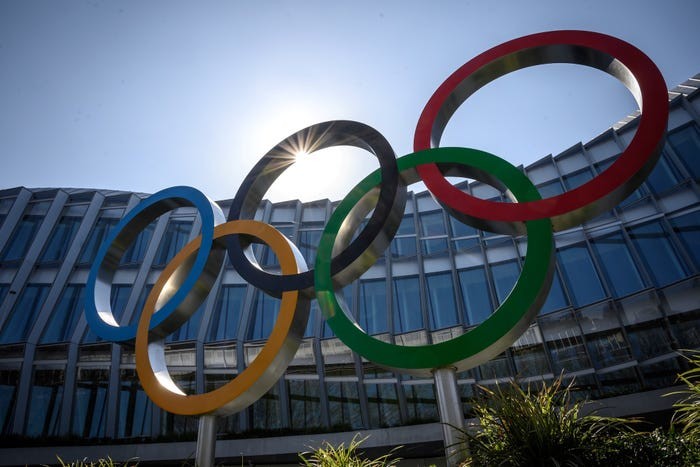
The half marathon will go ahead as planned, with approximately 160 elite runners including some qualified Olympic athletes making up the field.

The northern Japanese prefecture of Hokkaido and its capital Sapporo have become a hotbed for the spread of coronavirus after recording dozens of cases of people infected with COVID-19 variants.
Sapporo has requested residents refrain from non-essential, non-urgent outings in the city and to avoid cross-regional travel for three weeks until this Friday.
City and prefectural authorities plan to extend the request until May 14, leading to the decision to cancel the race.
(04/15/2021) ⚡AMPby The Mainichi
Tokyo 2020 Olympic Games
Fifty-six years after having organized the Olympic Games, the Japanese capital will be hosting a Summer edition for the second time, originally scheduled from July 24 to August 9, 2020, the games were postponed due to coronavirus outbreak, the postponed Tokyo Olympics will be held from July 23 to August 8 in 2021, according to the International Olympic Committee decision. ...
more...RunCzech introduces battle of the Teams marathon event
RunCzech has announced plans for an event named Battle of the Teams, a competition that will bring 32 of the world’s best runners together to race on teams in this year’s elite-only Prague Marathon. Four teams of eight runners (four men and four women) will line up in Prague to compete in this game-changing race, which will take the marathon from its usual wholly individual run and turn it into a team event. The Battle of the Teams is set for May 30, and its unique format will make it a must-see race.
As noted on the Battle of the Teams website, the crew at RunCzech asked the question “What if we could present [the marathon] as a team sport?” In this case, “the drama doesn’t end when the first runner crosses the finish line. In fact, it’s just getting started.” Like a cross-country race, this team format forces athletes to push until the very end, no matter how poorly they may be running, because every second counts for their team.
While there will be eight runners per team, only six will register scores. Two runners will race as backups, and if any of their teammates have to drop out, they will move into scoring position. Athletes earn points based on their finishing times, and the team with the highest cumulative score in the end takes the win. In addition to one’s general time earning points, if a runner drops a PB, he or she will earn a 10 per cent bonus in points for their team.

Since this is a RunCzech event, every team will feature an athlete from the Czech Republic. The rest of the runners will be international athletes. The makeup of each team will be determined in a “draft” in which each runner’s PB from the past four years is taken into account. They will then be divided into the four teams to make the field as evenly distributed as possible.

Pre-race hype
RunCzech has a few plans to get people excited for this race. Firstly, each team will be assigned a “captain,” although this person will not be running. Instead, these captains will be other Czech Republican athletes, such as soccer, tennis and hockey stars, each of whom will promote their teams and hopefully attract attention from the Czech public.
Captains will represent their teams at the draft, which will be televised, much like the NBA or NHL drafts are. This will be another chance for organizers to hype up the event before race day. Finally, each team will have a corporate sponsor, and runners will wear uniforms for the race.
Other races
Alongside the Battle of the Teams race, the Czech national marathon championships will be run. In this race, about 80 athletes will compete, many of whom will use the opportunity to try to run under Olympic standard and qualify for the Tokyo Games. Other than those extra 80 runners, though, race organizers won’t accept any additional entries.
For runners who want to be part of the RunCzech event, there will be a virtual race that will last most of May. The Volkswagen Prague Virtual Marathon will run from May 3 to 31, and 10 per cent of all registration fees will be donated to charities that the four Battle of the Teams squads will choose to support. In addition to this chunk of registration fees, the corporate sponsors involved in the Battle of the Teams will match this donation, doubling the total raised for charity.
The Battle of the Teams has the potential to be one of the most interesting races of 2021, and it will be a can’t-miss event.
(04/15/2021) ⚡AMPby Ben Snider-McGrath
The most common running injuries every new runner should know about and how to avoid them
As any runner can tell you, pounding the pavement is not all runner’s high—there are aches and pains that come along with it. Running injuries can run the gamut from annoying to sidelining, which is why it’s important to accurately identify what’s going on.
Running is a high-impact exercise, meaning your entire body takes a bit of a beating when you run for a prolonged period of time.
Runner’s knee

What it is: "Patellofemoral pain syndrome, more commonly referred to as runner’s knee, is a dull, achy pain that originates underneath your kneecap and is typically felt during running, especially uphill, walking down stairs, or when moving from a sitting position to a standing position," John Gallucci, Jr., M.S., D.P.T., president and CEO of JAG Physical Therapy, tells SELF.
This is the most common running injury, especially for new runners, Ferber says. He notes that for some people, the pain may start at the beginning of the run, subside throughout, and then pick up again as soon as you stop running.

What causes it: "It's a grinding injury," Ferber says. There's cartilage under your kneecap and also along your thigh bone, and a layer of fluid in between the two works as cushioning, Ferber explains. He says to think of the kneecap as a train, and the thigh bone (femur) as the train track. When the hips are weak, the thigh bone loses its stability and moves underneath the kneecap. "The railroad track starts moving. Those pieces of cartilage start to rub together, and that’s what causes the pain," Ferber explains.
How to treat it: This is something most runners can deal with and will attempt to run through, Dr. Gallucci says. But (surprise!) that's not a good idea. "If not properly managed, patellofemoral syndrome can progress into a more severe injury that could require surgical intervention, such as a fissuring or fracturing of the patella," he says.
Initially, you should stop running and try to limit inflammation—taking anti-inflammatory medications such as ibuprofen can help.
How to prevent it: After you’re pain-free, work on strengthening your hips, says Ferber, who coauthored a study on the benefits of treating runner's knee with hip and core exercises. In the study, people with knee pain who completed six weeks of core and hip strength training reported an earlier resolution of pain and gained more strength than those who performed knee-focused rehab.
Plantar fasciitis
What it is: Plantar fasciitis causes a stabbing pain on the bottom of the foot near the heel. "It's usually a little bit stiff at the beginning of a run, and then the pain goes away. Then it's a little stiff when you finish," says Ferber. "But it hurts first thing in the morning. That first step out of bed is excruciating at the heel. It can take 15 to 30 steps to get it warmed up and to go away, and then you kind of forget about it."
What causes it: The plantar fascia is a thick band of connective tissue that runs along the sole of the foot from the toes to the heel. Its job is to support your arch, Ferber says. "It gets stretched every time the foot comes down, and runs back out as the foot pronates," he explains. It's designed to be thick enough to withstand these forces, but too much repeated tension on the fascia can cause irritation and inflammation.
Since the fascia is connected to so many parts of your foot and leg, there are many things that can contribute to plantar fasciitis. Poor running mechanics, flat feet, weakness of the hips, weakness of the core, poor control of pelvic positioning, and nerve irritation in the lower back can all contribute to this inflammation and pain, Dr. Licameli says. Tight calf muscles or even inflexible toes can strain this connective tissue, too, adds Ferber.
How to treat it: "We say to stretch and do heel raises to make sure the muscles crossing underneath the foot are good and strong. That takes the load off the plantar fascia," Ferber says. "Plus, a good arch support (just an over-the-counter orthotic) will take some stress off." Dr. Licameli also suggests strengthening your hips and core.
How to prevent it: Strengthening exercises are helpful for prevention, too. "And always warm up properly," Dr. Licameli says.
Achilles tendinitis
What it is: This type of tendon injury causes inflammation and pain in your Achilles tendon (along the back of your heel), especially when walking, running, raising up on your toes, and stretching your calf muscles, Dr. Licameli says. It's an aching, dull pain, usually right where the muscle transitions to tendon, Ferber says.
The pain can also be deeper in the thickest part of your tendon, which is more common as you age. “You lose blood supply in the mid part of the Achilles tendon and it becomes brittle. It starts happening in about your 40s," Ferber explains.
What causes it: Any weakness or tightness in the calves, glutes, or hamstrings can affect the Achilles tendon. We use our calf muscles and glutes to propel us forward, and if they're not their jobs, smaller things like tendons have to take over, which can end up causing a lot of strain. Dr. Licameli adds that having weak hips or core or flat feet can all impact how much strain is on the Achilles tendon.
It also tends to be more common when people increase their activity suddenly, whether it’s running more miles or increasing speed.
How to treat it: You may need to rest from high-impact activity until the pain resolves. Icing the affected area can also help you feel better. But again, strengthening and stretching the muscles at play is key here. Often it's the hips or calves that need to be strengthened, but issues with the feet are core are common too.
How to prevent it: Continue stretching and strengthening those muscles. Since there can be so many different causes, you need to figure out the main one in order to properly treat it—that's why it's so important to see a professional to help you get to the bottom of it, Ferber says.
While many people new to running might think the dreaded stress fracture is an injury reserved for more experienced—and higher mileage—runners, it can actually hit beginners too, says Dr. Vasudevan. Stress fractures are more likely to occur when there is a change to a running routine, such as more miles, a different terrain, or a higher intensity, he says. That means a beginner who is just getting started, and ramps up too soon, can be at risk.
Strengthening can help improve your biomechanics when running, says Dr. Vasudevan. You’ll also want to make sure you’re not increasing mileage too rapidly or suddenly changing your running terrain. Fueling your activity properly is important too.
(04/15/2021) ⚡AMPby Amy Marturana Winderl, C.P.T.
South African Caster Semenya won 5,000m race, falls short of Tokyo qualifying time
Double Olympic 800 meters champion Caster Semenya moved closer to qualifying for the 2020 Tokyo Games in a new event after defending her South African championships 5,000m title in Pretoria Thursday.
Semenya trimmed nearly 15 seconds off her personal best by crossing the line in 15 minutes 52.28 sec - 42.28 sec outside the Tokyo qualifying time of 15:10.
The race was staged at an altitude of 1,339 m (4,393 feet) and Semenya is considering running the same distance at sea level, where the air is less thin and times generally faster.
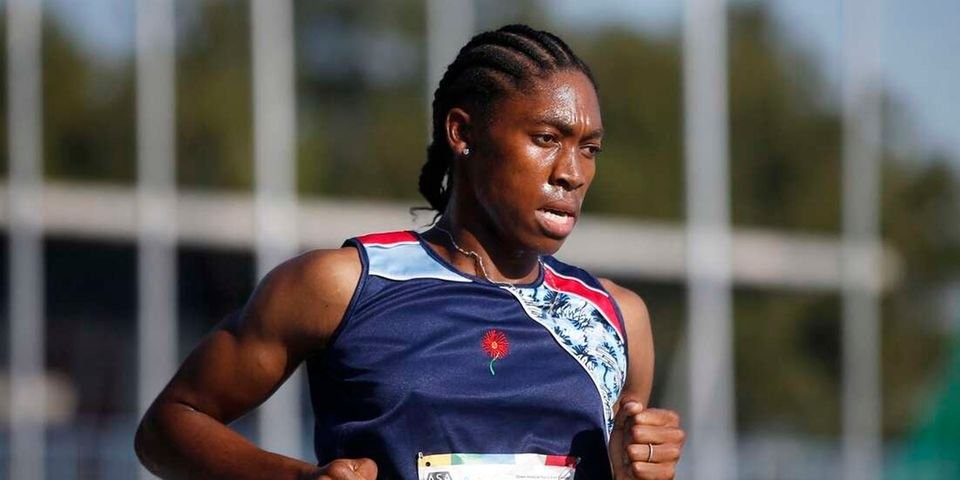
"If the guys in Durban (sea-level city) do something in May, I might run," Semenya said after her victory.

The qualifying deadline for Tokyo is June 29 with the Games scheduled from July 23 to August 8.
Semenya cannot defend the 800m title in Japan as she refuses to abide by World Athletics' testosterone-reducing regulations covering distances from 400m to the mile.
The South African is among a minority of female athletes who have an unusually high level of testosterone, which gives them added strength.
Two legal bids by the South African to overturn the ban have failed and she has taken her fight to the European Court of Human Rights, who have not indicated when the case will be heard.
"I am pretty happy with how I ran (today) - it is all about having fun. I can't really focus on Tokyo if I'm still building up myself at the moment."
The 30-year-old winner of the London and Rio 800m Olympic gold medals turned the tables on her training partner Glenrose Xaba, who clocked 15:55.25 and had beaten Semenya comfortably in a regional meet two weeks ago.
Last year, Semenya announced she would pursue Olympics 200m qualification.
But the three-time 800m world champion has changed her mind, believing distance races will lengthen her career.
"I am 30 years old and if I were to do sprints it would be a risk to my muscles. In distance (running), there is more time to find consistency," said the three-time world 800m champion.
(04/15/2021) ⚡AMPWorld marathon record holder Eliud Kipchoge travels to Netherlands for NN Marathon
World marathon record holder Eliud Kipchoge will compete in the NN Mission Marathon in Dutch city of Enschede on Sunday.
“NN Mission Marathon will go ahead as planned on April 18 and will be moved from Hamburg to Enschede, The Netherlands, on the specially designed course on Twente Airport which will be closed for general audience,” race organisers said yesterday in a statement.
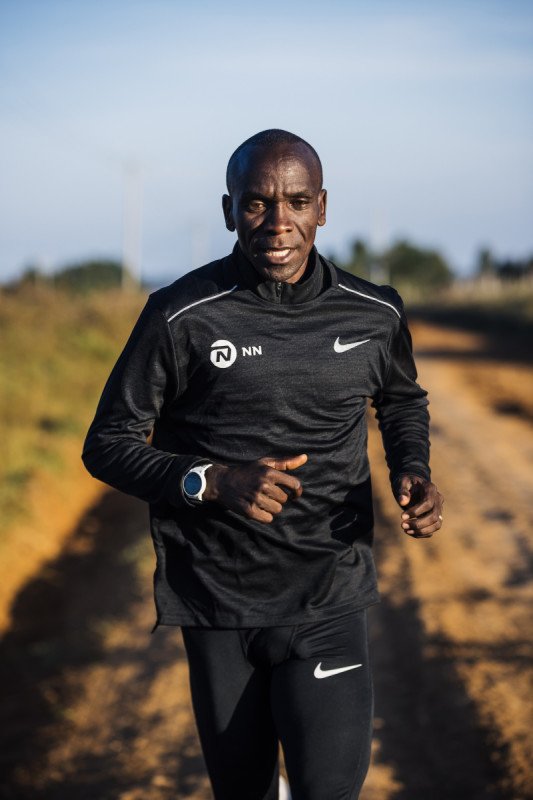
The race which was initially planned for April 11, was pushed forward by a week due to Covid-19 restrictions in Hamburg.
And on Tuesday, Kenyan competitors started their journey to Nairobi from Eldoret, Uasin Gishu County via road due to Covid-19 restrictions which have forced suspension of local flights. In Nairobi, the athletes boarded the KLM Airlines flight and were expected in Enschede at 7.00am.

Another group of pacemakers will leave Kenya on Thursday for Enschede.
Kipchoge will be joined by up to 70 elite athletes who are seeking to qualify for the 2020 Olympics Games. The notable athletes include 2012 Olympics Games marathon champion Stephen Kiprotich from Uganda, his training mates Laban Korir and Jonathan Korir, Uganda’s Filex Chemonges, and Ethiopia’s Tadese Abraham.
Kiprotich, who used to train with Kipchoge at the Global Sports Communication camp in Kaptagat but has since changed his training to Kapchorua in Uganda, said his focus is to qualify for the Tokyo Olympic Games.
“The virus has really demoralised many athletes because even if they train, where are they going to compete? I have trained well and my focus now is to qualify for the Olympics Games and join my compatriot Fred Musoba who has already qualified,” revealed Kiprotich.
(04/14/2021) ⚡AMPby Bernard Rotich
NN Mission Marathon
Eliud Kipchoge will bid to resume winning ways in his last race before the Tokyo games with around 70 runners looking to make the Olympic qualification standard on April 18th in Twente.After suffering a rare marathon defeat in London last October, reigning Olympic champion Eliud Kipchoge makes his return at the NN Mission Marathon in 2021. It is set to...
more...Falmouth Road Race and At-Home Edition registration opens May 1
While the ASICS Falmouth Road Race awaits COVID-19 guidance from the Commonwealth of Massachusetts and the Town of Falmouth on hosting an in-person event in 2021, registration will open Saturday, May 1 for the At-Home Edition – with the possibility of running the in-person race, if held, on August 15.
During the At-Home Edition registration process, an option will be offered to run the in-person event. Choosing that option will place At-Home registrants in a random-selection drawing to run the in-person ASICS Falmouth Road Race on August 15.

This will be the only opportunity to be considered for the in-person race. Those not selected, based on the total field size allowed, will still be registered for the At-Home Edition, to be run any time from August 7 to August 14.

Registration will remain open until 10,000 sign up for the At-Home Edition, regardless of the number who chose the in-person option.
“Our virtual At-Home Edition was a big success last year and was really a summer-long event with giveaways, contests, and an ever-changing virtual gift bag,” said Jennifer Edwards, executive director of Falmouth Road Race, Inc. “If we’re allowed to have an in-person race of some kind, those not chosen in the random-selection process to run the live event on August 15 will still get all the perks of the At-Home version.”
On the registration form, Falmouth residents and taxpayers – who typically are guaranteed entry to the in-person event – will be able to declare that status. Depending on the field size allowed, the race may or may not be able to guarantee resident/taxpayer entry to the in-person race in 2021.
Last year, the first 5,000 entrants to the 2020 At-Home Edition were given guaranteed status for 2021. Because there is no certainty of an in-person race, those 5,000 have been given the option to defer their guaranteed status to the 50th running instead of this year. The organization will honor the choice they made, pending town approval of an in-person event in 2021. If there is no in-person race, their entry will automatically be deferred to 2022.
Registration for the SBLI Kids At-Home Challenge will also open May 1. Due to COVID-19 uncertainties, the Kids At-Home Challenge will again be held in lieu of the in-person Family Fun Run.
(04/14/2021) ⚡AMPFalmouth Road Race
The Falmouth Road Race was established in 1973 and has become one of the premier running events of the summer season. Each year the race draws an international field of Olympians, elite runners and recreational runners out to enjoy the scenic 7-mile seaside course. The non-profit Falmouth Road Race organization is dedicated to promoting health and fitness for all in...
more...Japanese Mariko Yugeta betters her own 60+ world record
Women's 60+ marathon world record holder Mariko Yugeta, 62, bettered her 2:52:13 record Saturday at Tokyo's Itabashi Trial Marathon. Part of the Trial Marathon Series, a nationwide series of professionally-operated uncertified micro-races that has popped up during the coronavirus pandemic, the Itabashi Trial Marathon covered almost 17 laps of a flat 2.5 km course along the Arakawa River on Tokyo's northern border.

Yugeta went out at just under 4:00/km, going through halfway in 1:24:04 and making it to 30 km in 2:00:08 before her pace started to slip. Ultimately she ran 2:52:01, 1st among the 21 female finishers and 14th overall. "That's it for marathons for this season," she told JRN post-race. "I didn't make it to sub-2:50, but I'll be training hard to go for it at the Tokyo Marathon this fall."
(04/14/2021) ⚡AMPby Brett Larner
Just 100 days to go for the Tokyo Olympic Games
With every major milestone comes that extra surge of excitement and anticipation for the rescheduled Olympic Games, for which there are now just 100 days to go.
On 23 July the spotlight will be on Tokyo's Olympic Stadium as it hosts the opening ceremony and one week later the world’s best track and field athletes will descend on the rebuilt venue of the 1964 Games as athletics action gets under way.

More than half a century ago, when Tokyo last hosted the Olympics, the stadium was the place where New Zealand’s Peter Snell tore up the track to achieve his 800m and 1500m double, Tamara Press of the Soviet Union took two titles in the shot put and discus, Britain’s Ann Packer sprang a surprise to win 800m gold in a world record and Bob Hayes equalled the world record to win the 100m.
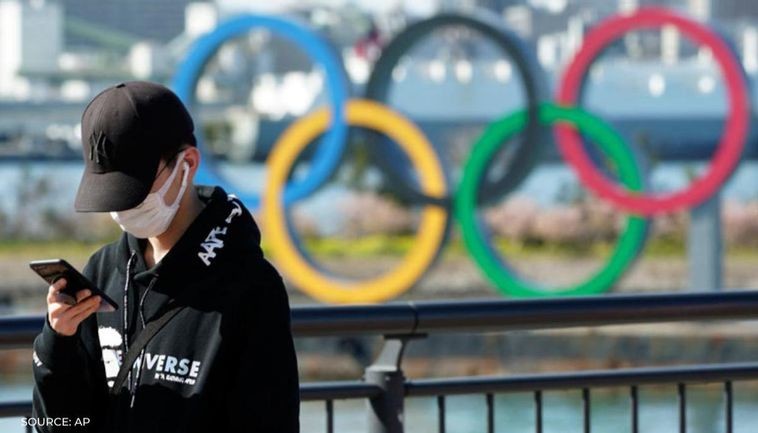
Further history will be made at that site this summer and it will all start with the opening ceremony in 100 days’ time.
“We are so looking forward to seeing athletes from all over the world marching into the new stadium at the opening ceremony ... when the eyes of the world will be on this iconic symbol of the Tokyo 2020 Games,” said Tokyo 2020 CEO Toshiro Muto on completion of the stadium’s construction, which took 36 months at a cost of ¥157 billion ($US 1.4 billion).
The National Stadium, or ‘Kokuritsu kyÅgijÅ’, which will be known as the Olympic Stadium during the Tokyo Games, was officially completed in November 2019. Demolition of the 1964 Olympics venue had begun in 2015 to make way for the 68,000-seater created with sustainability in mind.
Designed by Japanese architect Kengo Kuma, the look of the stadium – a ‘living tree’ – is reminiscent of traditional Japanese temple design with wooden facades and greenery to blend with the nearby Meiji Jingu Gaien area. The multi-layered eaves are made of wood gathered from Japan's 47 prefectures, while more than 47,000 trees were planted within the stadium’s precinct.
Inside, 185 airflow-creating fans and mist-cooling systems will create cooler competition conditions and the three tiers of seating, which will not feature overseas spectators for the Games, is in earthy and green tones to mimic sunlight filtering through the trees, or in this case the roof, and on to the forest floor – the seating and Mondo track.
While there are just 100 days to go until the Games, athletics action is heading to the Olympic Stadium even sooner as it will host the second meeting in the 2021 World Athletics Continental Tour Gold series.
‘READY STEADY TOKYO – Athletics’ will take place on 9 May and for many of the athletes expected to compete, this meeting will provide their first look at the state-of-the-art facility.
Continental Tour Gold disciplines to be contested include the men’s 100m, 200m, 400m, 3000m steeplechase, 110m hurdles, 400m hurdles, high jump, pole vault, long jump and triple jump, while the women’s events are the 1500m, 3000m steeplechase, 100m hurdles, long jump and triple jump.
The meeting is part of the ‘READY STEADY TOKYO’ series of test events organized by Tokyo 2020 in the lead-up to the Games.
(04/14/2021) ⚡AMPby World Athletics
Tokyo 2020 Olympic Games
Fifty-six years after having organized the Olympic Games, the Japanese capital will be hosting a Summer edition for the second time, originally scheduled from July 24 to August 9, 2020, the games were postponed due to coronavirus outbreak, the postponed Tokyo Olympics will be held from July 23 to August 8 in 2021, according to the International Olympic Committee decision. ...
more...Des Linden smashes the world record for 50k in her first ultra marathon
Des Linden’s elite marathon career has included two Olympic Games and a Boston Marathon win.
Tuesday morning, running on the Row River Road bike path along the northern bank of Dorena Lake near Cottage Grove, Oregon Linden became a world record holder.
In her first ultramarathon attempt, the 37-year-old from Michigan ran the 50K course in 2 hours, 59 minutes, 54 seconds to shatter the previous women’s record of 3:07:20 held by Great Britain’s Aly Dixon since Sept. 1, 2019.
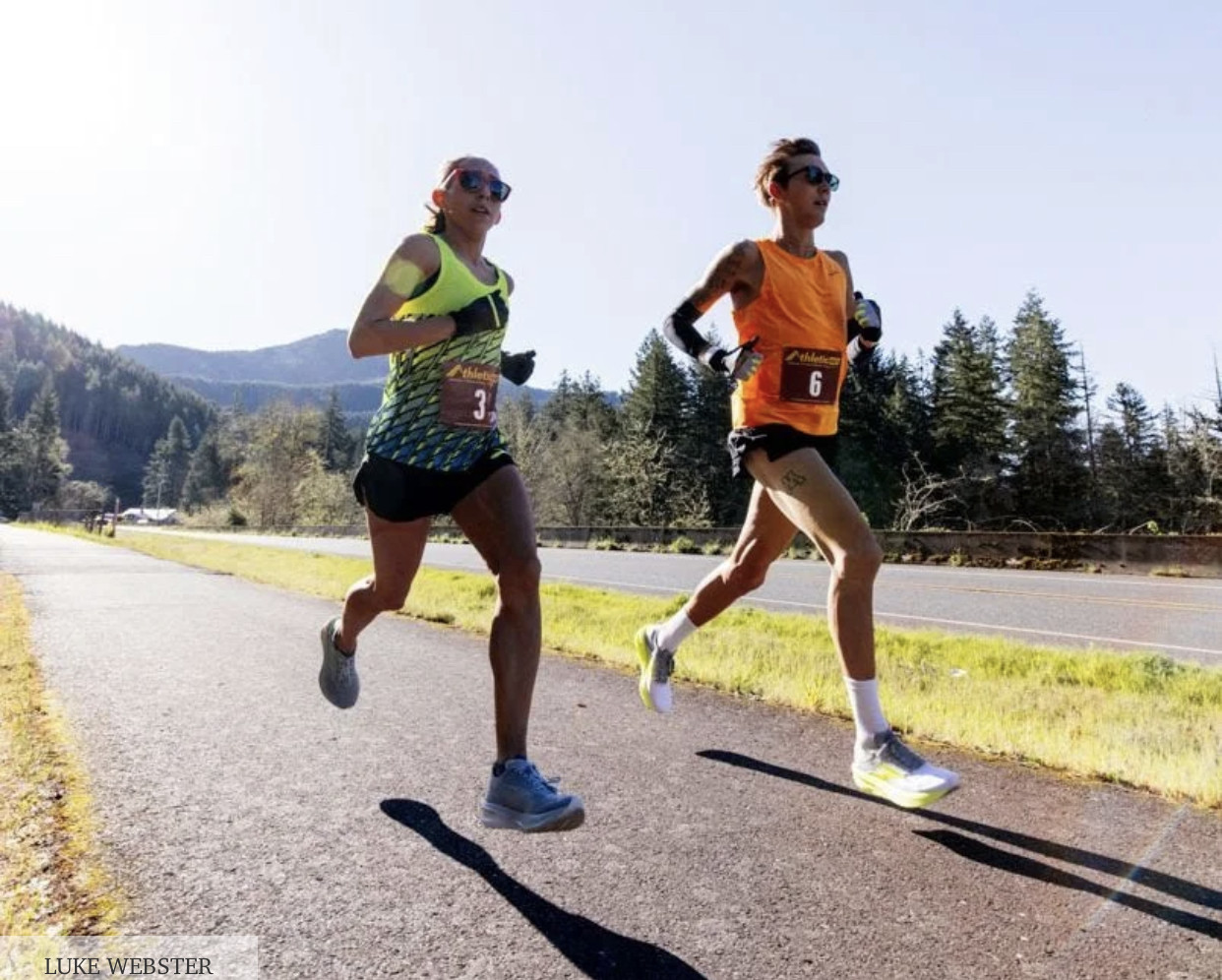
“I thought it would take a disaster for it to not happen, but you get to the marathon distance and disasters are pretty common,” Linden said. “Then you extend that and you just don’t know. As confident as I was, it’s unknown territory. I was trying to respect it as much as possible.”
Linden averaged 5:47 per mile. She hit the 26.2-mile marathon mark in 2:31:13 and powered through the final five miles with the help of American men’s marathoner Charlie Lawrence, who paced Linden through the entire 50K.
“We held it together, but it got hard the last five but I knew we had that time locked away,” said Linden, who couldn’t see the clock at the finish line. “But I knew. We were crunching the numbers out there. I’m like ‘I gotta break 3 (hours) or else I’m going to have to do this again, like soon.’”
Linden said she’d been planning for this race for a couple of years and felt like the time was right to give it shot.

“The spring is totally free,” Linden said. “Without the major marathons it was like, let’s figure it out. And I think a small operation is a little bit better for trying to test the waters anyways, and with COVID, that’s how it has to be. We just tried to quietly do something and see how I liked the distance and how I measure up and if it’s something I want to pursue moving forward.”
The Row River Road course has been the site of several under-the-radar races the past year, including attempts by former Oregon stars Galen Rupp and Jordan Hasay to break U.S. half-marathon records. Neither were able to do what Linden did Tuesday.
“This is definitely one of the highlights of my running career thus far,” Lawrence said. “Being able to help a friend and probably my biggest mentor in the sport achieve a goal of hers and get a world record, is awesome.”
Linden finished seventh at the 2016 Summer Games in Rio de Janeiro and two years later won the Boston Marathon.
She finished fourth at the U.S. Olympic Marathon Trials in Atlanta in early 2020 before the pandemic shut everything down. She remains the alternate for the Tokyo Olympics this summer behind the three American qualifiers — Aliphine Tuliamuk, Molly Seidel and Eugene’s Sally Kipyego.
(04/13/2021) ⚡AMPby Chris Hansen
Can pacemaker and three-time Toronto Marathon champion Philemon Rono help Kipchoge hit another milestone?
Pacemaker Philemon Rono is all fired up for the ardours task of pacing a strong field, led by world marathon record holder Eliud Kipchoge, at Sunday's NN Mission Marathon in Enschede.
Rono, who clinched the 2016, 2017 and 2019 Toronto Marathon titles will link up with another Toronto Marathon champion Laban Korir, former Olympic and world marathon champion Stephen Kiprotich, Augustine Choge and Jonathan Korir.

The race — initially set for April 11 in Hamburg, Germany — is set for Enschede in the Netherlands and an upbeat Rono is confident he has what it takes to cap off Kipchoge's glittering career with another feather.
“As a pacesetter, you have a lot of mathematics to do in a race, unlike the athlete. You need to be tactical, timely and stay focused on the laid down rules,” said Rono.
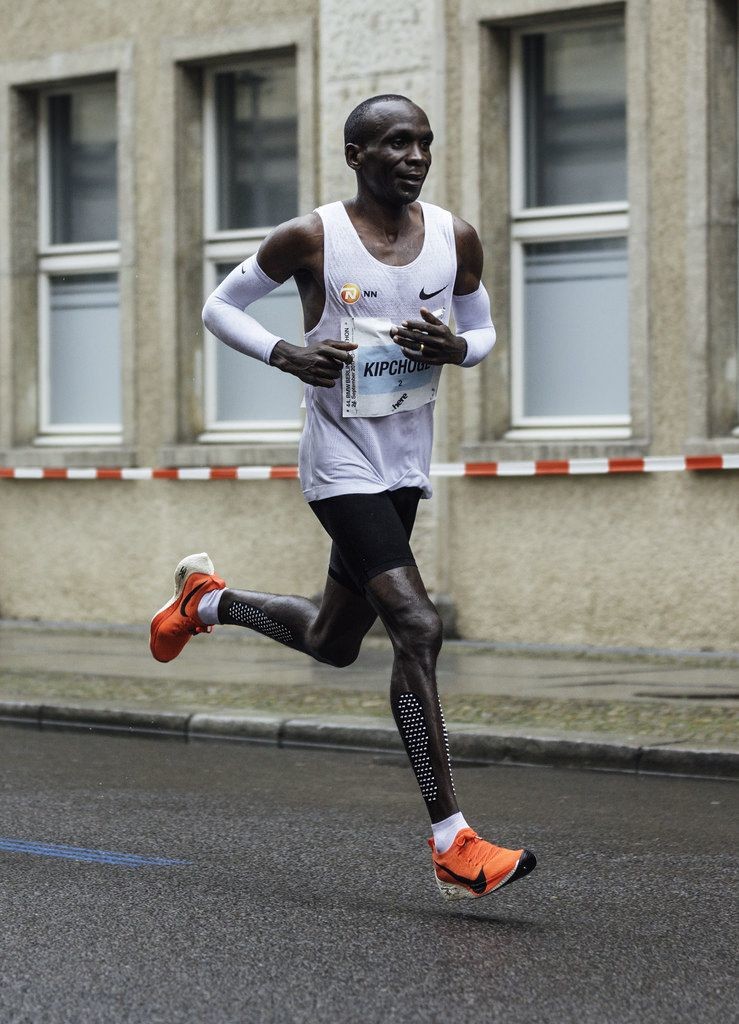
He proved his mettle during his stint at the Global Sports Communication training camp, where he set up Wilson Kipsang for a 2:03:38 world marathon record at the 2013 Berlin Marathon.
Rono's exploits also saw him fire up three-time world half marathon champion Geoffrey Kamworor to a decent fourth finish at the Rotterdam Marathon.
“With such experience in pace-setting, I will do my best to achieve the results as demanded by the race organisers,” added Rono, nicknamed 'junior police' because of his short stature.
(04/13/2021) ⚡AMPby Emmanuel Sabuni
NN Mission Marathon
Eliud Kipchoge will bid to resume winning ways in his last race before the Tokyo games with around 70 runners looking to make the Olympic qualification standard on April 18th in Twente.After suffering a rare marathon defeat in London last October, reigning Olympic champion Eliud Kipchoge makes his return at the NN Mission Marathon in 2021. It is set to...
more...Toronto’s marathon Joggler Michal Kapral completes 9-day, 147K joggling stage run
Kapral is well known in the Canadian running scene as one of the fastest jogglers (that’s someone who runs while juggling) in the country and world. He owns the Guinness World Record for the fastest marathon while joggling three balls at 2:50:12 (among many other records), and his success in the unique sub-section of the sport of running recently earned him the attention of a fellow joggler in France named Johan Swartvagher. Swartvagher invited Kapral to France to join him in the Périple, a six-month joggling festival that criss-crosses all over the country. It’s essentially the Tour de France of joggling, and although COVID-19 prevented Kapral from completing it in person this year, he still managed to run his and Swartvagher’s nine-day, 147K leg of the event.
As Kapral explains, the Périple lasts six months, with legs being run by pairs. There are 23 legs, each of which lasts between a week and a week and a half. Before COVID-19 ruined the plans for the event, the pairs were set to run together through France. Each pair consists of one juggler and his or her guest. In Swartvagher’s and Kapral’s case, they would both have been joggling, each carrying three juggling clubs along the way. While Kapral was stuck at home in Canada, unable to get to France for the run, Swartvagher ran the actual set route.
“They have ceremonies every week or week and a half where they hand the clubs off to different jogglers,” Kapral explains, noting that the event is one long relay. Instead of a baton or a torch, though, participants hand off their juggling clubs to the next runner in line.

Kapral says he didn’t know Swartvagher before the event, but when Swartvagher — an experienced juggler and performer who is new to running — reached out with the invitation, Kapral didn’t hesitate to accept. “Johan had heard about me, and he wanted me to be his guest to show him the whole joggling thing,” Kapral says. “He doesn’t have much experience with running, but he’s done a great job.”
One of the toughest parts, according to Kapral, was convincing Swartvagher that he was capable of running kilometre after kilometre for nine straight days. At one point in their leg of the Périple, Kapral and Swartvagher had to run 18K two days in a row. Every runner can understand how daunting a single 18K run would be when new to the sport like Swartvagher is, and anyone would doubt their abilities when facing two 18K slogs in a row (while juggling three clubs, no less).
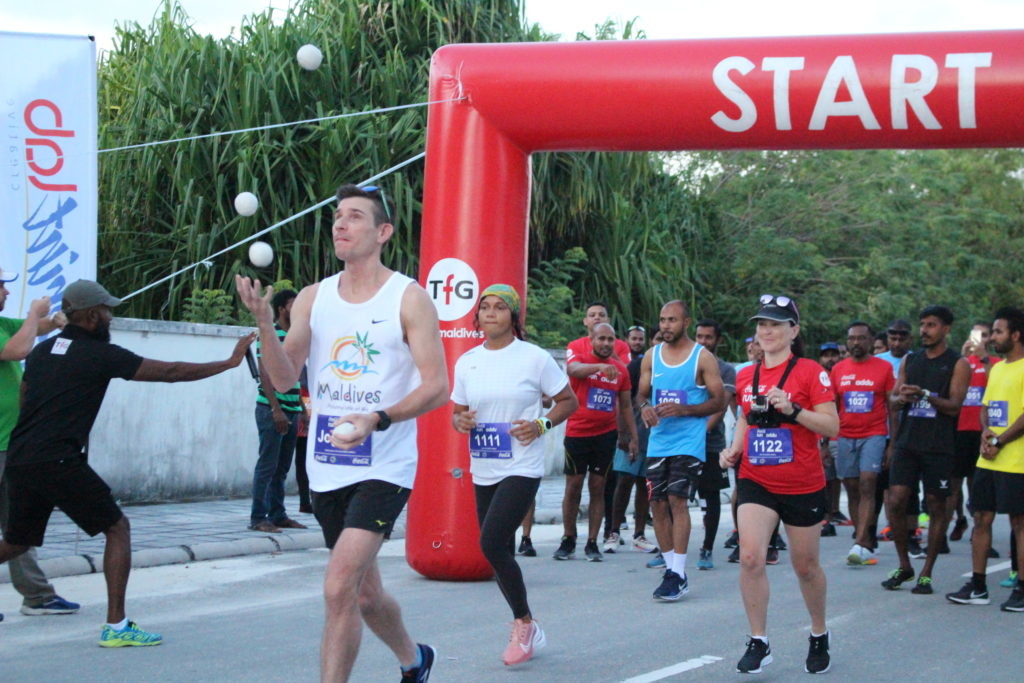
After that first long day, Kapral says he sent Swartvagher a simple message: “You did 18K today, you can do it tomorrow. You know you can do it.” And he was right — they got through the run, just like the others before it. Unfortunately, Swartvagher didn’t get the chance to complete the nine-day event, but not because of a lack of motivation, self-belief or energy. Instead, Swartvagher was forced to stop the run for a much more personal and tragic reason, as he had to go home to be with his mother, who was ill.
Swartvagher missed the two final runs of his and Kapral’s Périple leg, but he made it home to be by his mother’s side when she passed away. Despite the fact that he was completing the event virtually and would be unable to physically pass his clubs onto the next pair of Périple runners, Kapral finished the last two days on his own.
“I got pretty emotional joggling the final 16K in the rain, but honoured Johan’s sense of fun by finishing with a big smile and a jump in the air,” Kapral says. The Périple is still underway, and it will continue until mid-August. While Kapral’s role in the event is finished for now, he says he would love to run it again in the future, but next time, he’ll make sure to be there with Swartvagher in person.
(04/13/2021) ⚡AMPby Ben Snider-McGrath
How to Breathe While You Are Running
As a new runner, you probably haven’t given much thought to how to improve breathing while running. After all, who needs to be taught how to breathe? But soon into your journey into the world of running nearly you begin to think of concerns on improving performance and want to gain a better understanding of proper technique and start to wonder how to improve breathing while running.
In fact, most runners could benefit from learning a few breathing techniques. Understanding how to improve your breathing while running will not only boost your performance, but also reduce common injuries that often plague runners.

Here are a few tips on how to improve breathing while running so you can get your breathing under control and ensure you have a great run every time:
Become a Belly Breather
Do you tend to take shallow breaths when you’re feeling tired? Most people breathe through their chest, which isn’t the best way to maximize their oxygen intake.

Belly breathing, also known as diaphragmatic breathing, is a technique which allows you to maximize your oxygen intake while you run. It works by engaging the diaphragm to create more space in your chest cavity, allowing your lungs to expand fully to take in more oxygen.
Deep belly breathing increases the flow of oxygen-rich blood to your muscles and will stave off fatigue for longer. It has another benefit as well; a growing number of studies show that belly breathing has a calming effect, which can improve your focus and mental fortitude.
An easy way to practice deep belly breathing is by lying down on the floor and placing one hand on your belly and another on your chest. Take a normal breath and see which area rises first. Practice breathing deep into your belly first, then moving the breath up into your chest as you exhale.
Inhale and Exhale Through Both Your Nose and Mouth
Breathing in and out through only your mouth can have a hyperventilating effect, while breathing in and out only through only your nose won’t provide you with enough oxygen on your run. The best way to breathe while running is to inhale and exhale using both your nose and mouth combined.
Breathing through both the mouth and the nose will keep your breathing steady and engage your diaphragm for maximum oxygen intake. It also allows you to expel carbon dioxide quickly.
Practice breathing through both your nose and mouth during the day. This might be difficult because we’re hardwired to breathe in and out through just our noses. Once you’ve got this down, you can move on to our next tip: learning the best breathing patterns to run faster and prevent injury.
Time Your Breathing with Your Cadence
Do you always seem to get injured on one side of your body? Learning the right breathing pattern to match your cadence may help prevent those nagging injuries and boost your running performance.
Rhythmic breathing, also called cadence breathing, describes the number of steps you take on inhale and on exhale. If you’re like most runners, you have a natural tendency to have an even number of foot strikes for each inhale and exhale.
For example, if you have a 2:2 breathing pattern, you inhale every two steps and exhale every two steps. This even breathing pattern can lead to injuries because the exhale is always on the same foot.
Instead, try focusing on a breathing pattern that alternates from one side to the other. For instance, a 2:1 breathing pattern in which you inhale for two steps and exhale for one. This alternating pattern will increase your core stability and help you remain injury-free.
Warm Up Your Respiratory System
If you frequently get side stitches on your runs, you aren’t alone. According to a study, 70 percent of runners report experiencing this stabbing side pain.
Although the exact cause of side stitches is still uncertain, we do know that it happens when the diaphragm muscle starts cramping. Considering how the diaphragm muscle plays a significant role in our breathing, it stands to reason that improper breathing may a likely cause of side stitches. Side stitches seem to occur more often in new runners, further supporting this theory.
Warming up your diaphragm before taking off at your usual pace can reduce the chances of developing this annoying side stitch. First, start by practicing your deep belly breathing technique to relax your diaphragm muscle.
Next, start slowly and focus on maintain your breathing technique. Gradually increase your speed to give your diaphragm time to adjust to harder breathing. This will warm up the entire body and allow you to run stitch-free. Make sure to store your gear with a secure running belt on your next run.
(04/13/2021) ⚡AMPby FlipBelt
London Marathon test event has been postponed
London Marathon Events is organizing the Reunion 10K, which was due to be held on April 24-25 as one of the pilot events in the government’s Events Research Programme. Unfortunately, organizers announced today that the event has been postponed, as they attempt to find an alternative location for the race.
The statement reads, 'The Events Research Programme team and LME has concluded that the event should be postponed in order to finalize the requirements for this pilot event but Hatfield Park is not available in May and therefore an alternative venue is required.'
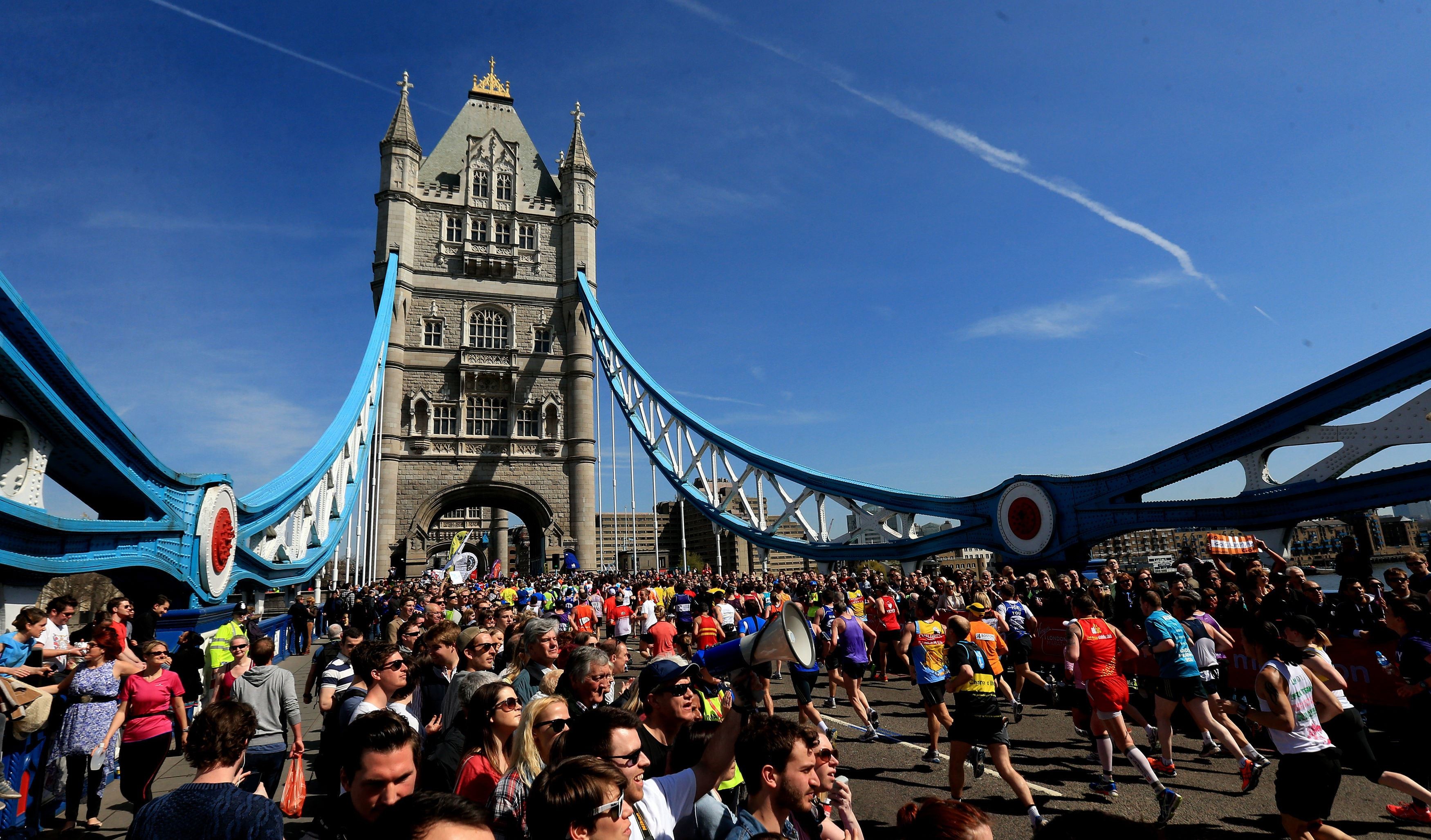
The event will consist of three 10K races, held over the weekend. This will provide the Department for Digital, Media, Culture and Sport with scientific data on how mass-participation events can safely resume as part of the roadmap out of lockdown.

Everyone attending – participants, spectators and staff – will be required to take a Covid-19 test before and after the event. They will also be asked if they have been vaccinated, although this is not a requirement to attend the race.
Hugh Brasher, event director of London Marathon Events, said: ‘This pilot event, with its complex testing and operational overlay, is a very important step in the return of mass-participation sport and the team is now in discussion with a number of venues to see if it is possible to deliver the Reunion 10K in May.
'We would like to thank Hatfield Park, Hertfordshire Council, Welwyn Hatfield Borough Council and other key stakeholders for their hard work and support of the event.'
(04/13/2021) ⚡AMPby Jane McGuire
TCS London Marathon
The London Marathon was first run on March 29, 1981 and has been held in the spring of every year since 2010. It is sponsored by Virgin Money and was founded by the former Olympic champion and journalist Chris Brasher and Welsh athlete John Disley. It is organized by Hugh Brasher (son of Chris) as Race Director and Nick Bitel...
more...Norway's 20-year-old Jakob Ingebrigtsen is getting married
Norwegian and European record holder Jakob Ingebrigtsen and his longtime girlfriend Elisabeth Asserson are getting married. The pair of 20-year-olds have been a couple for five years, and Ingebrigtsen popped the question on Saturday.
After five years together, Asserson has been in Ingebrigtsen’s life for all of his biggest achievements in running. She has had a front-row seat as he has grown from a young talent with great potential into an admittedly still young super star on the track.

Ingebrigtsen has been on the running world’s radar for a long time now, but in the past couple of years, he has become more and more successful. In 2019, he won a European championship in the indoor 3,000m before representing Norway at the world championships in Doha, Qatar. There, he ran two near-podium performances, finishing in fourth in the 1,500m and fifth in the 5,000m.

He wrapped up the year by running the Norwegian 10K record of 27:54 and winning the U20 European cross-country title. While 2020 was a different year due to COVID-19, he still managed to continue to find success on the race course, setting European records in the 1,500m (3.28.68) and 2,000m (4:50.01) and an unofficial Norwegian 5K road record (he ran his 13:28 PB on an uncertified course).
Finally, Ingebrigtsen has carried his winning ways on into 2021 — a year in which he has already set the European indoor 1,500m record (3:31.80) and won European crowns in the indoor 1,500m and 3,000m. And now, he has added an engagement to his list of highlights for the year.
(04/12/2021) ⚡AMPby Ben Snider-McGrath
If running is part of your weight-loss strategy, What’s Better Running Far or Running Fast?
There’s no one-size-fits-all strategy to weight loss, but if you want to lose weight, you’ve got to burn more calories than you consume. Doing so can take many forms, from specific diets to a variety of exercise regimens, including strength training, high-intensity interval training and steady-state cardio. So, you have many options at your disposal — you’ve just got to find what’s right for you.
If you’re running long distances, you’re likely performing steady-state cardio, which is a lower intensity exercise that can be performed for a long time. In this case, your heart rate stays in a moderate work zone, not experiencing the intense highs and lows it would during, for example, sprint training.
“Long-distance runs are great for building up your endurance and improving overall cardiovascular health,” says Chris Coggins, a running coach. “If you’re training for an event like a 5K or a half-marathon, most of your training will be at a steady-state pace. You will burn fewer calories per minute, but you’re working for more minutes, so the total calorie burn can really add up.” He mentions that slower runs are also easier on your joints, so they have the added benefit of allowing you to recover more quickly between runs.

However, as healthy as long, slow jogs can be, they might result in plateaus. As your body adapts to the exercise, it won’t feel as challenged and it may burn fewer calories for the same level of work. “Increasing distance is one way to break through plateaus, but you can only run so far,” says Coggins. “Eventually, your body will become accustomed to a particular distance, and your weight loss may plateau.”
Now, if you were to run that 8 mile-per-hour pace for 30 minutes, you would burn 459 calories. That’s fewer than you’d burn from the longer, slower run. Stop here, and it would be easy to give steady-state cardio the victory. But, again, there’s more to consider.

First, shorter runs are easier to fit into busy days, so you might be more likely to do the shorter, more intense workout than the longer, less intense workout. Second, high-intensity exercise helps you achieve the coveted “afterburn effect.”
Also known as EPOC, or “excess post-exercise oxygen consumption,” the afterburn is the amount of oxygen required to return the body to its pre-exercise state. In other words, you’ll keep burning calories even after exercise has ended. It’s difficult to calculate the exact impact, but an Australian study shows a 6–15% increase in the hours following a high-intensity workout.
SO, WHICH IS BEST?
“It’s kind of a trick question, because ideally you should be doing both,” says Coggins. “High-intensity runs are great for torching calories, and they give you that afterburn effect. But slower runs help you build endurance, burn fat and are better for recovery.”
If you’re serious about losing weight and are healthy enough for high-intensity exercise, he recommends sprint intervals. Switch up the speed and distance of the intervals, and you’ll keep your body guessing to avoid plateaus. Then do slower jogs or even take some nice, long walks for active recovery days. The two-pronged approach offers the most benefits long term.
“Any type of exercise can help you lose weight, just don’t become too reliant on any one thing,” says Coggins. Mix things up by running, jogging, walking, lifting weights and doing whatever else gets you up and moving. Ultimately, regular activity is what’s going to help you achieve lasting weight loss.
The faster you run, the more calories you burn. And the more calories you burn, the more weight you can lose. That math is easy enough, but there’s more to the story.
If you’re able to increase your speed over a certain duration, then your calorie burn increases significantly, says Coggins. Consider the following example:
If you weigh 150 pounds and run 6 miles per hour (a 10-minute mile pace), you can burn 680 calories in one hour according to the MyFitnessPal exercise calculator. If you increase your pace to 8 miles per hour (a 7.5-minute mile), you can burn 919 calories in the same amount of time.
That said, speeding up isn’t feasible for everyone. Unless you’re a serious runner, maintaining a quicker pace for a long duration likely isn’t in the cards — at least not right away. If you’d like to increase your speed, you’ll need to decrease duration.
(04/12/2021) ⚡AMPby Kevin Gray
How to run efficiently on concrete, sand, dirt or trail
Running on pavement, cement, sand, dirt or trail have their unique challenges. It’s not simply about which running surface is better or more optimal since that answer is: “it depends” or “none of them is best.” In fact, your best bet is likely to mix up your running surfaces to change your loading and balance the way that you run.
“The human body adapts incredibly well to its situation,” says Jeff Knight, senior manager of digital product science for connected fitness at Under Armour and former running coach. “Basically, researchers have found that runners adjust to run with a softer stride over the firmer surface and a harder stride over the softer surface.”
When you switch things up, there are certain ways to optimize your running. Here’s what you need to know about different running surfaces and how to train on them for the best possible performance:
Concrete and cement are the hardest materials you’ll likely run on. If you observe most serious runners, you’ll notice they often eschew the sidewalk in favor of the shoulder of the road for this reason. On the flip side, sidewalks are going to be safer than running in the street when it comes to traffic. Some sidewalks have a dirt or grass medians you can take advantage of to give your feet a break.

This is also where finding a good road running sneaker comes into play. “A standard road shoe. The cushioning of a neutral running shoe options helps dampen the impact of each stride.
Ranked slightly softer than concrete sidewalks, running in the streets or on asphalt paths is better than trying to stay on sidewalks when it comes to running efficiently. As Knight points out, humans are amazingly adaptable, so if you live in a concrete jungle, don’t stress: You’ve likely developed a stride that takes hard surfaces into account. But when you can, hop onto the grass and run the side of a field or a trail: Research shows running in grass reduces the stress on your body compared to running on a more rigid surface.
Gravel trails and roads are firm and are good for running since they’re slightly softer than asphalt without much difference in the actual surface, unlike a dirt trail in the woods. But the loose layer of dust and gravel on top ultimately slows you down. “In Austin, Texas, we have a popular running trail in the middle of town that surrounds Ladybird Lake. That trail is made of crushed up bits of granite,” Knight says. “When I was coaching, we added 5–10 seconds per mile if we did a tempo run on that trail!”

So, while gravel may be optimal for long endurance runs compared to pounding the pavement for hours, don’t expect a PR. Similarly, rail-trails are the best for your joints thanks to their cushiness and lack of any technical navigation. Rail trails also tend to be flat and straight, with relatively few obstacles. Their surfaces are akin to those of gravel roads, but the flatness makes them more beginner-friendly, while gravel roads can easily get ultra-hilly.
Here, we’re talking about technical trails, not dirt roads. Trails are softer in general, but present runners with more ankle-biting obstacles, and because of this, your stability may suffer. On technical trails, Knight recommends swapping to a more trail-friendly shoe. “Usually, trail shoes offer a bit more stability and traction,” he explains. “If I catch a root or rock wrong, I am less likely to slide off that root and turn my ankle. To summarize, lots of roots the size of baseball bats or rocks the size of baseballs means switch shoes.” He notes that if you’re looking for speed on the trails, a dedicated trail shoe helps with that as well. “That extra bit of traction and stability may keep you safe when you start getting sloppy,” he adds. “No one is as sure-footed at the end of a hard trail session as they are at the beginning!”
Soft sand is by far the most challenging surface to run on, and it will fight you every step of the way. If you’re a beach runner, stick to the hard pack sand by the water’s edge and wear your trail shoes for more stability. You can head into the soft sand as an interval, since it will immediately make maintaining your pace much more challenging as an almost full-body workout.
But if you have a tendency toward rolled ankles, skip running on soft sand altogether: It might be nicer on your joints from a softness perspective, but the lack of stability makes it potentially dangerous. Surprisingly, one study showed that compared to running on a sandy soft surface, running on asphalt actually decreased the risk of tendinopathy in runners.
(04/12/2021) ⚡AMPby Molly Hurford
Gerda Steyn sets South African marathon record in Siena, Italy
Eighty runners lined up in Siena, Italy, on Sunday morning to race the Xiamen Marathon, an elite-only event that marked one of the final opportunities to qualify for the upcoming Tokyo Olympics. Kenyans Eric Kiptanui and Angela Tanui took the wins in PBs of 2:05:47 and 2:20:08, and South Africa’s Gerda Steyn set a national marathon record of 2:25:28. In his first race in more than a year, Canada’s Reid Coolsaet finished well off the Olympic standard of 2:11:30, crossing the line in 2:16:38.
Kiptanui won the race by 10 seconds, edging out Ethiopia’s Abdi Fufa for first place. He bettered his PB by 30 seconds, improving on a 2:06:17 showing from his marathon debut in Dubai in 2020. His result is the second-fastest ever run on Italian soil, a minute off the all-comers record set by his fellow Kenyan Titus Ekiru at a race in Milan in 2019, which he won in 2:04:46.

While Kiptanui fell short of the Italian all-comers record, Tanui did not, and her 2:20:08 winning time lowered the mark of 2:22:25, which Kenya’s Vivian Kiplagat also set in Milan in 2019. Unlike in the men’s race, which was relatively close, the women’s race saw a big gap between first and second place, with Tanui crossing the line more than two and a half minutes ahead of the next-closest runner. On top of setting the Italian all-comers record, Tanui also lowered her own PB by a whopping five minutes.

In recent years, Steyn has proven to be one of the best runners in South African history. She set the Comrades Marathon up-run course record in 2019, becoming the first woman to break six hours in the storied event with her 5:58:53 winning time. That same year, she ran to an 11th-place finish at the New York City Marathon (a race less than half the distance of the 87K Comrades Marathon), running 2:27:48.
In 2020, Steyn ran to a seventh-place finish at the elite-only London Marathon, where she posted a new PB of 2:26:51, which was the second-fastest marathon result in South African history. This year, she was set to run the NN Mission Marathon, but her plans changed when the event was pushed from April 11 to April 18 and moved from Germany to the Netherlands.
Fortunately, the Xiamen Marathon accepted her on short notice, and she ran a new South African marathon record of 2:25:28. She looked to have great chances of being named to the South African team headed to the Tokyo Olympics before Sunday’s race, but with her result in Italy, she has likely officially booked her ticket to the Summer Games.
(04/12/2021) ⚡AMPby Ben Snider-McGrath
Over Half Of Ultrarunners Get Nauseous During Races; Here's Why
The list of issues and injuries that an ultrarunner can face while racing is lengthy. Blisters, chafing, cramps, muscle strains, knee pain, heat illnesses, and altitude sickness are just a handful of the possibilities. Perhaps none of these potential problems, however, are as prevalent and impactful during ultramarathons as nausea and vomiting. Indeed, practically every ultrarunner has their own tale of yakking on the side of a trail or into an aid station trashcan. For some, it's an unlucky one-off event, but for others, recurrent nausea consistently mars their ability to perform up to their expectations.
The reason so many ultrarunners get stricken with nausea is undoubtedly multi-faceted, and to be honest, there is not a cut-and-dry singular explanation. Still, we do have some clues as to why the prevalence of nausea and vomiting is up to 2-3 times more common in these races than much shorter distances. Let's take a look at what the research says about the possible culprits as well as some of the strategies you can try to deal with this troublesome symptom.
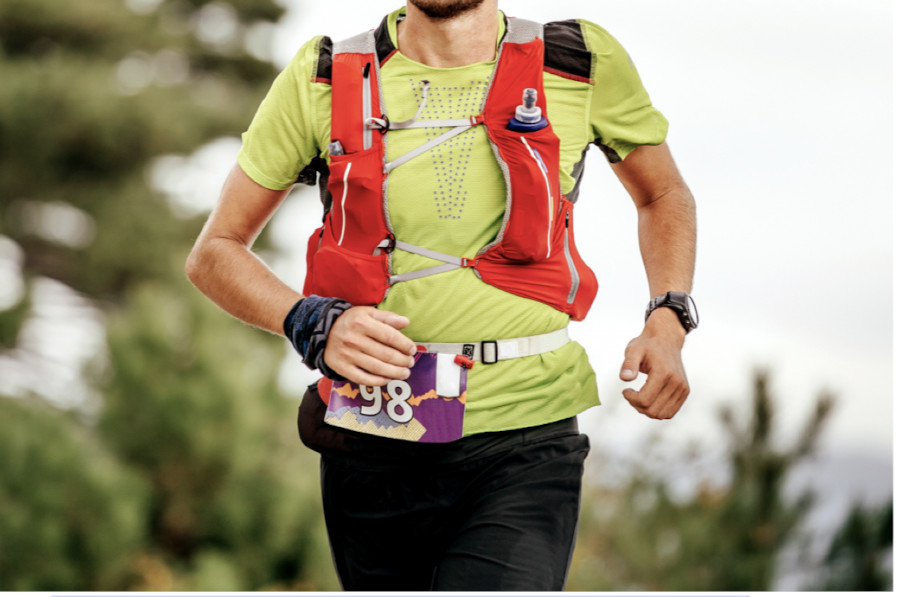
Just How Common Is Nausea?
Beyond the anecdotes, what exactly do we know about the prevalence of nausea in ultrarunners? Before we get to some data on that question, it's important to recognize that surveys used to gather this information quantify nausea differently. In addition, the occurrence of nausea is likely to vary with temperature and humidity, elevation, and the length of a race. As such, it's a bit foolhardy to throw out a single estimate of nausea and think that it applies to every ultrarunning scenario.
Caveats aside, some of the relevant data tells us that nausea incidence clearly increases with race duration. Dr. Martin Hoffman, professor emeritus in the Department of Physical Medicine and Rehabilitation at the University of California, Davis, has overseen several studies on this topic, and in some cases, up to 6 out of 10 runners experience nausea during an ultramarathon. To give you some perspective, consider that around 10% of regular marathoners typically suffer from nausea.
Now, some of these cases of nausea are quite mild or transient, meaning they won't hurt performance much. Still, up to half of cases can be severe enough to impact ultrarunning performance. In fact, one of Hoffman's investigations found that nausea or vomiting was the leading reason for racers to drop out of the Western States 100-mile Endurance Run. During a regular 26.2-mile marathon, a runner suffering from nausea near the end of the race is likely to grit their teeth and finish. In contrast, the thought of having to suffer for another 20, 30, or 50-plus miles while feeling queasy is, very understandably, too much for some ultrarunners to cope with.
Multiple Causes
The puzzle of why nausea is so common during ultrarunning is difficult to solve, in large part because there are multiple physiological changes occurring simultaneously over the course of an ultrarace. It's also incredibly tough to match the demands of an ultrarace in a laboratory, so mechanistic studies looking at the origins of nausea during super-prolonged exercise are few and far between.
Even with the scientific uncertainty, we do have some decent guesses as to what's provoking the urge to spew in so many ultrarunners. During prolonged exercise, you secrete hormones like adrenaline and glucagon into your blood that allow your body to liberate fat stores, make glucose, and maintain your blood sugar levels. Arginine vasopressin, a fluid-conserving hormone, is also released so that you can reduce urine production. Blood levels of endotoxins (sort of invader molecules that seep through your gut's walls) and inflammatory molecules can also surge. And finally, you've got muscle breakdown products, like urea and creatine kinase, spilling into your bloodstream. All these substances can stimulate what's called the chemoreceptor trigger zone in your brainstem, which communicates with another brain region called the vomiting center.
Long story short, you've got a cocktail of substances circulating in your bloodstream that act as a potent trigger for nausea. The concentrations of all these substances tend to increase over time during prolonged exercise, which may help to explain why nausea becomes much more common in the latter half of ultraraces.
A Nervous Gut
The release of stress hormones like adrenaline can also occur even before you take your first official stride during an ultra. Throughout the history of sport, many athletes have been plagued by precompetition anxiety severe enough to induce vomiting. Bill Russell, perhaps the best center of all-time in the sport of basketball, reportedly vomited before many of his big games. There's also a moment in the Steve Prefontaine biopic Without Limits that perfectly captures what prerace nerves can do to even the most elite athletes. In the scene, Prefontaine is seen puking under the grandstands before his race against other running greats like Frank Shorter and Gerry Lindgren, even as the crowd chants his name.
These anecdotal accounts are also beginning to be backed by research. Just this year, two of my colleagues and I published an investigation that found anxiety to be associated with the occurrence of nausea in endurance race competitors. The study, published in the European Journal of Sport Science, had 186 endurance-trained individuals document their life stress and anxiety as well as the gut symptoms they experienced during one of their recent races. A subset of the subjects also reported how anxious they felt on race morning. Ultimately, racers who reported higher levels of general anxiety had over three times the odds of experiencing significant levels of nausea during competition. Further, those who reported lots of anxiety on race morning had over five times the odds of experiencing substantial in-race nausea.
These are correlations, so it's hard to definitively prove that these athletes' nausea issues were completely due to anxiety. That said, other lines of evidence support the idea that this relationship is at least partially cause and effect. Plus, most of us have had our own out-of-sport run-ins with gut distress stemming from worries and anxieties, whether they be from a first date, a medical procedure, or an interview.
Sweltering Heat and Altitude
Environmental conditions also play a major role in development of nausea during ultras. Some of the most prominent ultramarathons in the world (e.g., Western States Endurance Run, Badwater Ultramarathon, Marathon des Sables) are held in sweltry conditions. When researchers ask runners to exercise in the heat, the incidence of nausea can quadruple in comparison to exercise carried out at the same intensity in more mild conditions.
Besides the heat, another environmental factor that many ultrarunners deal with is altitude. Nausea is a well-known symptom of acute mountain sickness, with written accounts going back at least several hundred years. Add exercise to the mix, and you can start to understand why nausea is a big issue for competitors at races like the Hardrock 100 and the Khardung La Challenge, which has the highest elevation of any ultrarace in the world.
Fueling: A Delicate Balance
One other notable contributing factor to nausea is in-race fueling. The nutritional demands of ultrarunners can far outpace those of other athletes competing at shorter distances. For those ultrarunners who are looking to push the boundaries of what their bodies can do, they might end up consuming carbohydrate at rates of 60-90 grams per hour. That's roughly equivalent to 3-4 sport gels per hour! Even lesser amounts of carbohydrate (30-60 grams per hour), though, can pose a significant challenge to the gut's capacity to digest and absorb fueling.
In short, fueling during an ultramarathon often takes place on a knife's edge. Too little can lead to a bonk and even nausea if your blood sugar gets too low, while too much foodstuff can also provoke the gut and induce queasiness. With that in mind, it's critical that ultrarunners practice their fueling strategies multiple times throughout the weeks leading up to a race. Ideally, at least some of these gut-training sessions would be done at a pace similar to race-pace and in similar environmental conditions that an athlete expects to compete in.
Strategies to Quell or Avoid Nausea
Given all this information, you might be wondering how to best avoid the nauseous fate of so many ultrarunners. First, you should accept the fact that there is likely no ironclad way to completely eliminate the risk of nausea during an ultra. There are just too many potential causes. That being said, you do have the power to minimize your risk of being stricken with severe nausea. And for some athletes, it will be important to take a multi-pronged approach as opposed to relying on a single strategy. Below are my top five tips for reducing the odds of tossing your cookies during your next ultra.
Acclimate to the heat and altitude if your race is held under those conditions. Likewise, employ cooling strategies (e.g., drinking cool beverages, putting some ice in your cap or shirt, dousing yourself with cool/cold water, etc.) throughout a race that's held in sweltering conditions.
If you suffer from prerace nerves, try techniques like slow deep breathing or mindfulness. Better yet, consult with a sports psychologist.
Avoid both overhydrating as well as underhydrating. During a single-stage ultramarathon, some amount of weight loss is normal (due to the loss of energy stores), so you shouldn't be drinking so much that you weigh the same or more after a race as before the race. On the other hand, large body mass losses (e.g., >5%) may be a sign that you're underhydrating.
Train your gut! If you plan to push the boundaries of food and fluid intake during the race, of course it makes sense that you should practice your nutrition plan during some of your longer training runs. Much like other organs in your body, the gut is adaptable.
Try ginger. I'm generally not a purveyor of supplements, but if the above mentioned strategies don't do the trick for you, there is at least one nutritional product that has shown some anti-nausea properties in settings outside of exercise: ginger. To be specific, these anti-queasiness effects have been most often studied in nausea occurring during pregnancy, motion sickness, and chemotherapy. No supplement is without risk, and many products sold in the U.S. are of questionable quality, so anyone looking to use ginger supplements-or any other supplement for that matter-should do their research and consult with their healthcare provider as well.
(04/11/2021) ⚡AMPby Trail Runner Magazine
Season 1, Episode 2 of 'Run Around the World': A Docuseries About Chasing the Gnarliest Adventures
Mountain athlete Jason Schlarb and ultrarunner Meredith Edwards travel to Yunnan, China, with an ambitious plan to run a 55K trail race and establish the Fastest Known Time on 17,703-foot Haba “Snow” Mountain.
A dramatic ultramarathon racing culture is only rivaled by life on the frontier, where the pair experience a few nights on a rural farm before ascending a Himalayan-scale peak. Adventure runs high and success is elusive to the end.

Global travel may have slowed down this year, but running certainly did not—especially for the crew of Run Around the World. Crossing Switzerland on foot, running through the arts district of Mexico City, and overcoming the hurdles of a global pandemic made 2020 a year of growth.
Join the team—including world-renowned ultrarunners Jason Schlarb, Meredith Edwards, Ian Morgan, Diego Pazos, and Knox Robinson—for reflections on the benefits running brought to 2020.
(04/11/2021) ⚡AMPLululemon's new campaign star has a body-inclusive message: 'Running is for everyone who has a body and wants to run'
Lululemon's newest ambassador and campaign star is going to great lengths to make running more accessible and body-inclusive.
The athletic apparel brand has tapped ultramarathoner, author, speaker and former Fat Girl Running blogger Mirna Valerio to front its new global "Feel Closer to Your Run" campaign and offer better representation of runners whose body types are typically overlooked within the fitness space. The Vermont-based Valerio tells Yahoo Life that she hopes to inspire and empower both people who have felt excluded by activities like running, and the brands that have the power to provide better quality gear for bigger bodies.
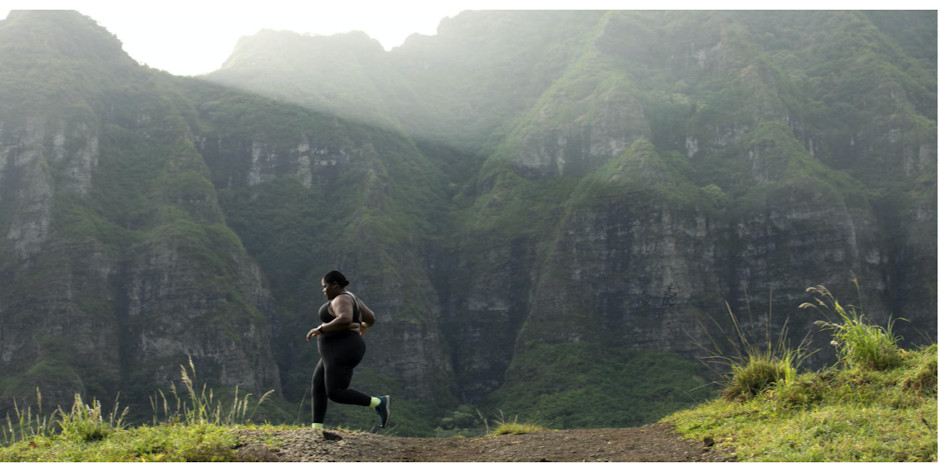
"Make no mistake: All kinds of people in all sorts of bodies want to be able to engage in movement that is meaningful to them, and they need apparel that fits, is functional and well-made," Valerio says. "There was this prevailing idea that plus-size folks didn’t do or want to do things like running, cycling, swimming, etc. But guess what? We’ve always done those things and have had to contend with ill-fitting apparel — because we’ve been forgotten and ignored — poorly constructed clothing that is not fit for any athletic activity, or if they do fit, pieces in limited colors and styles.
"When people see a person like me in a magazine or in a company’s marketing and advertising media [while] running or hiking or riding a bike, it’s easier for them to envision themselves doing the same thing," she adds. "It signals to them that they belong in that space too. And hopefully, it gives them a little push to perhaps try something they’ve always been curious about but could never really see themselves doing."
It was a health scare that gave Valerio herself that "little push" more than a decade ago. Though she's been a runner and athlete since high school, she fell into a three-year slump as she juggled the demands of grad school, a teaching career and family life.
"I wasn’t sleeping or taking care of myself, and it was a health scare connected to all of these things that prompted me to start running again," she says. "I’m never looking back!"
Assuming things are "rolling nicely" and she's injury-free, she runs about four or five times a week, leaving time for recovery days. When she's training for a race or marathon, she'll typically clock 30 to 45 miles a week — and sometimes 50 if her coach calls for it. Her next big challenge is the Trans Rockies 6-Day Stage Race in August.
"It’s six days of running the Colorado Rockies for about 120 miles, with 20,000 feet of vertical gain," she says. "It’s one of my favorite events ever, and I’ve managed to finish only once, so I’m going to go for it again this year."
And then there's the challenge of her new role in supporting Lululemon's diversity and inclusion efforts, and continuing to speak out about being active as a larger woman. Valerio is confident that the images of her hitting the trail in the campaign will serve as an inspiration, and invitation.
"You absolutely belong and are entitled to the fitness space," she says. "Running is for everyone who has a body and wants to run. Guess what? We all have bodies, so that means… "
(04/11/2021) ⚡AMPTanui breaks Italian all-comers' record in Siena
Kenya’s Angela Tanui and Eric Kiptanui claimed victory at the Xiamen Marathon and Tuscany Camp Global Elite Race in Siena on Sunday (11), with Tanui breaking the Italian all-comers' record with 2:20:08 at the specially-organised elite-only event.
Held as an opportunity for athletes to achieve qualifying marks for the Olympic Games in Tokyo – with co-operation from the Italian Athletics Federation, World Athletics and the Xiamen Marathon, which was unable to welcome overseas entrants to race this weekend due to pandemic restrictions – the event saw athletes race on a roughly 5km loop course around the roads of the Siena-Ampugnano Airport.
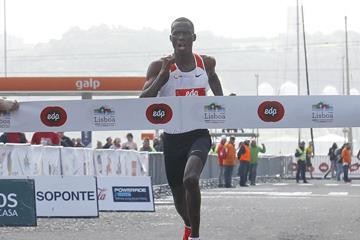
Despite the rain and wind, 2018 Venice Marathon winner Tanui took more than five minutes off her PB to improve the Italian all-comers' best which had previously been Vivian Kiplagat’s 2:22:25 set in Milan in 2019.
Kiptanui achieved the second-quickest men’s time ever run on Italian soil, clocking 2:05:47 to improve on his previous best of 2:06:17 run in Dubai in 2020. Only Titus Ekiru with 2:04:46, also run in Milan in 2019, has gone quicker for the distance in Italy.
A group of 13 athletes featured in the lead women’s group which passed 4850m in 16:24 and the pack remained 12 strong by 14,910m, passed in 50:18.
Ethiopia’s Rahma Tusa, Gebiyanesh Gedamu and Haven Hailu Desse were among those to the fore along with Tanui at halfway, with the 22,470m mark passed by that lead group in 1:15:19.
By 30km a group of four athletes was breaking away, with Tanui joined by her fellow Kenyans Gladys Chepkirui and Delvine Meringor, plus Gedamu. Tanui made a break and continued to move ahead over the final 10km, eventually winning by more than two-and-a-half minutes from her compatriot Purity Changwony, who came through to finish second in a PB of 2:22:46. Gedamu was third in 2:23:23 and Desse fourth in 2:23:52 as the top six went sub-2:25.
South Africa’s Gerda Steyn improved her PB to 2:25:28 in ninth, while 2013 world silver medallist Valeria Straneo was the top Italian in 20th and finished a minute outside the Olympic qualifying time with 2:30:33.
In the men’s race, a large group of 37 athletes went through 4850m in 14:23 and 26 were together at halfway, with 22,470m passed in 1:06:42.
The leaders hit 30km in 1:29:38 before Kiptanui and Ethiopia's Abdi Fufa Nigassa made a move with less than 5km remaining.
Kiptanui – the 2020 Dubai Marathon runner-up – kicked ahead to win by 10 seconds from Nigassa with 2:05:57, as Morocco’s Othmane El Goumri improved his PB to 2:06:18 in third. Yohanes Ghebregergis of Eritrea finished fourth in 2:06:28 and Ethiopia’s Wami Kebede Tulu fifth in 2:06:32 as nine athletes finished inside 2:07 and 20 went sub-2:09.
Germany’s Richard Ringer took more than two minutes off his PB with 2:08:49 to finish 17th, while Italy’s Stefano La Rosa was 30th in 2:11:42, just 12 seconds outside of the Olympic qualifying mark.
(04/11/2021) ⚡AMPby World Athletics
Maruo secures Olympic spot
Satoshi Maruo won the battle for Olympic Games selection on Sunday (11), securing the last remaining place on Japan’s men’s 50km race walk team by winning the national event in Wajima in 3:38:42.
With two team places already decided, athletes had been racing to join Yusuke Suzuki and Masatora Kawano at the home Olympics this summer and intentions were clear from the start. The leaders went through 10km in 44:25 and the pace picked up again as Tomohiro Noda led through 20km in 1:27:18.

Noda and Maruo – who finished seventh and fourth respectively in the Japanese Race Walking Championships over 20km in February – had broken away by the halfway point, which they passed in 1:48:16, with 2017 world bronze medallist Kai Kobayashi behind them in third.
After a slight dip, the pace increased again and Noda created a gap on 2017 world fourth-placer Maruo but it was not sustained and Maruo made up ground as the pace slowed at around 38km, moving ahead around 41km into the race.
Behind him, 2018 Asian Games champion Hayato Katsuki was working his way through the field and first passed Kobayashi with around 4km remaining. One kilometre later he had moved into second place, with Kobayashi also passing Noda.
Remaining untroubled at the front, Maruo – who was contesting his first 50km race walk since 2019 when he set his 3:37:39 PB – held on to claim victory by almost four minutes.
Katsuki finished second in a PB of 3:42:34, with Kobayashi third in 3:43:31, Noda fourth in 3:45:26 and Isamu Fujisawa fifth in 3:46:27.
(04/11/2021) ⚡AMP
by World Athletics
Oslo Diamond League meeting has been postponed due to pandemic
The Bislett Games in Oslo on June 10 - the fourth event in this year’s World Athletics Wanda Diamond League programme - has been postponed.
Organisers have said it is "impossible to arrange a normal meeting on the planned date" based on the coronavirus reopening plan for Norway.
Norway's Government issued its plan to restart activity amid the pandemic on Wednesday (April 7) and organisers said "an international meeting such as the Bislett Games will probably not be possible before the middle or towards the end of June at the earliest".

A repeat of last year's "Impossible Games" at an empty Bislett Stadium - which included socially distanced or rarely contested events, highlighted by a 300 metres hurdles world best of 33.78sec by Norway’s world 400m hurdles champion Karsten Warholm - has been ruled out.

The new dates being considered are believed to be either early July prior to the rearranged Tokyo 2020 Olympic Games or in August.
The Diamond League board said it was clarifying the start to the season, which is due to open on May 23 in Rabat in Morocco, with Doha hosting the second meeting on May 28 and Rome the third on June 4.
World Athletics has produced a full, 14-meeting programme for this season’s Diamond League, which is due to conclude with a two-day final in Zurich from September 8 to 9.
(04/10/2021) ⚡AMPby Mike Rowbottom


